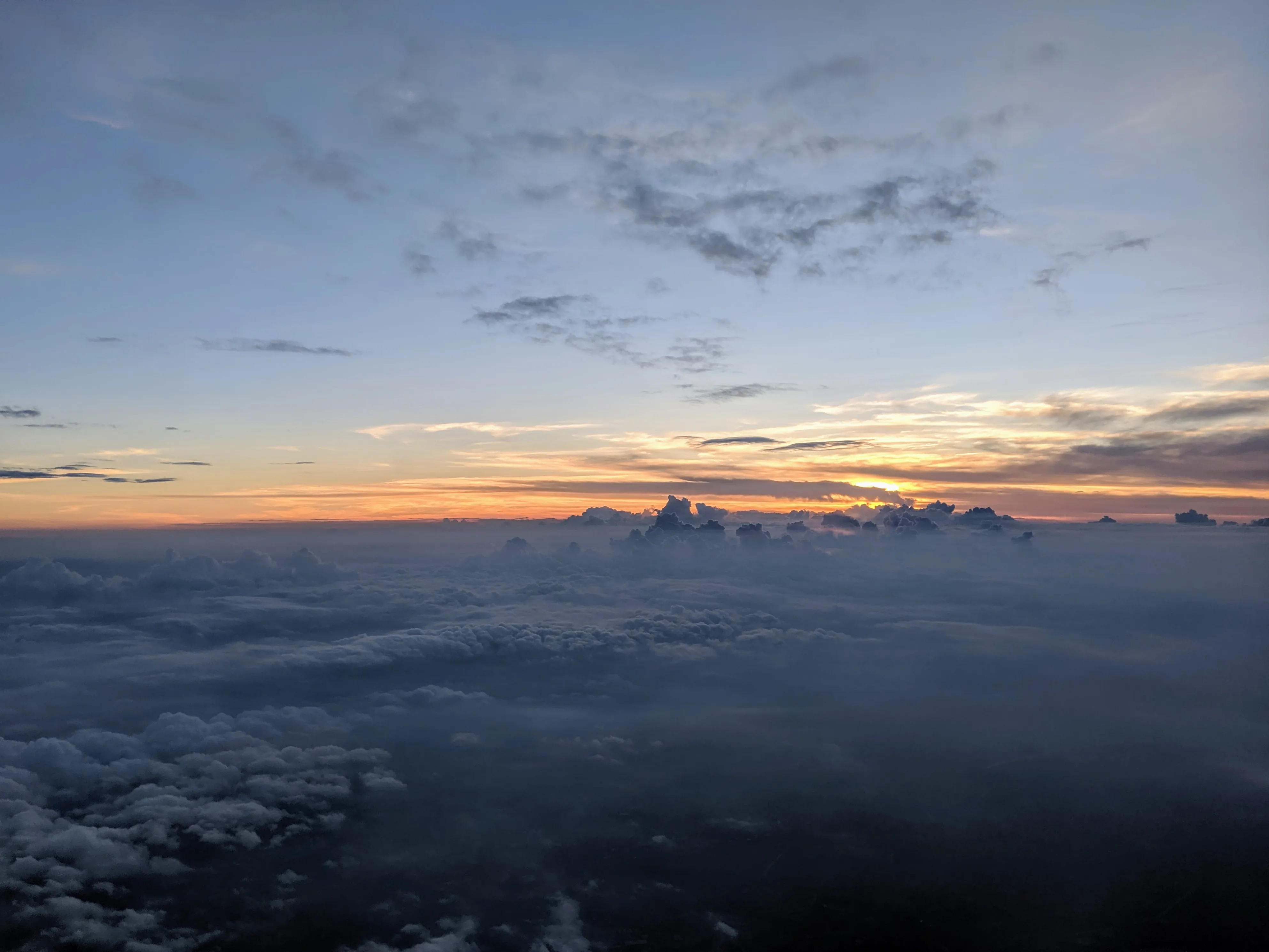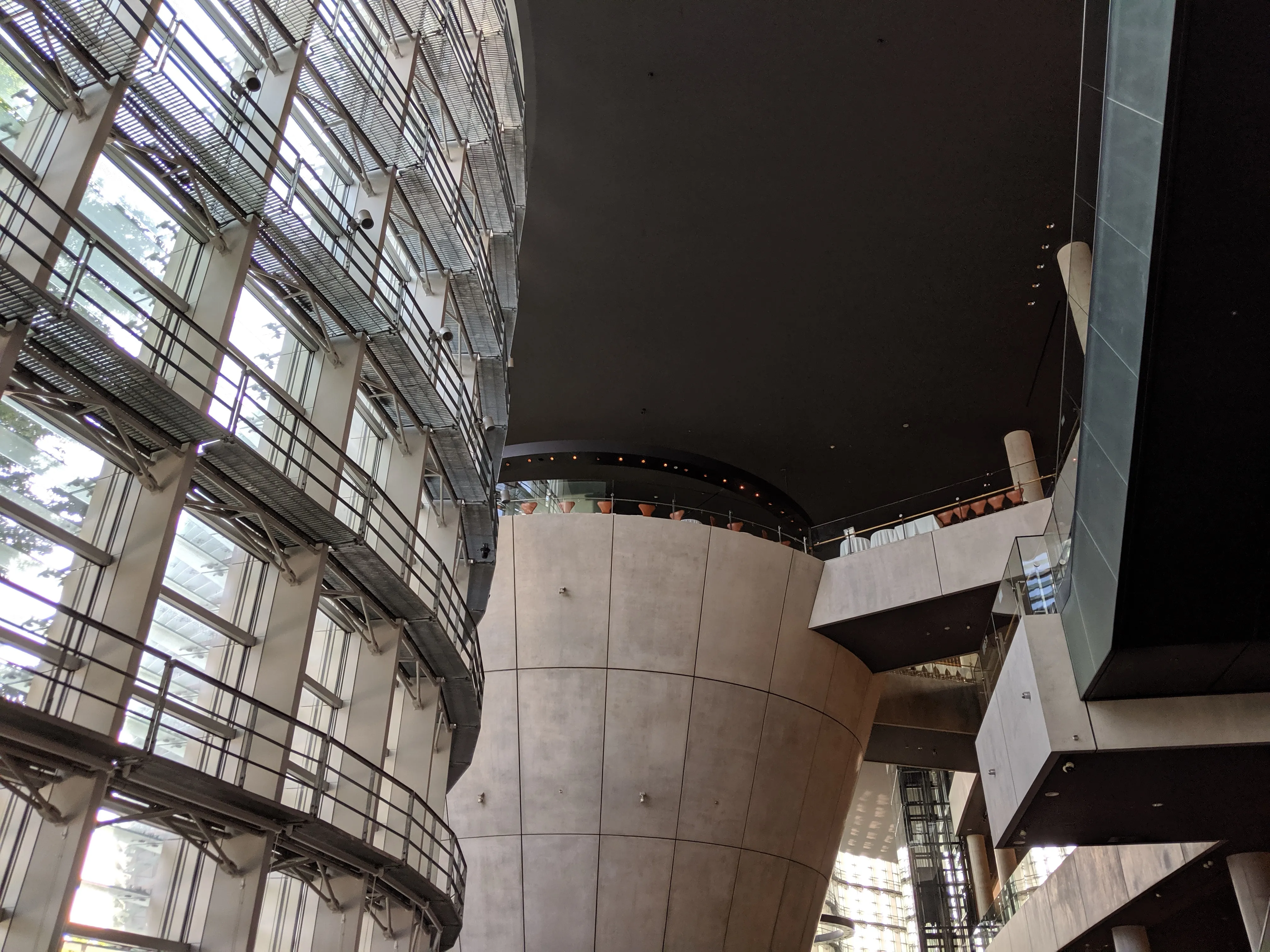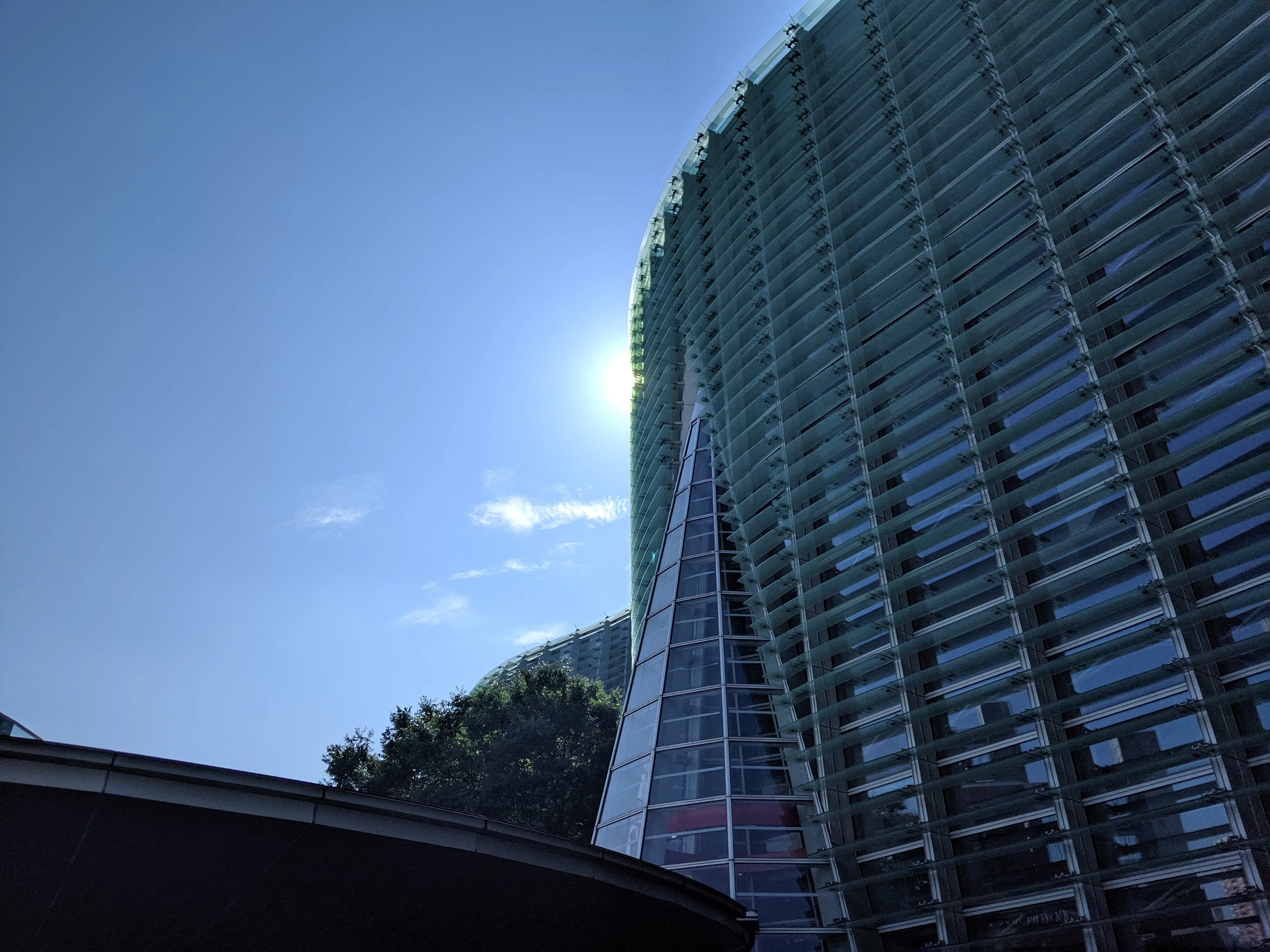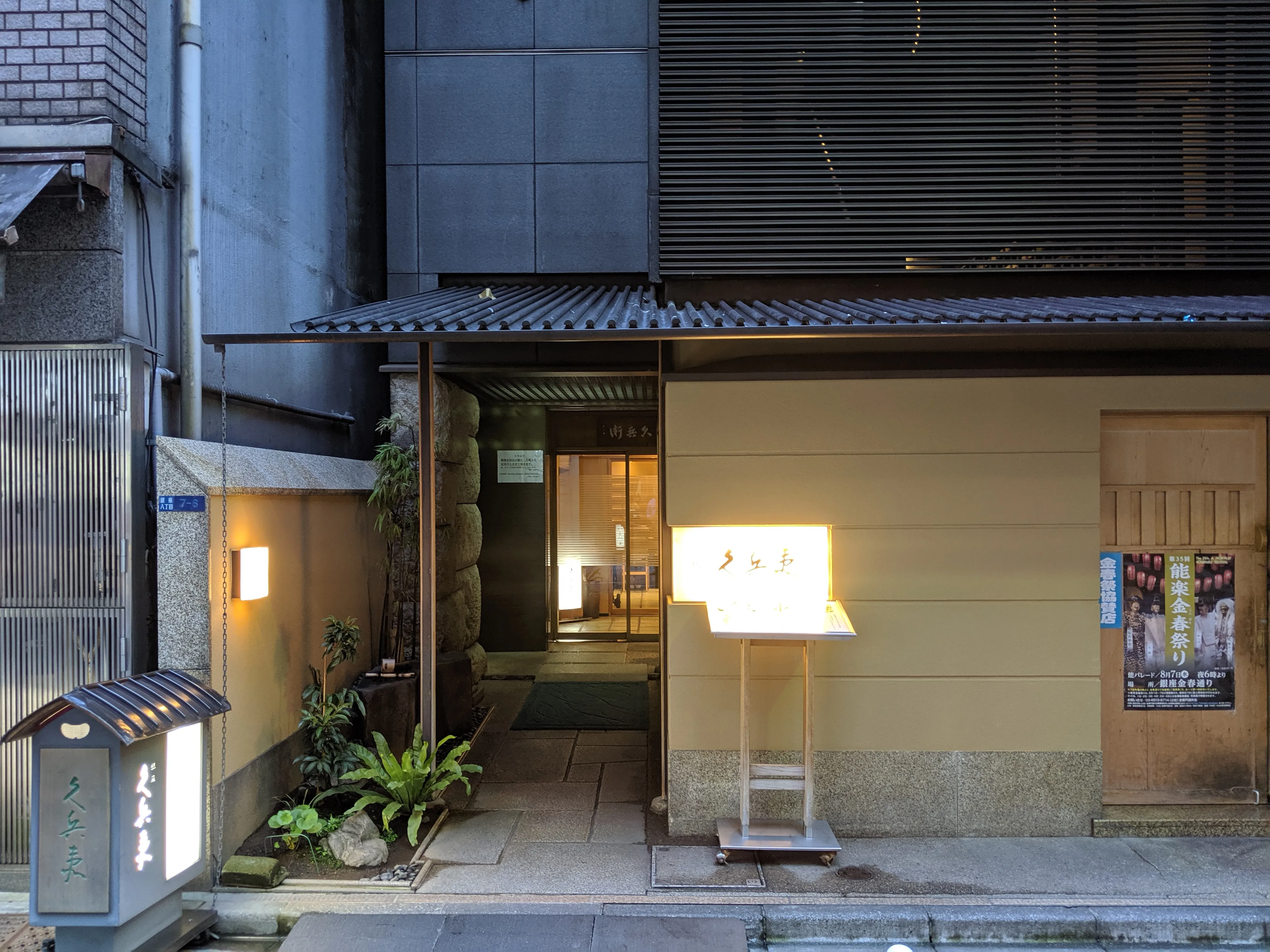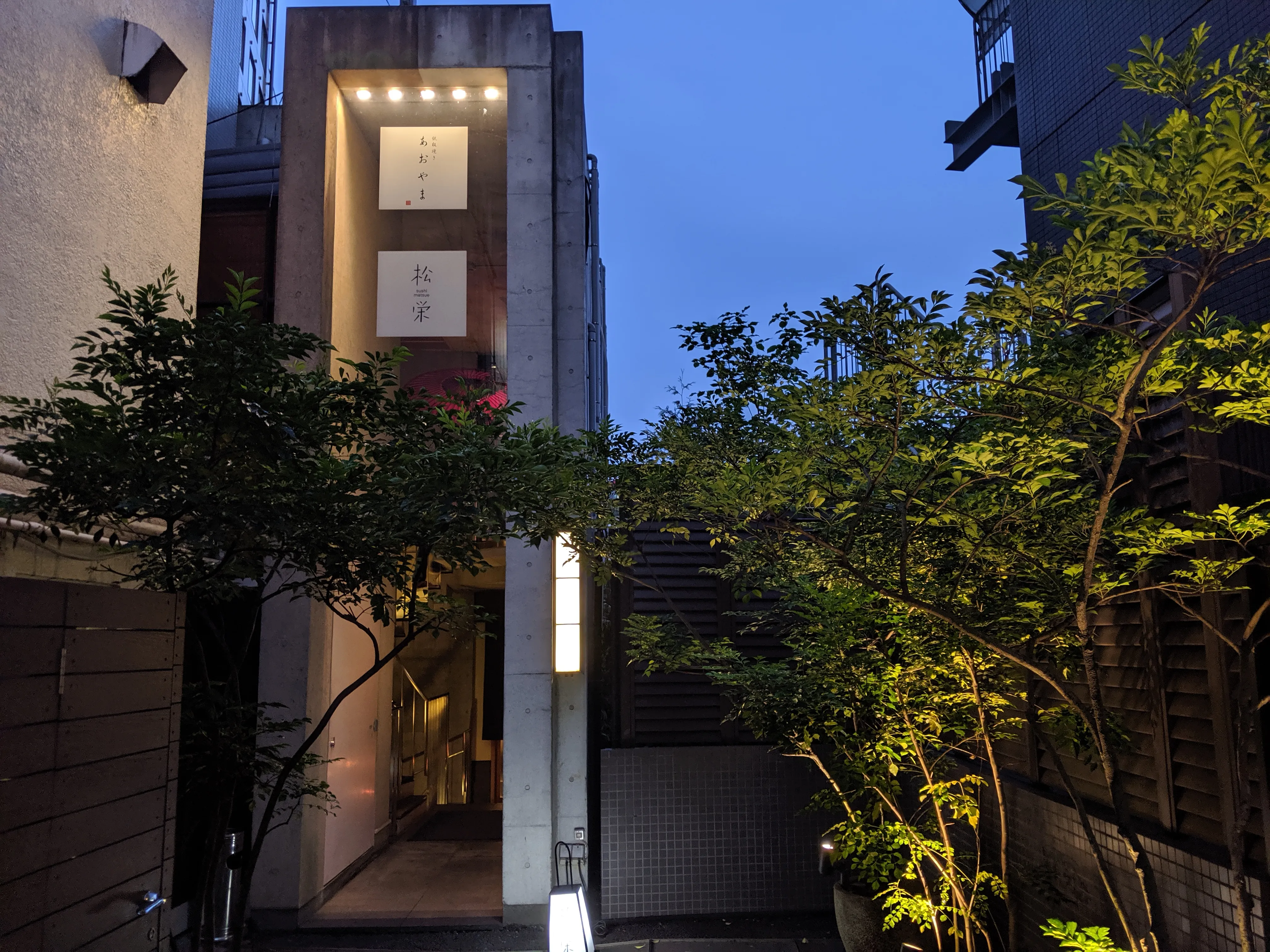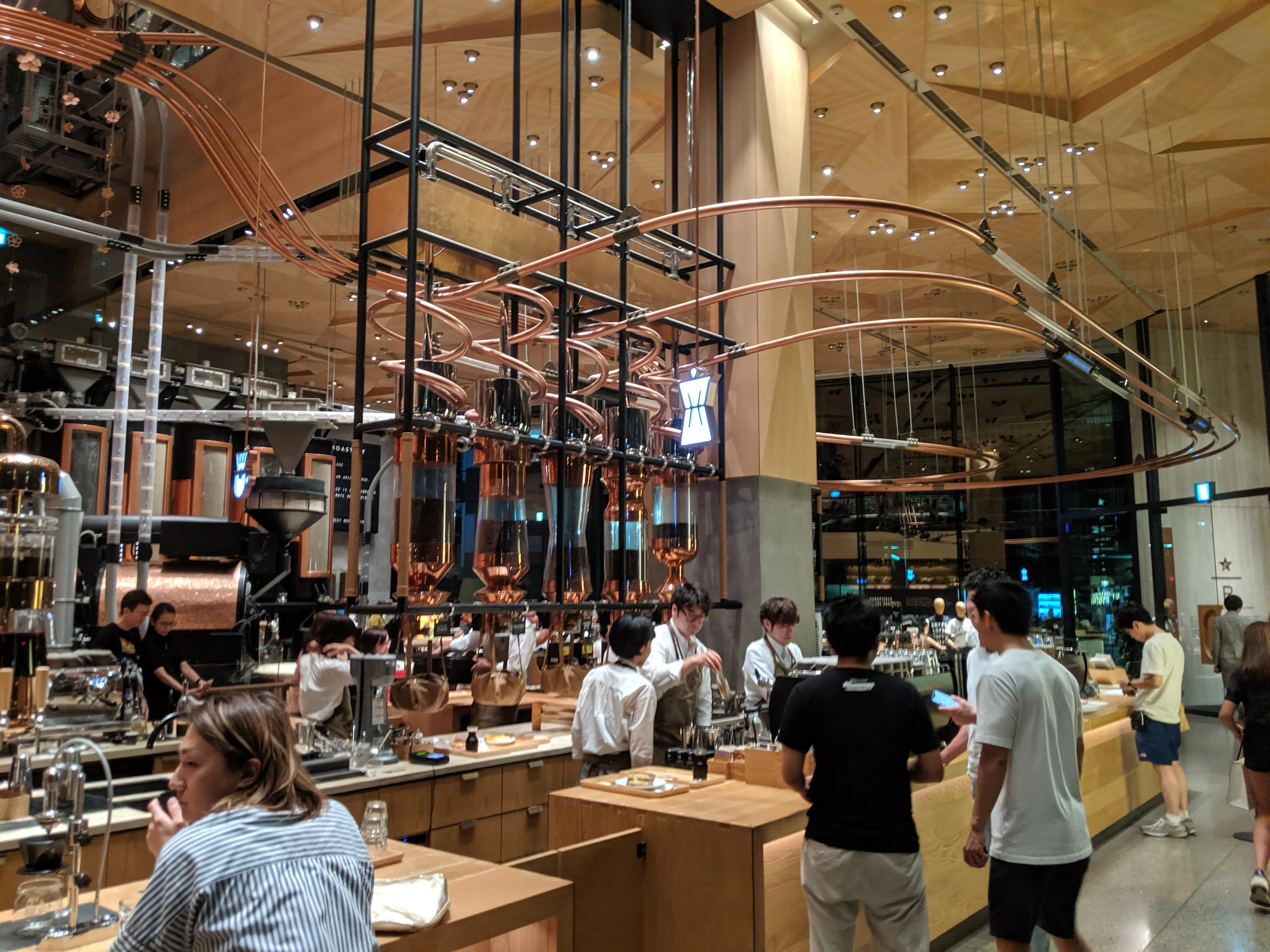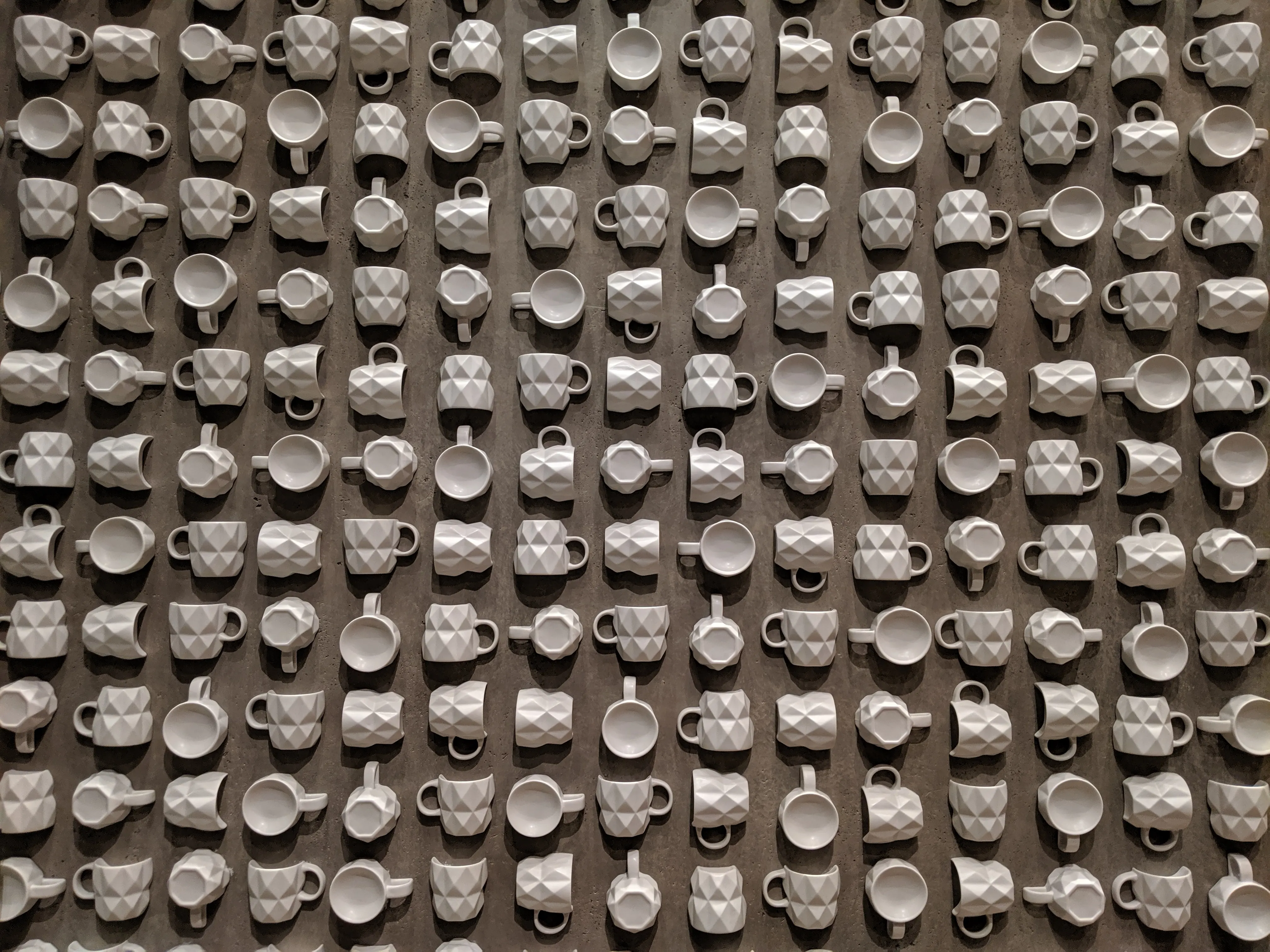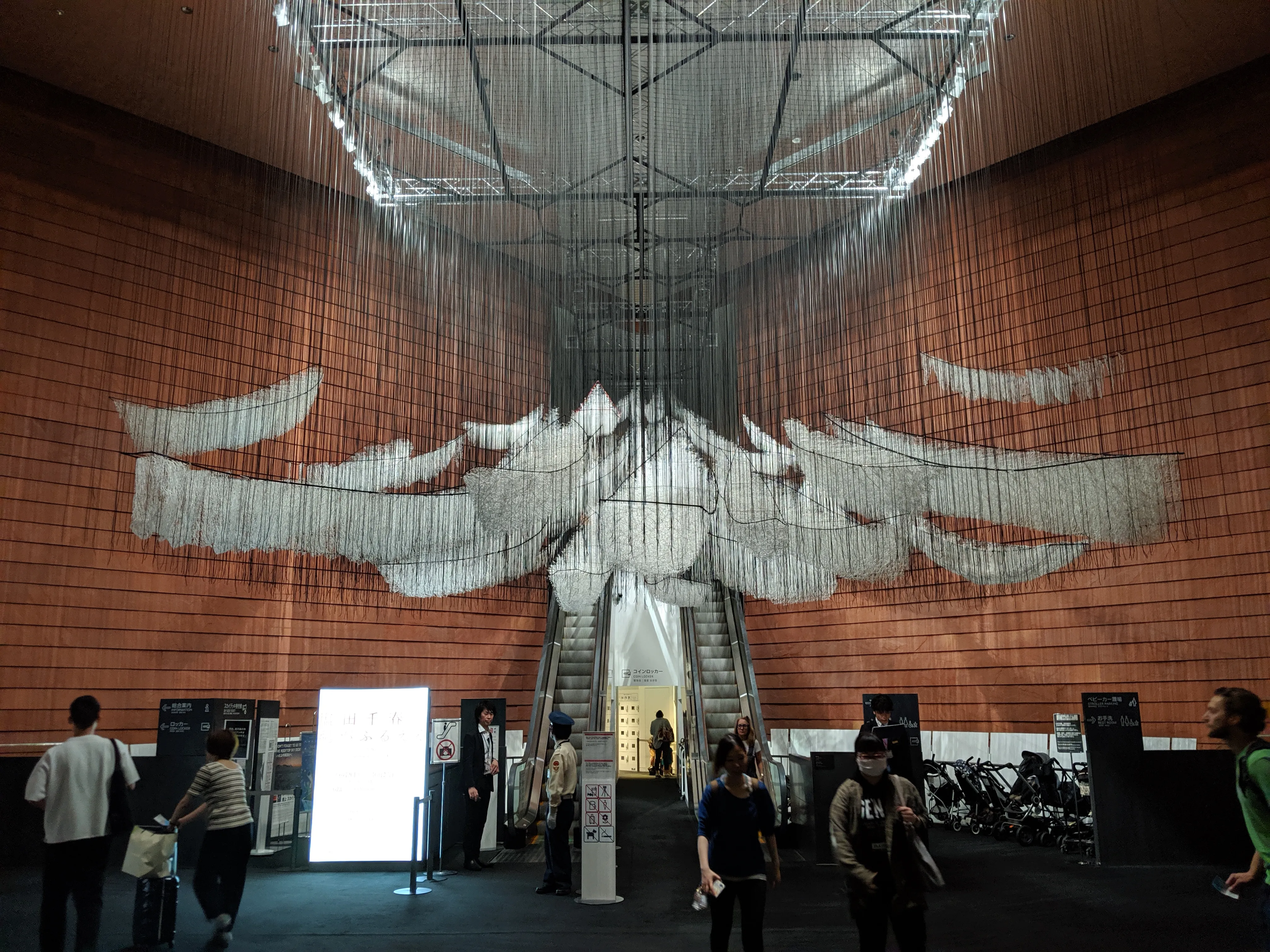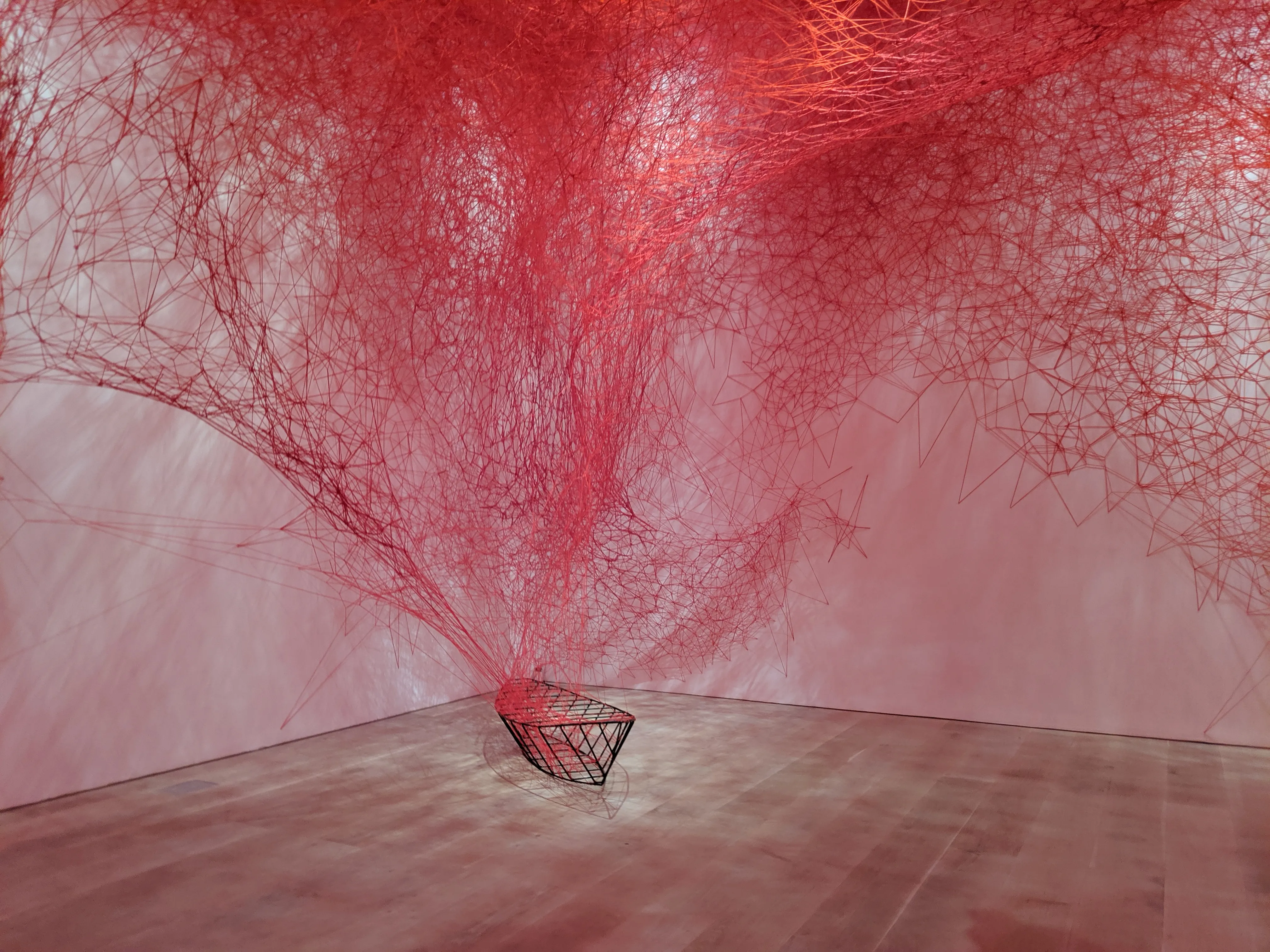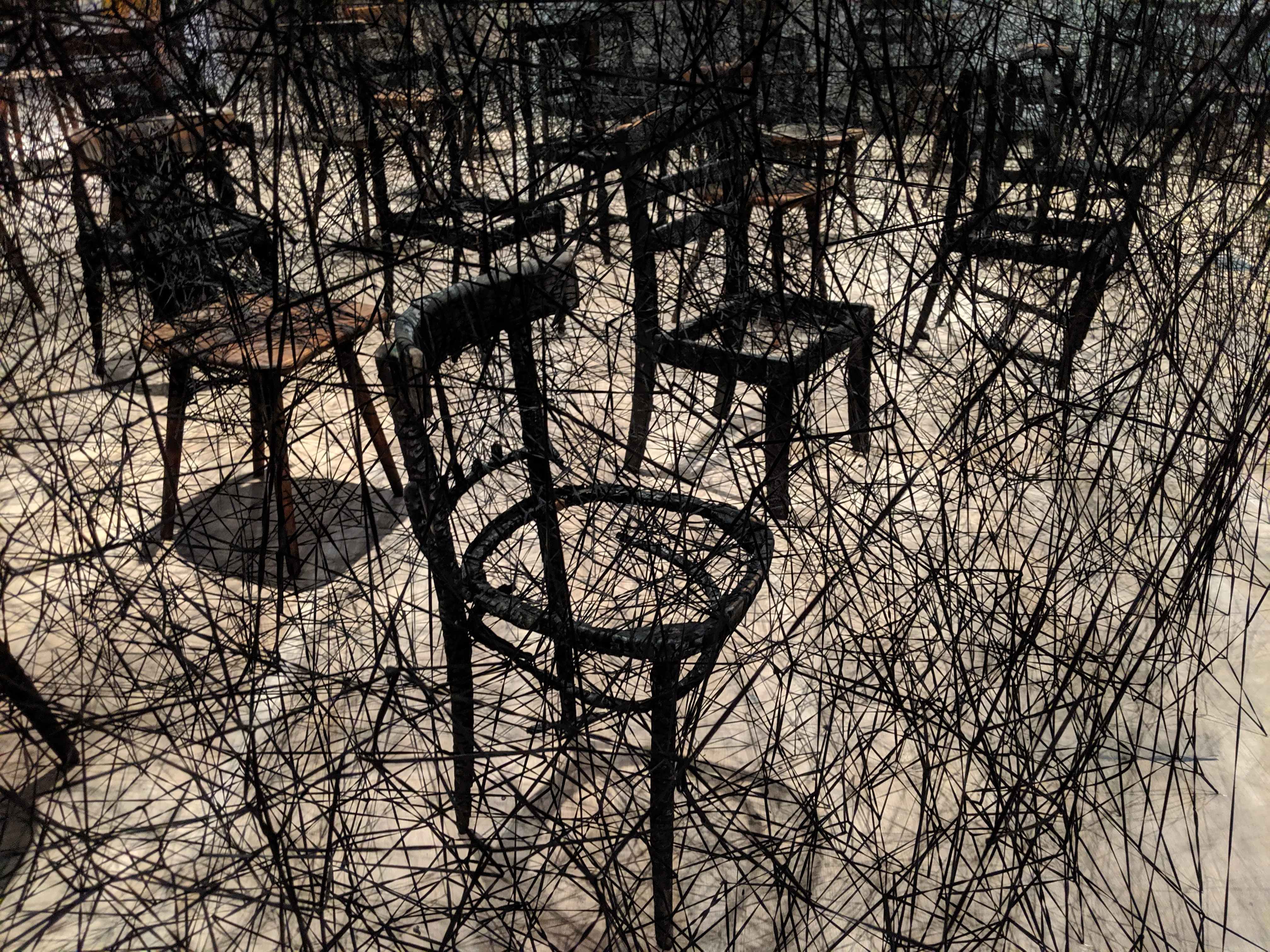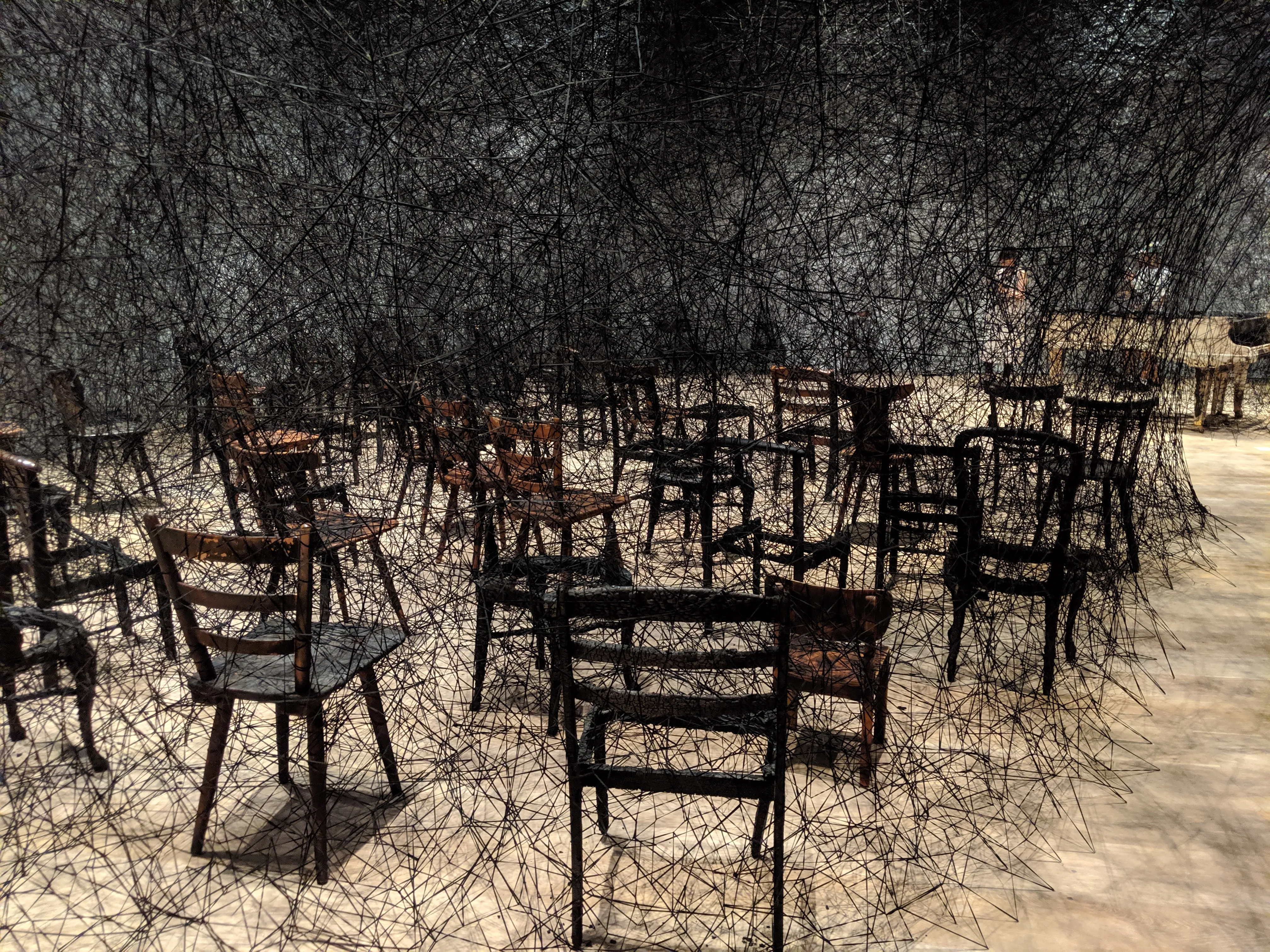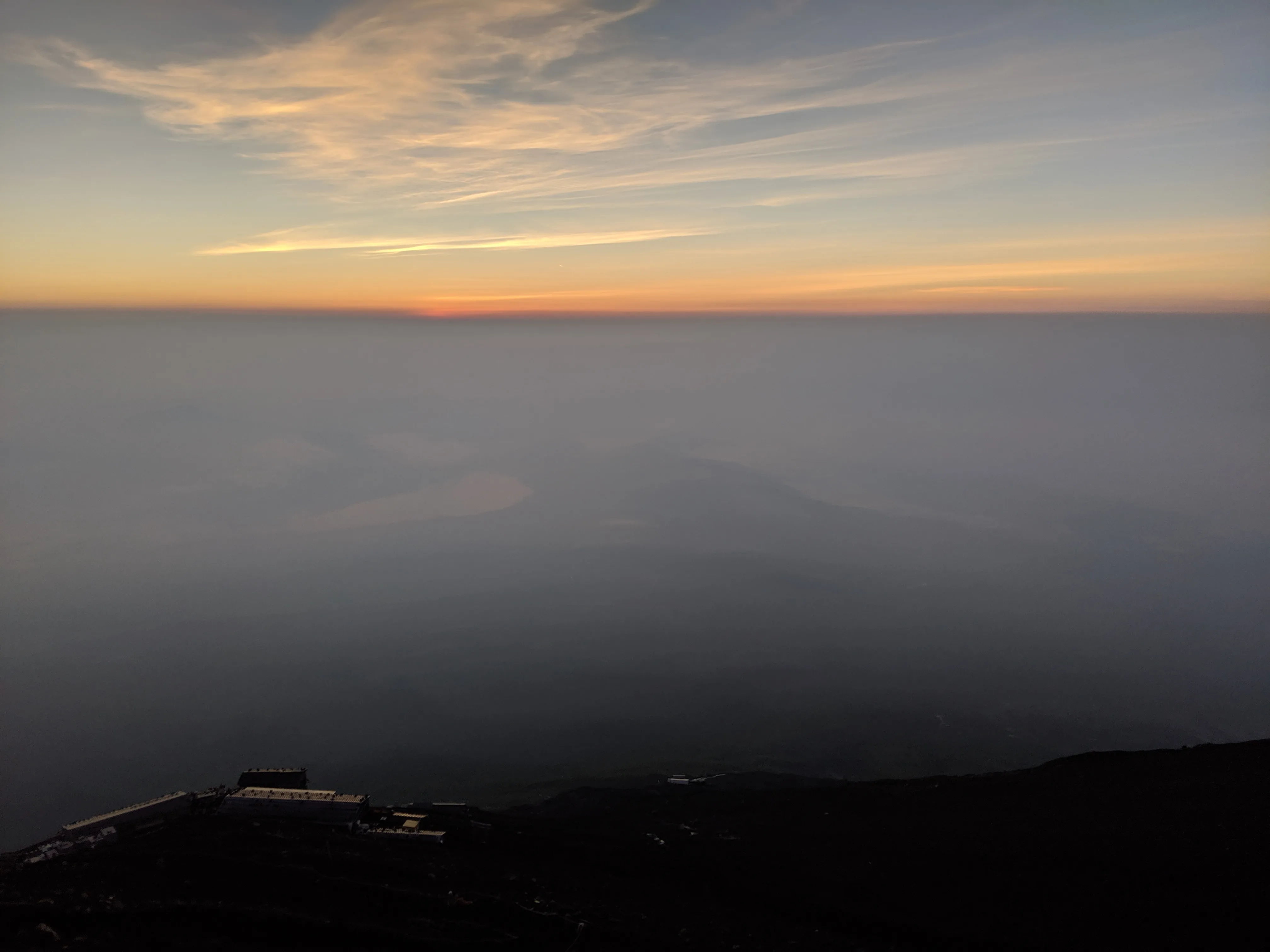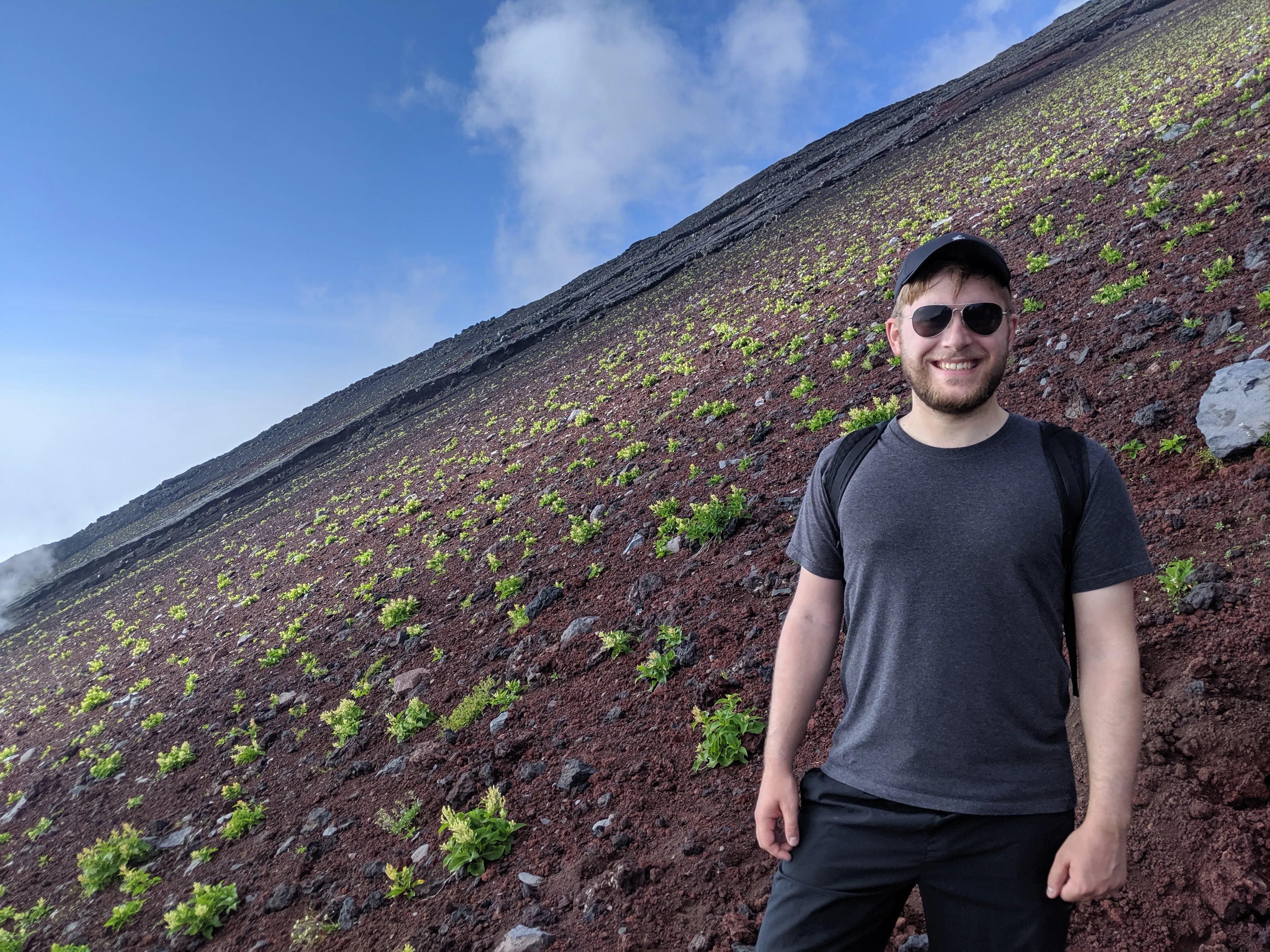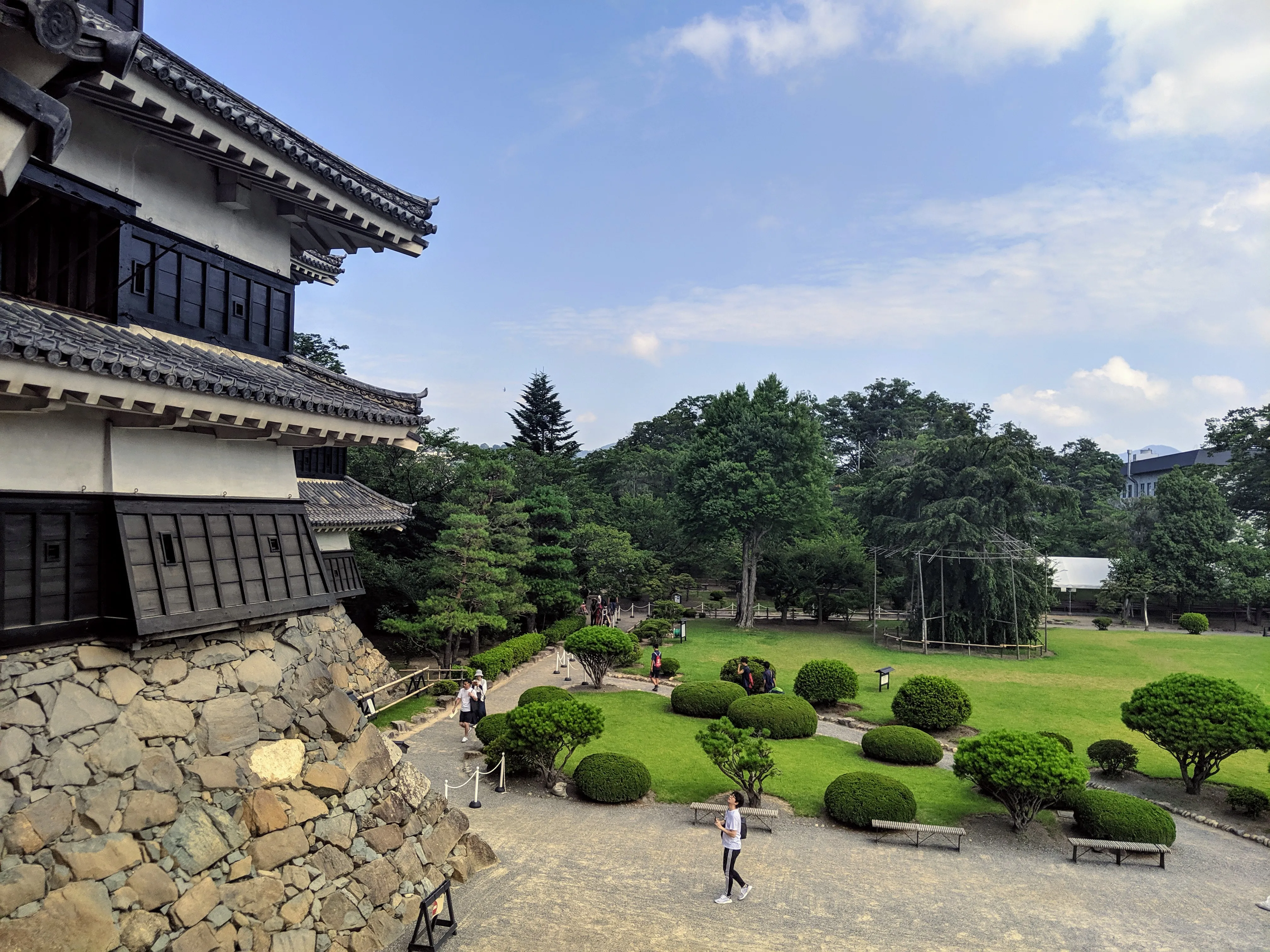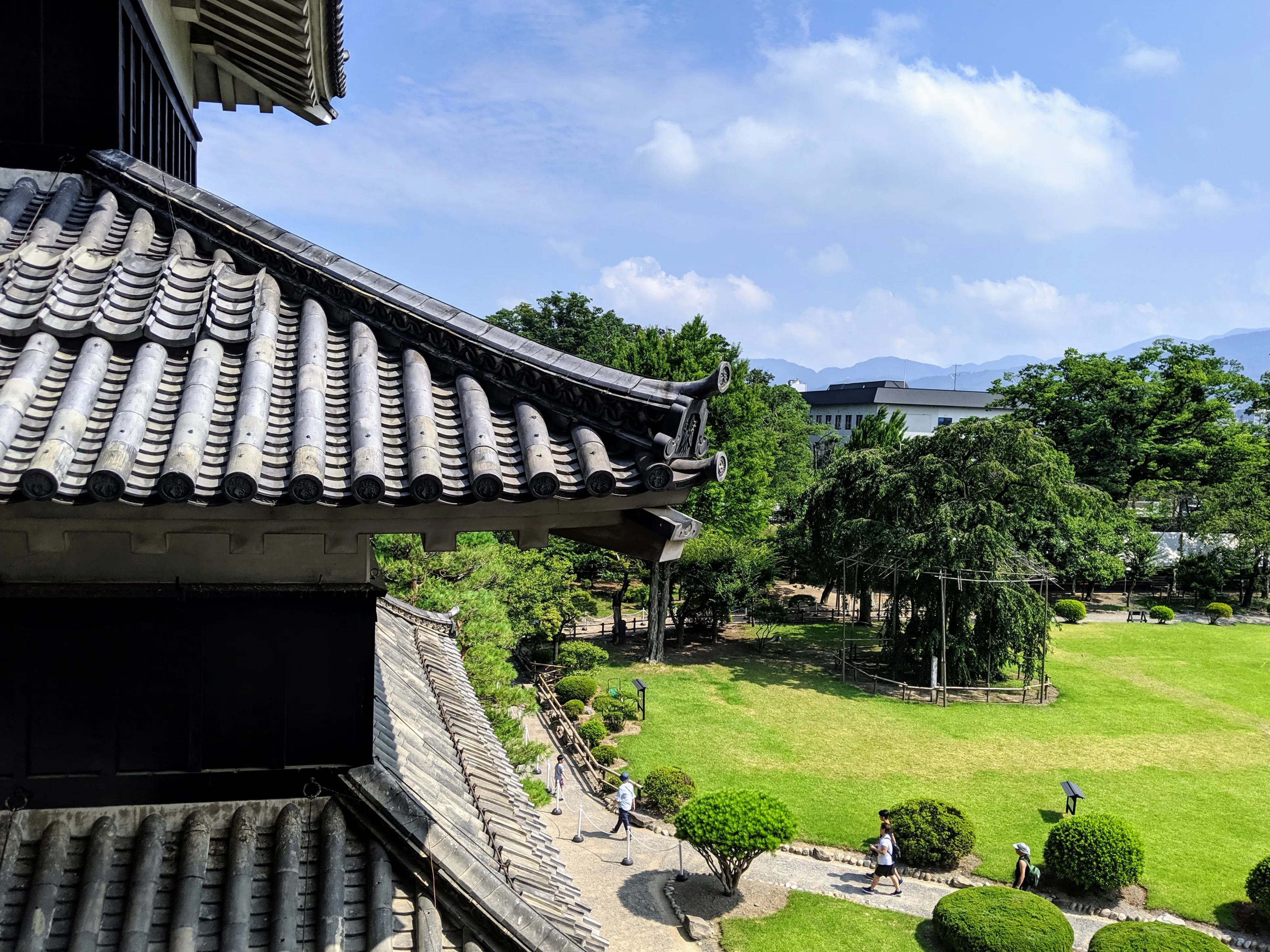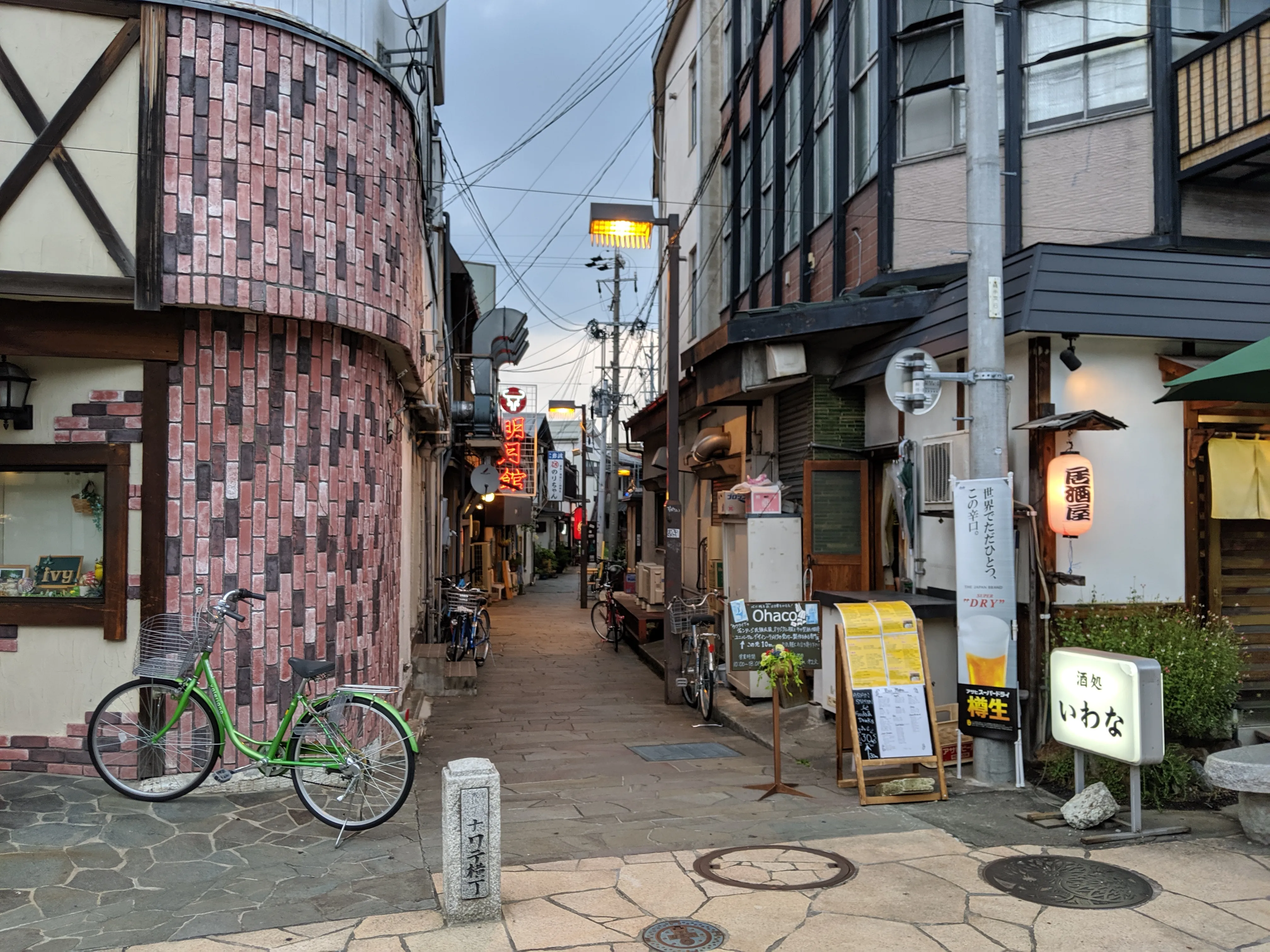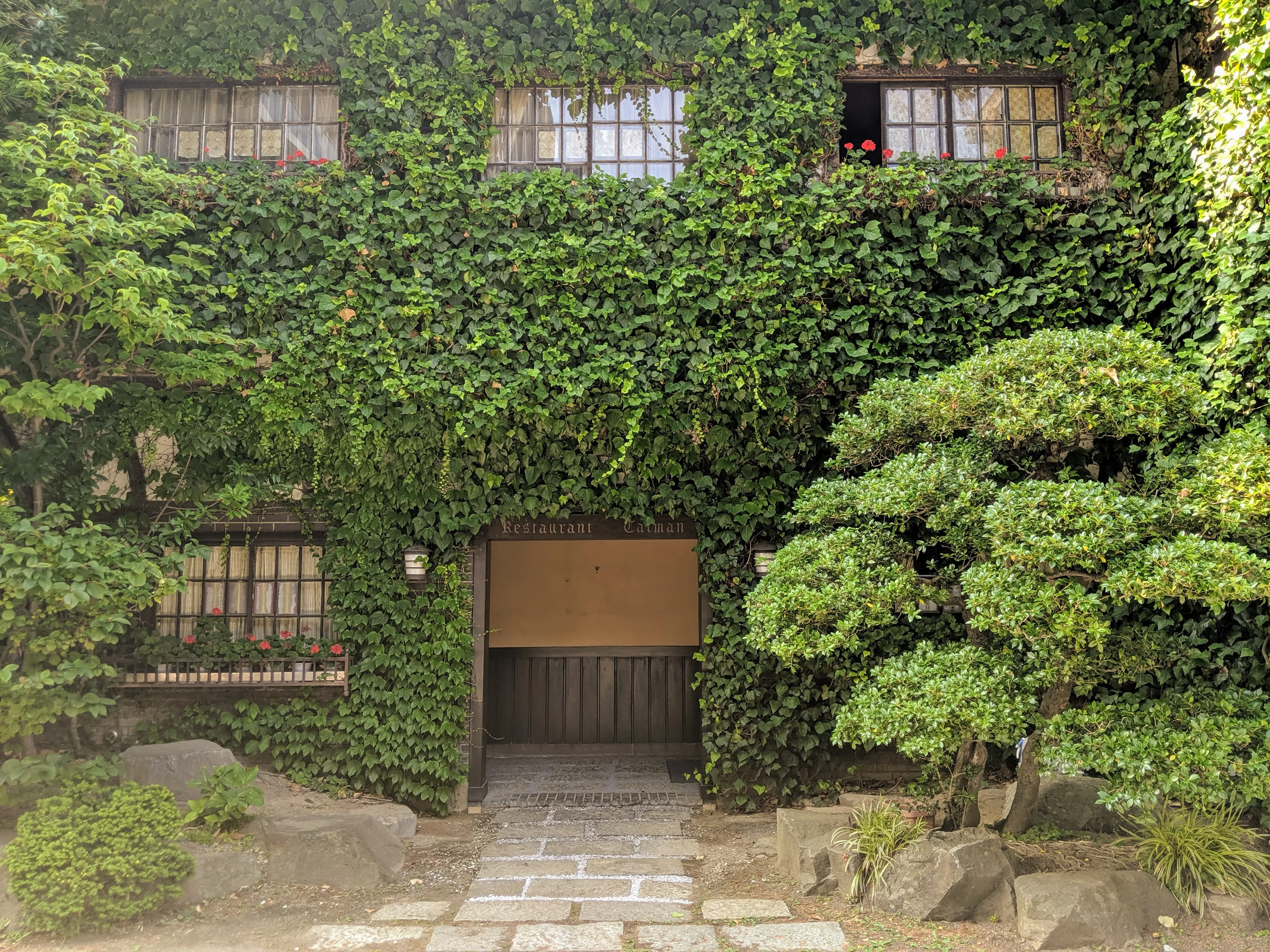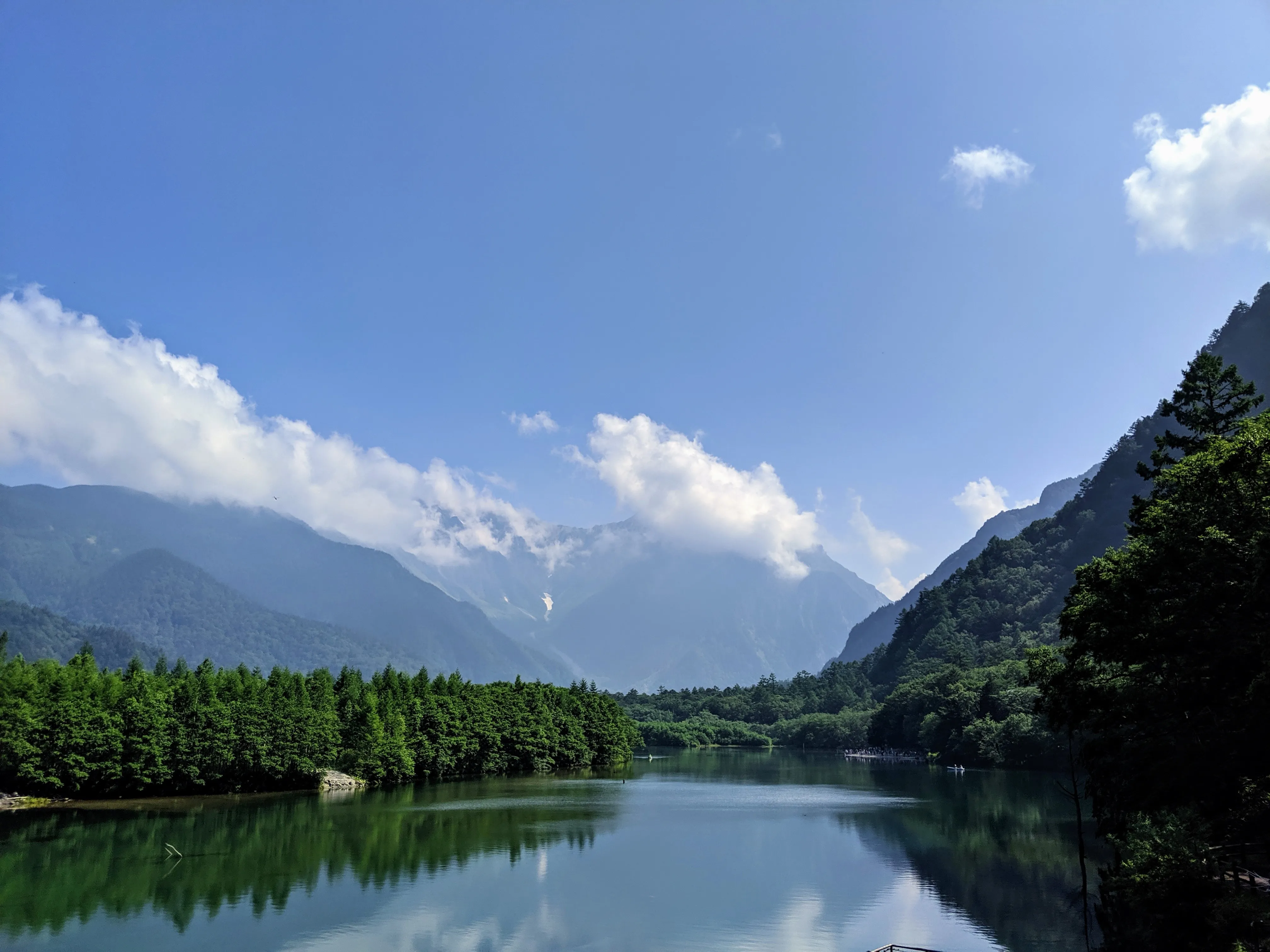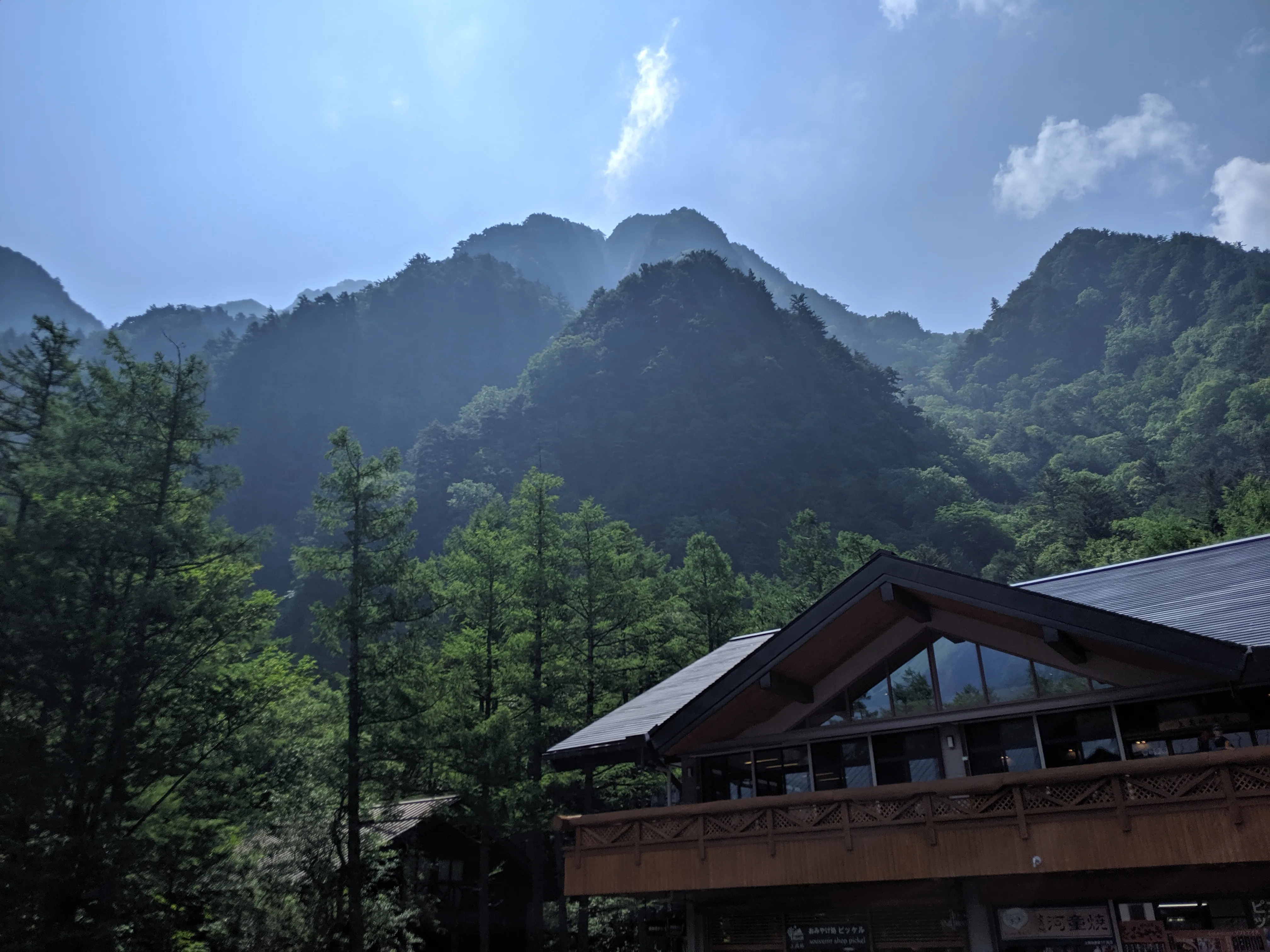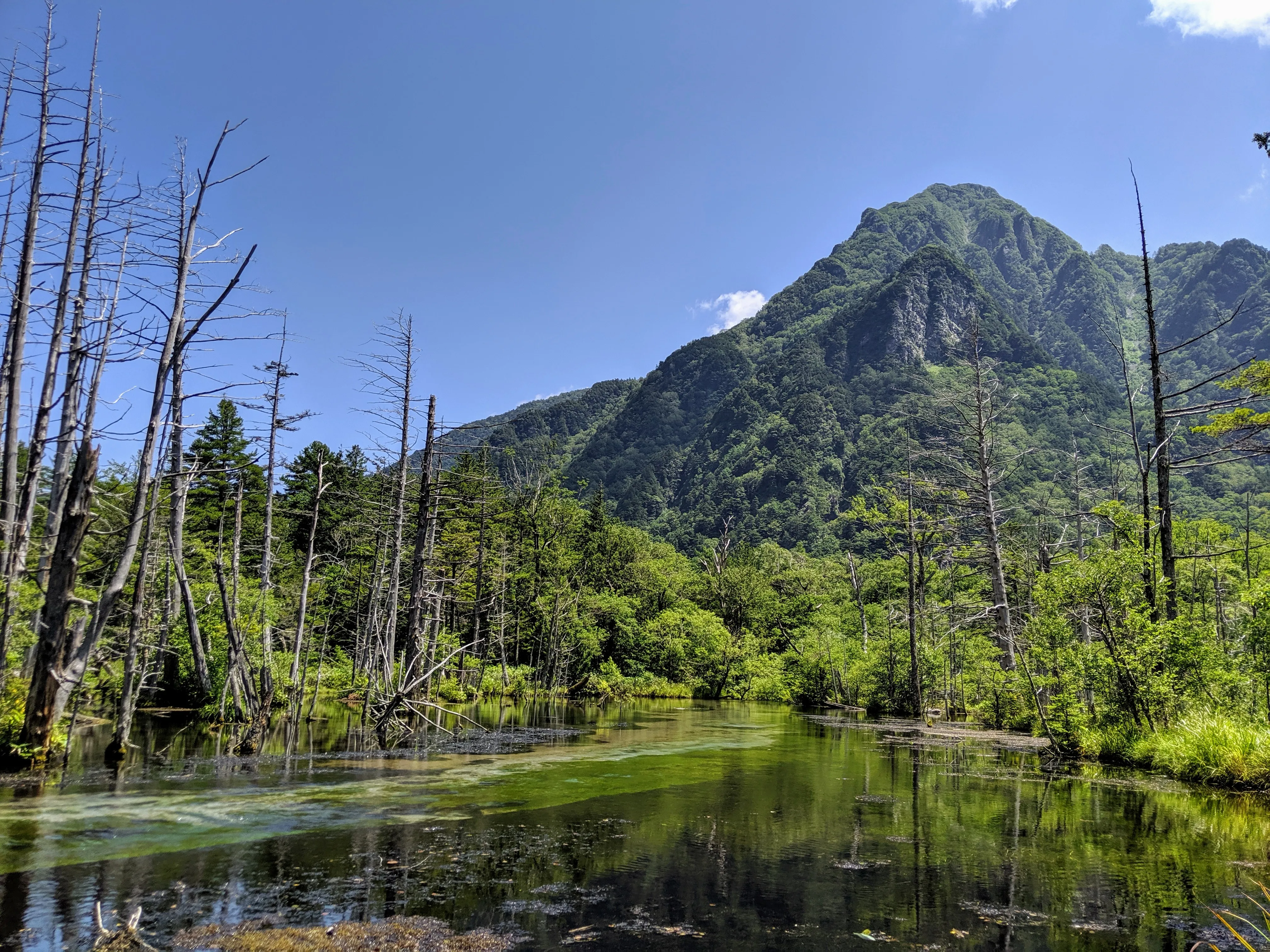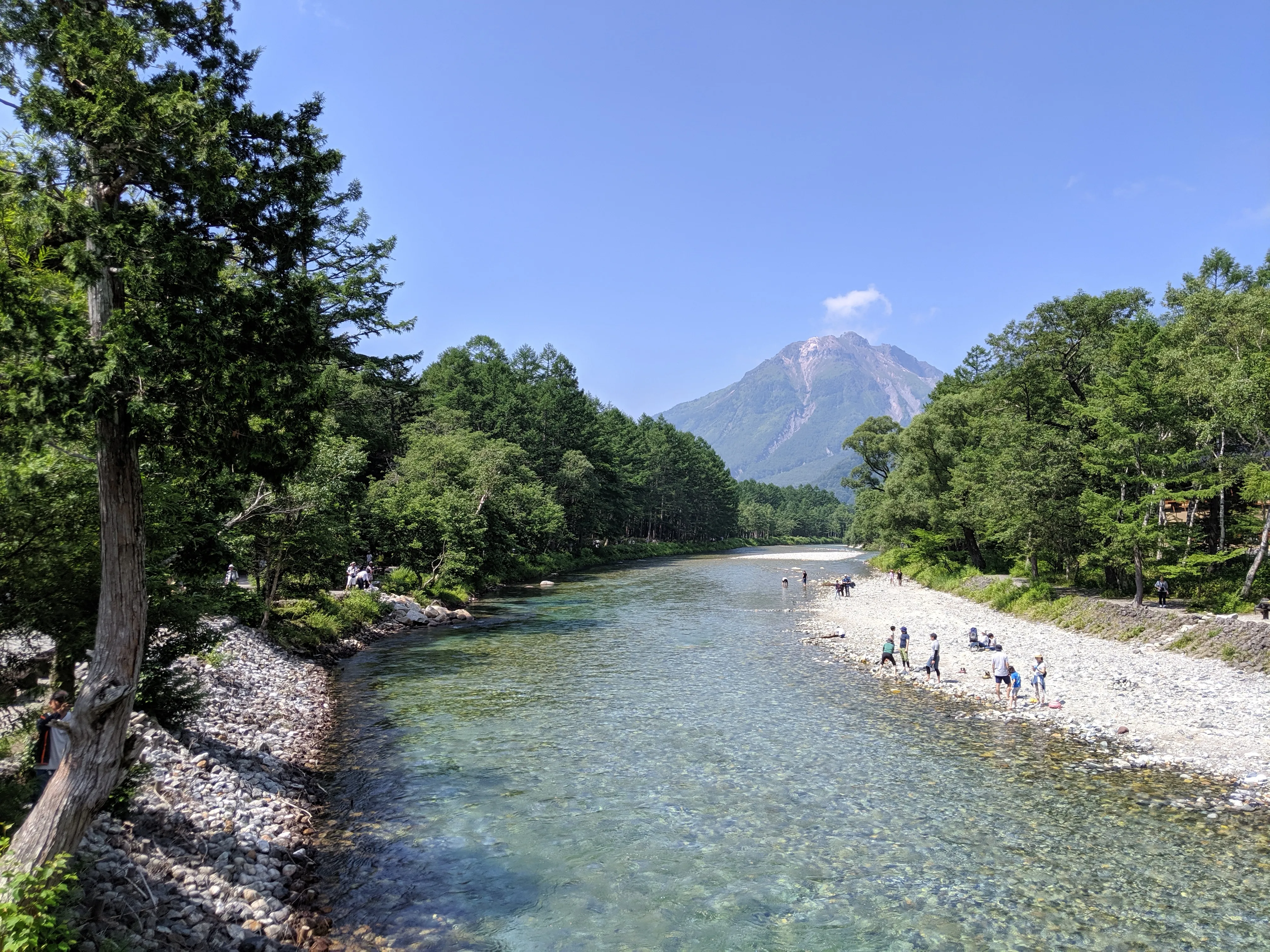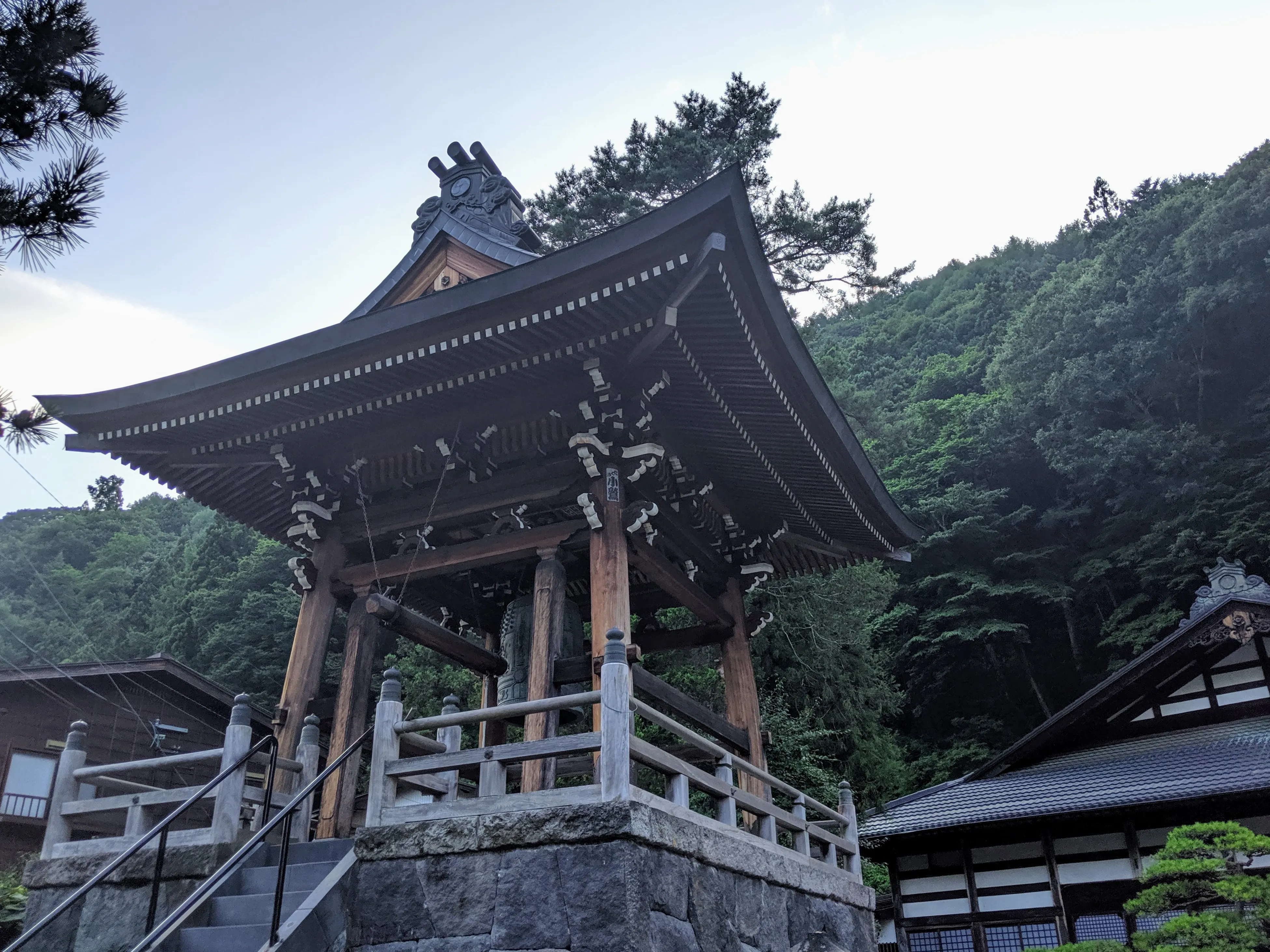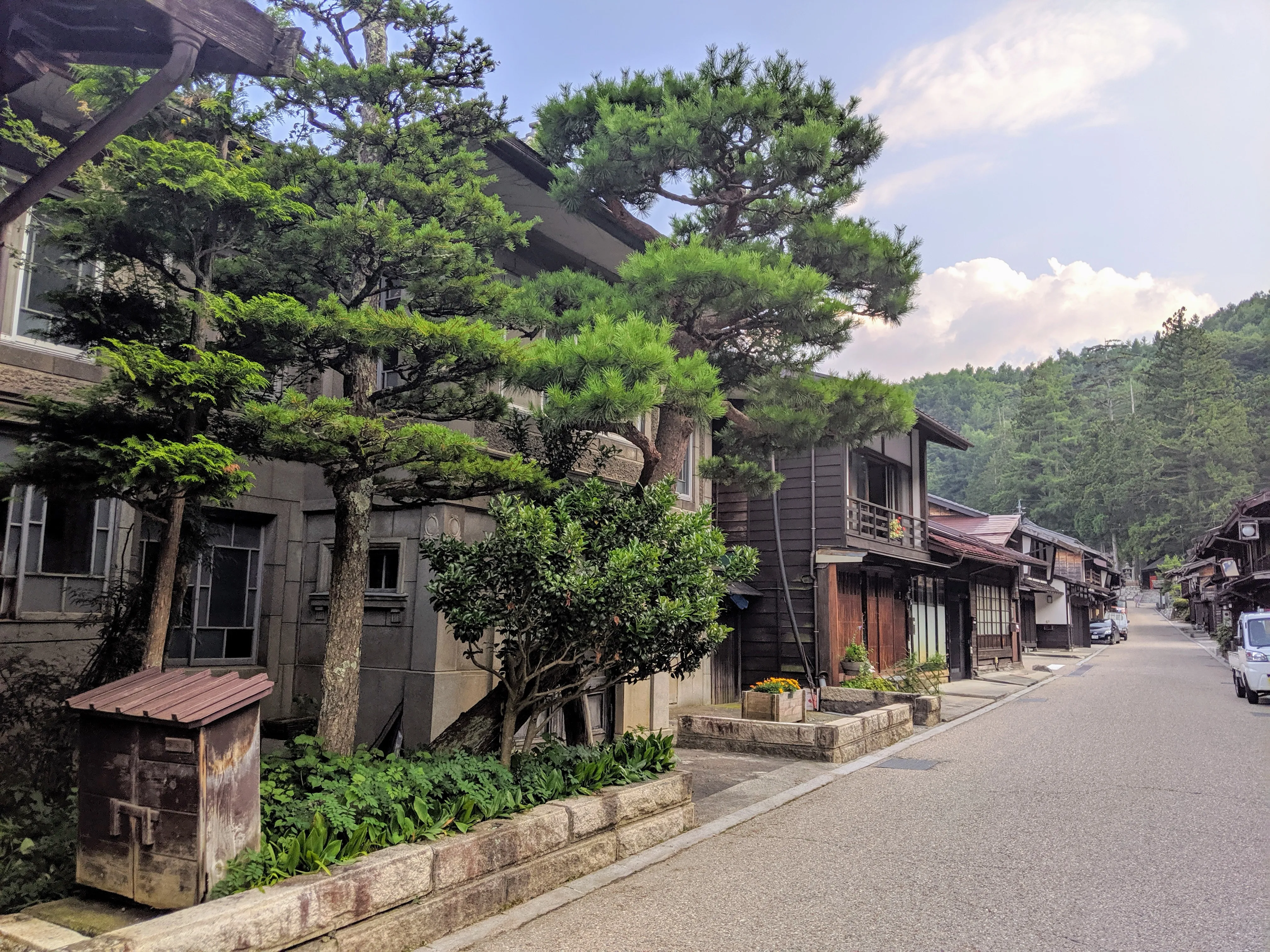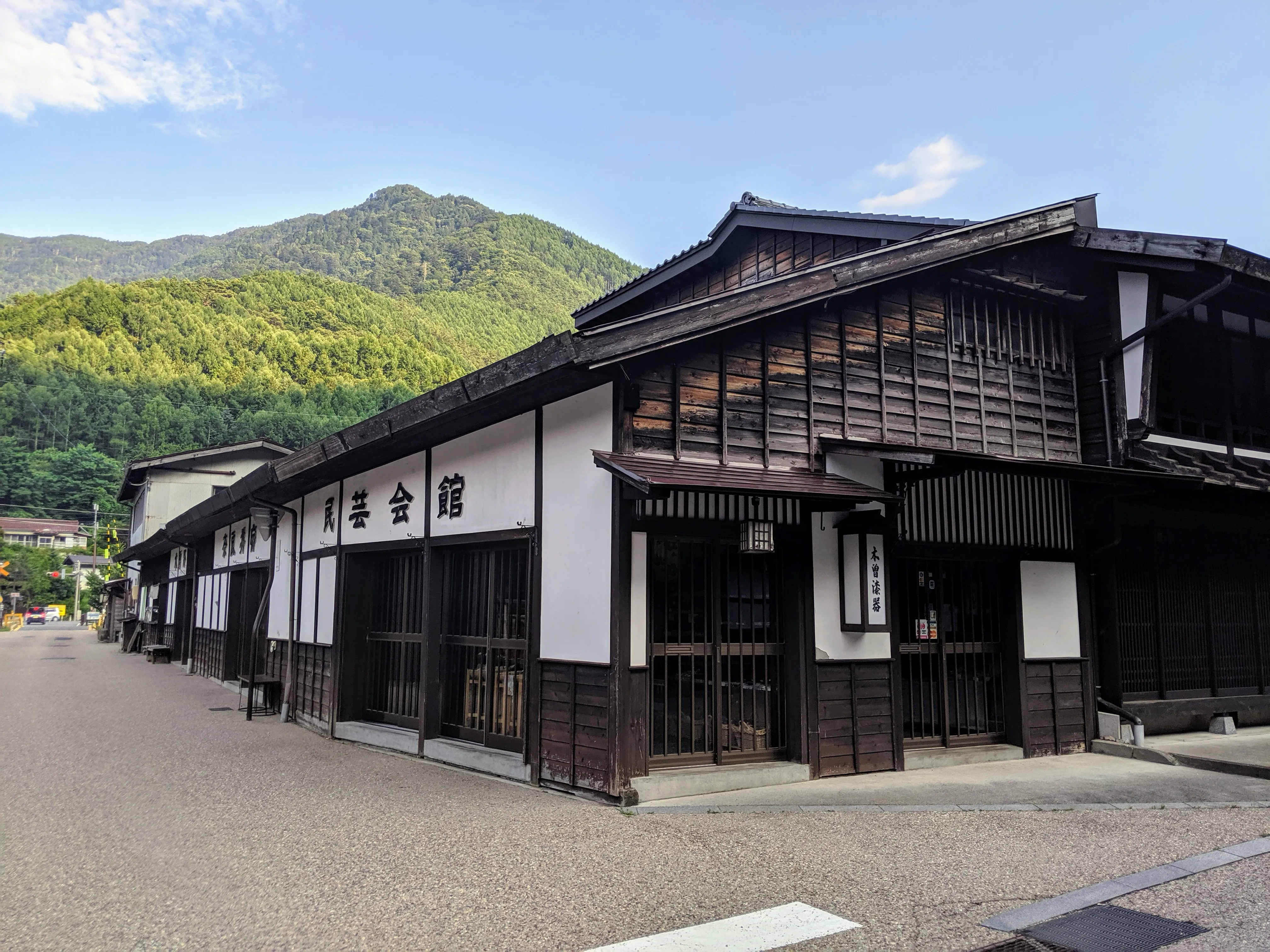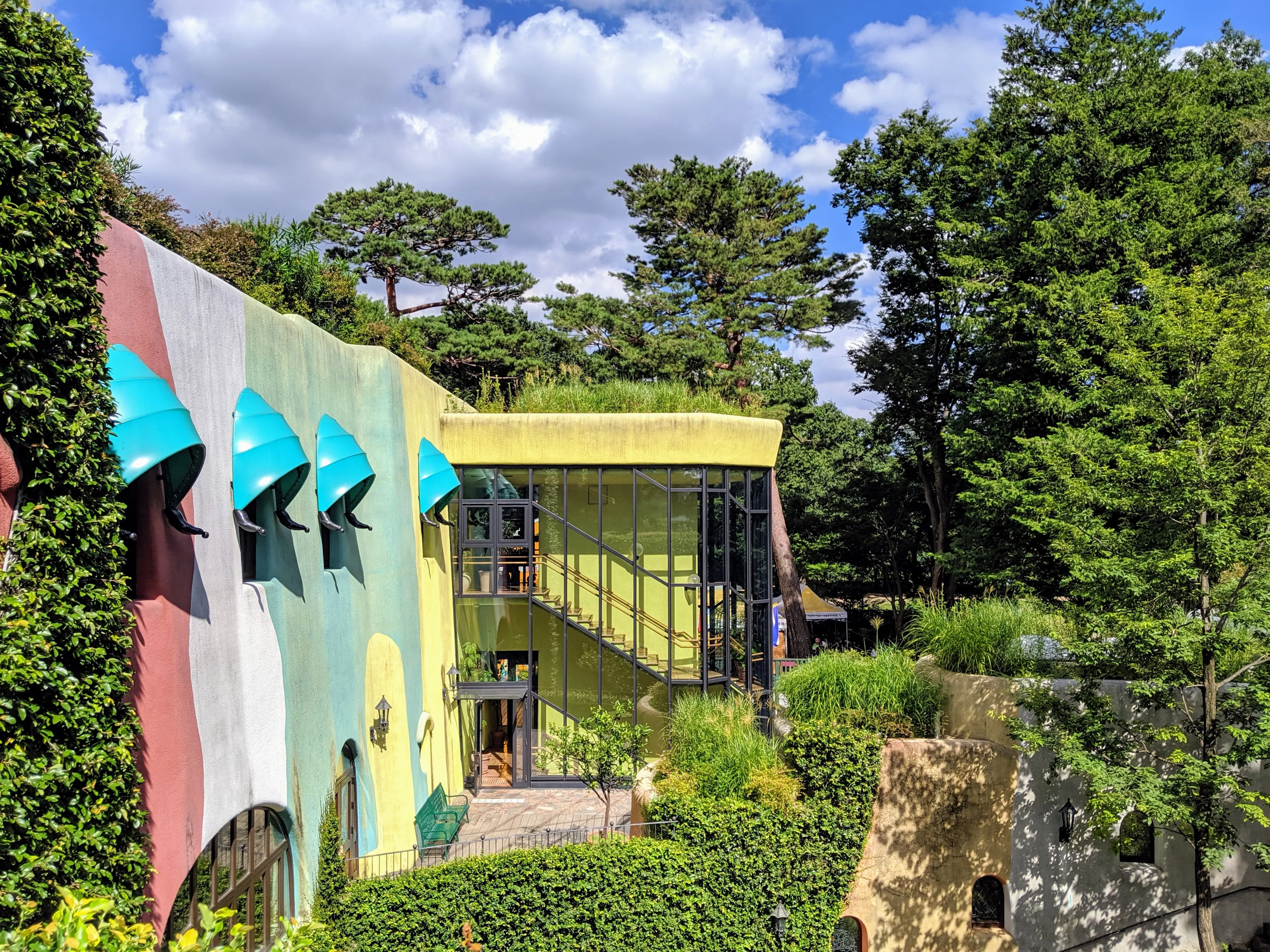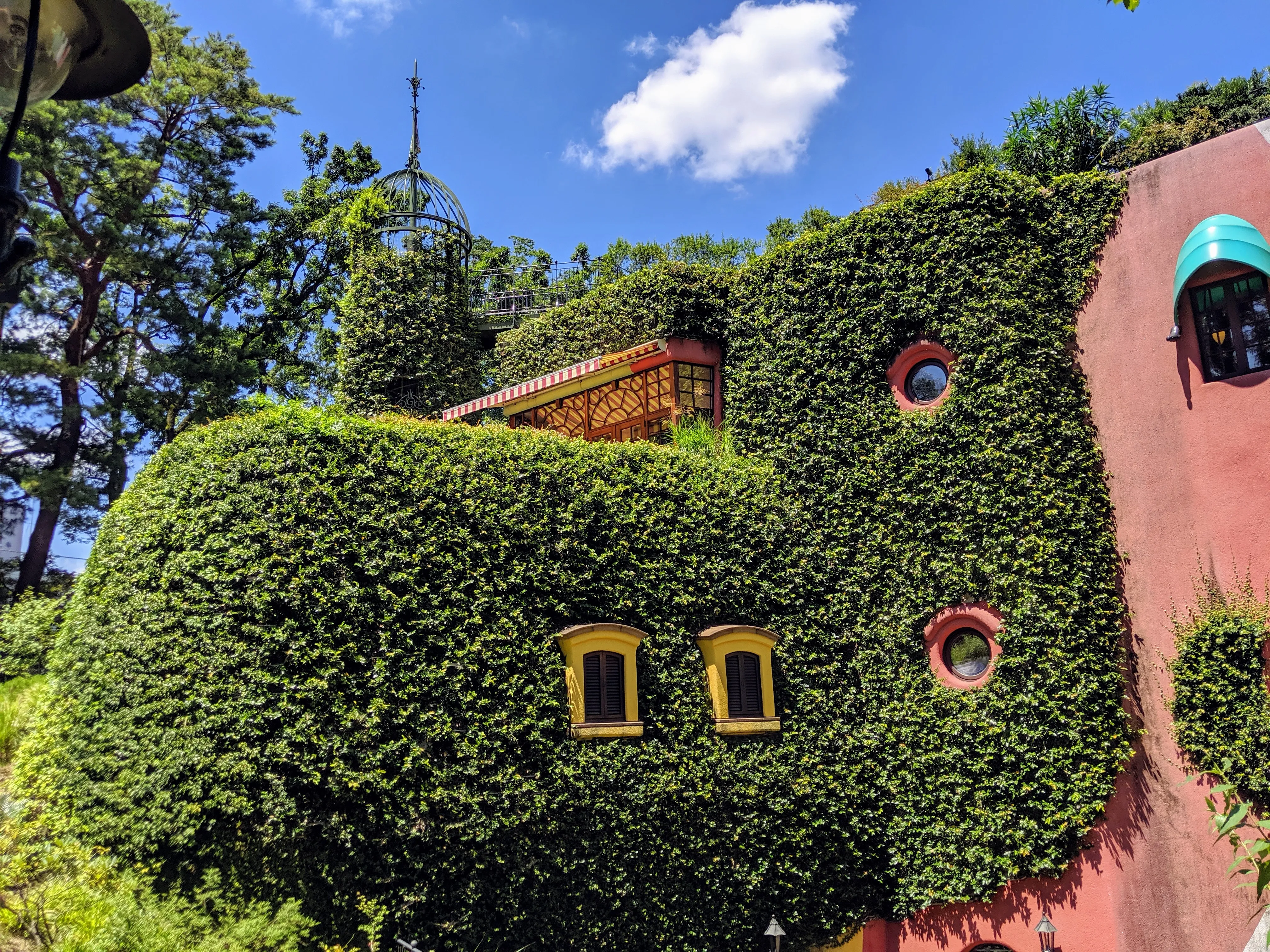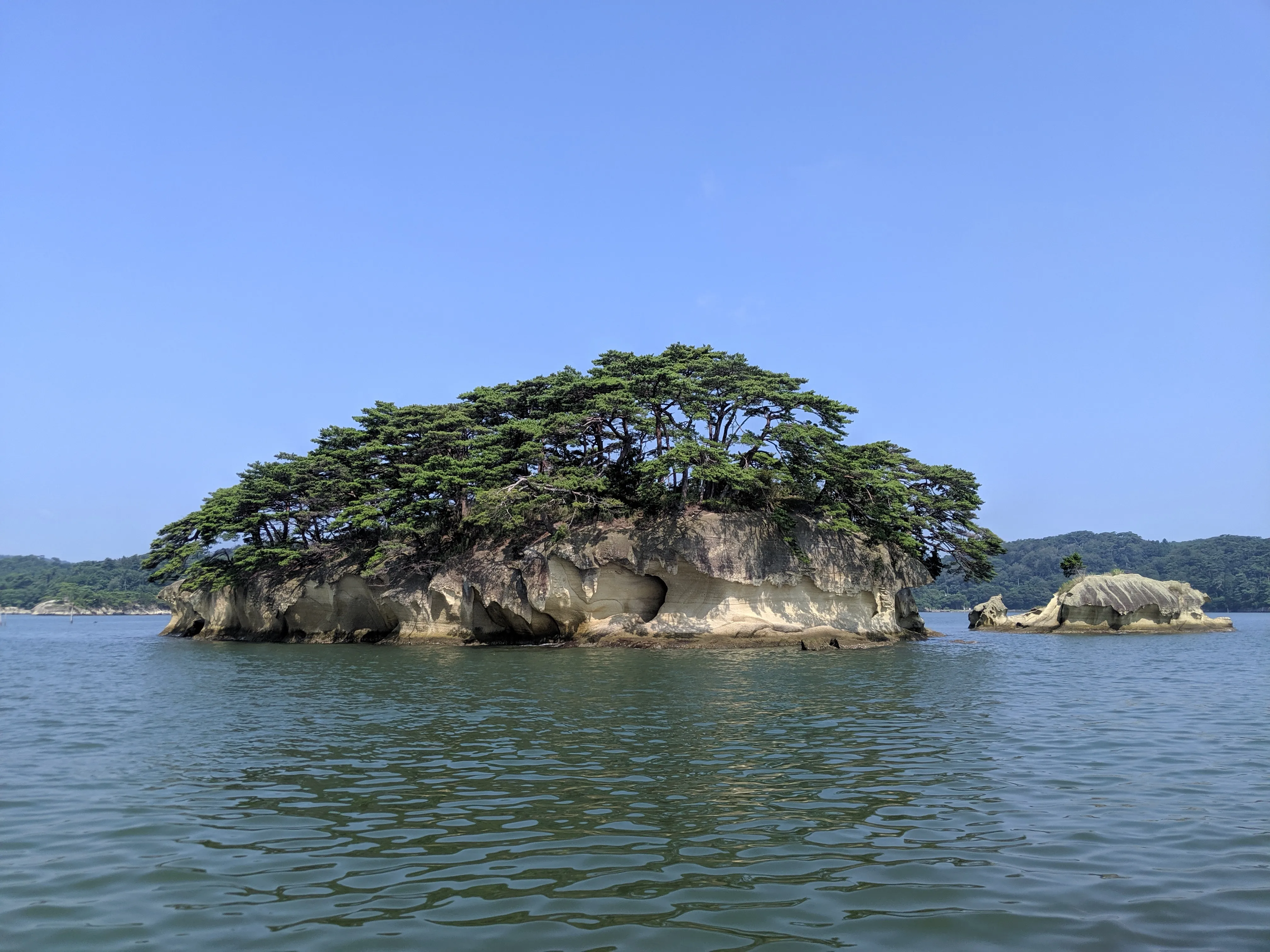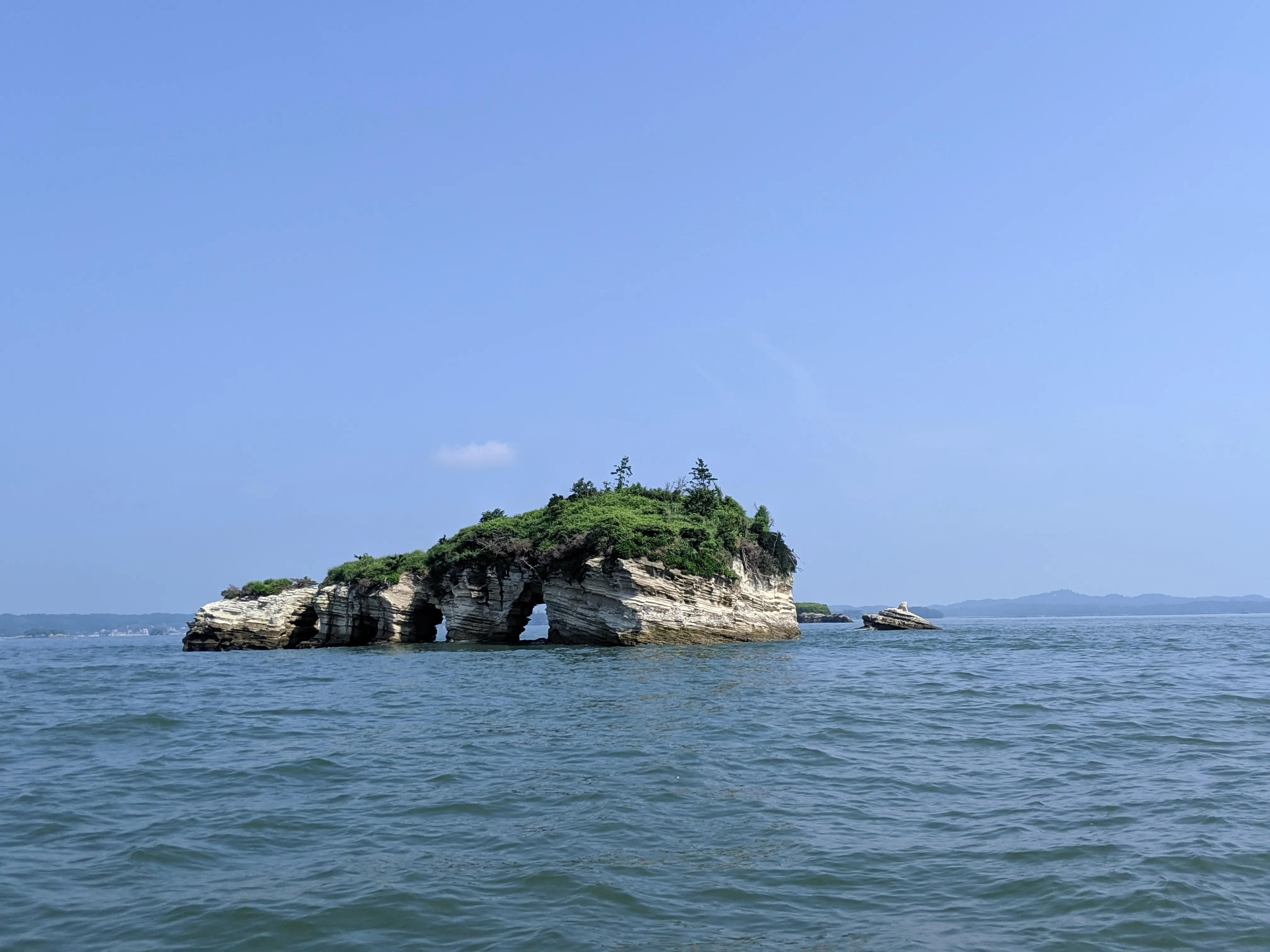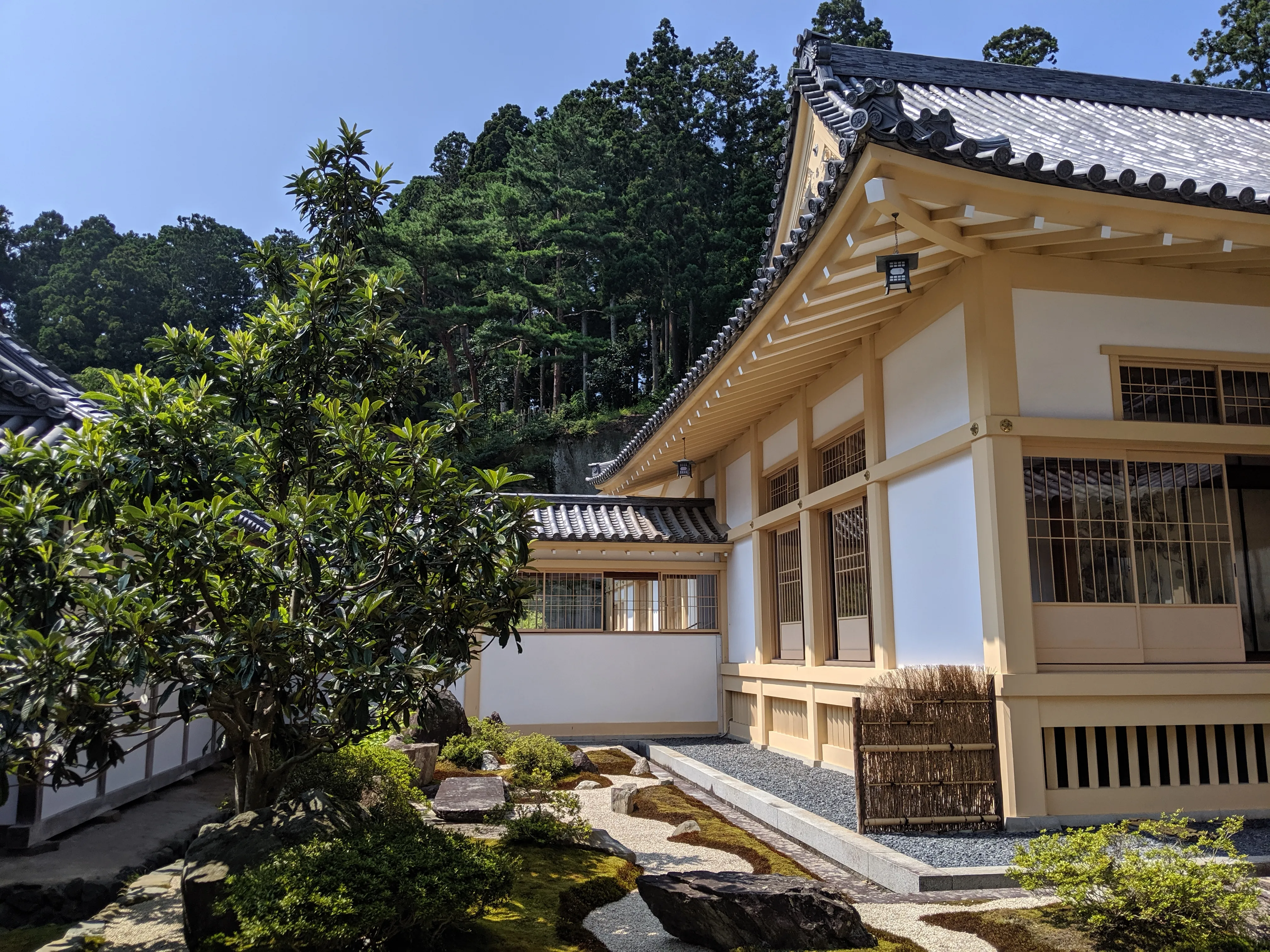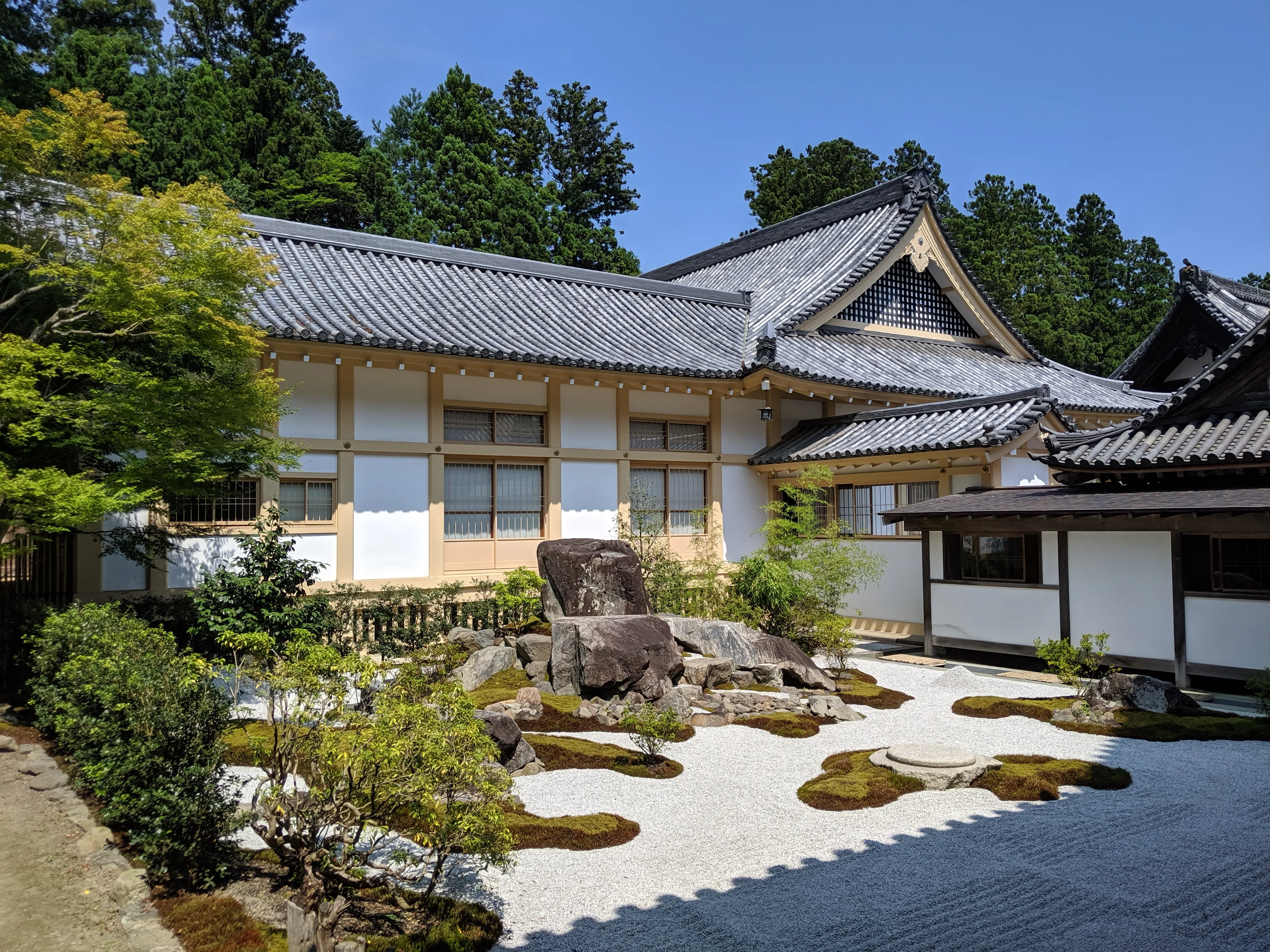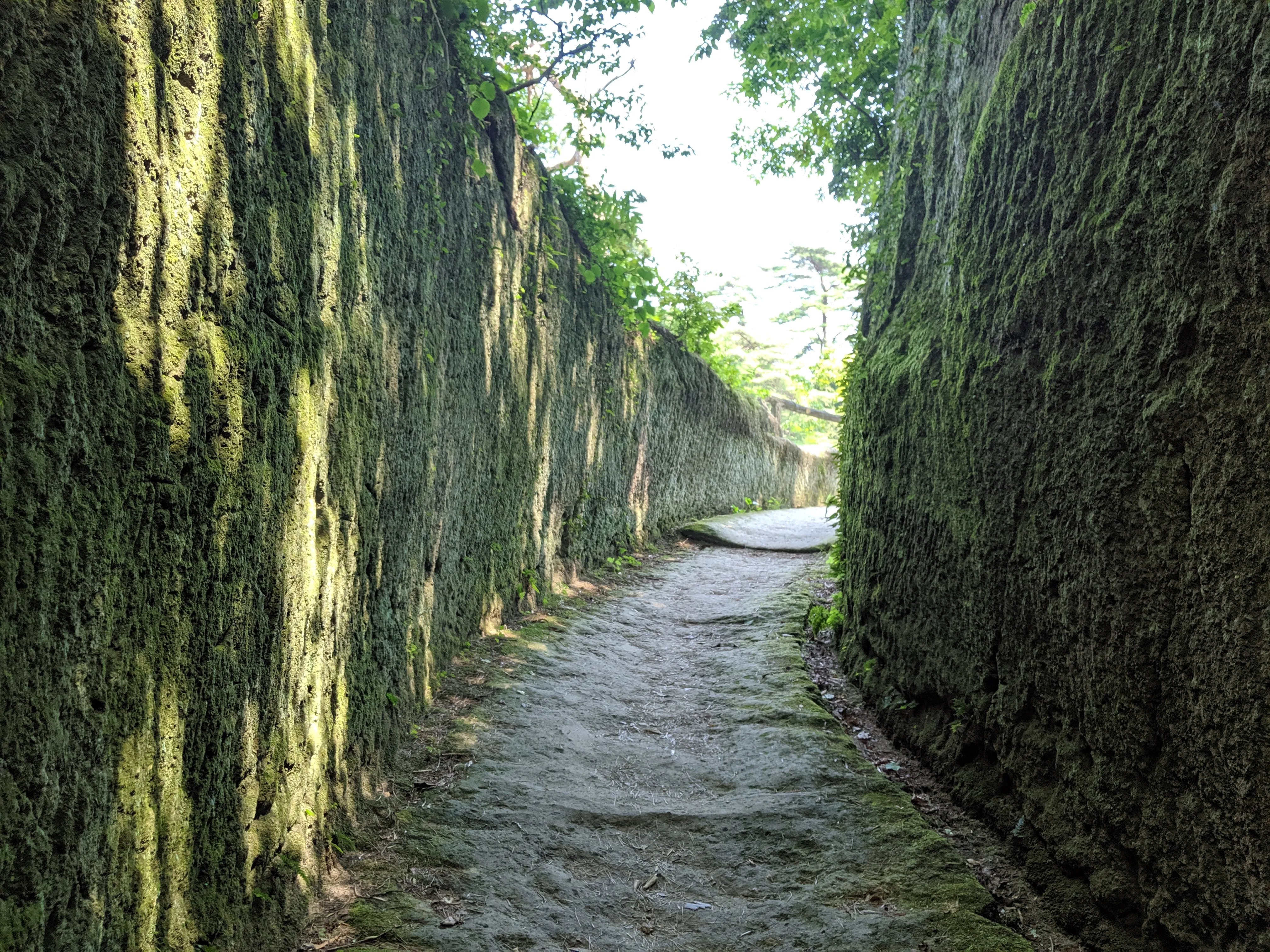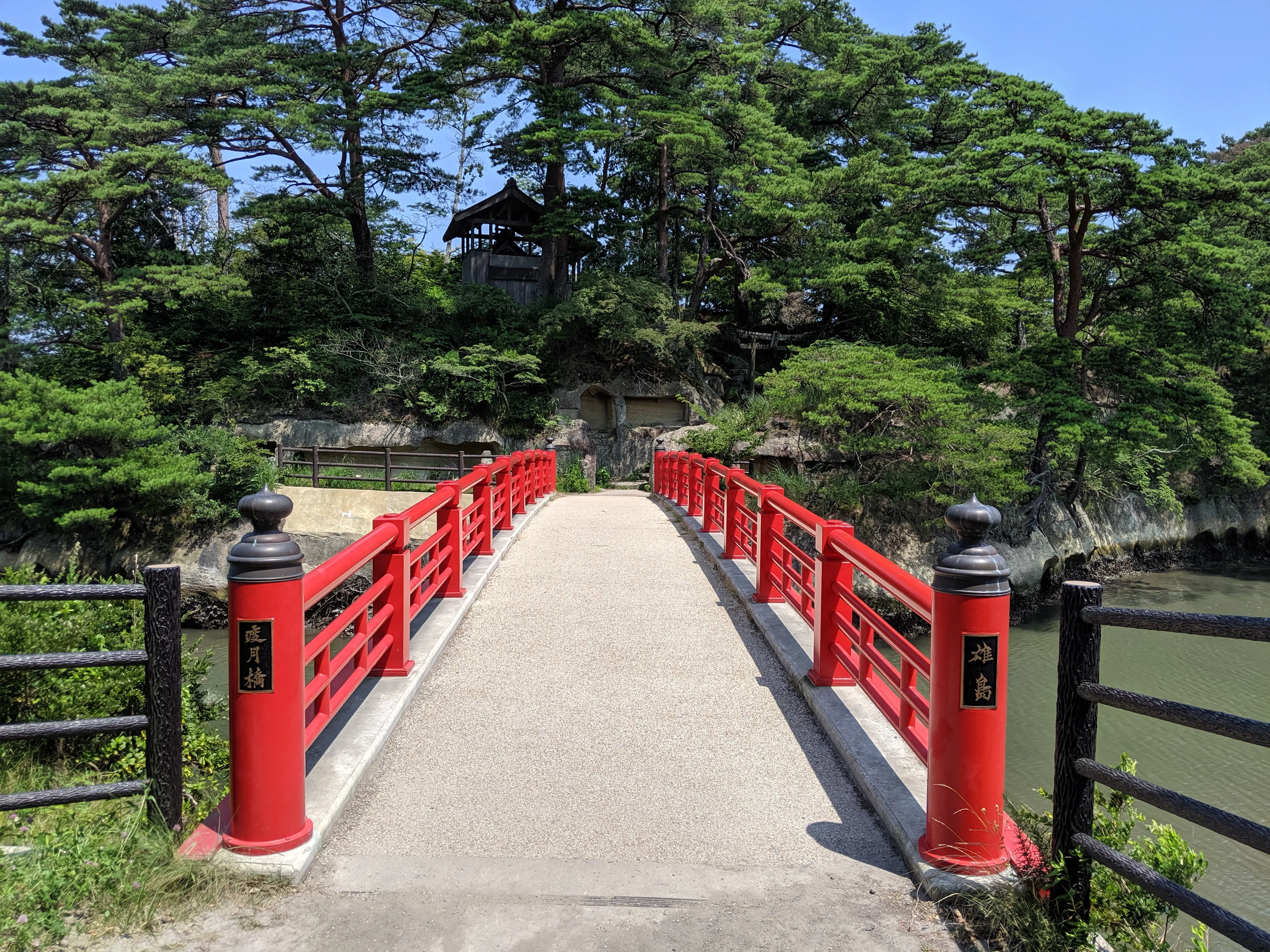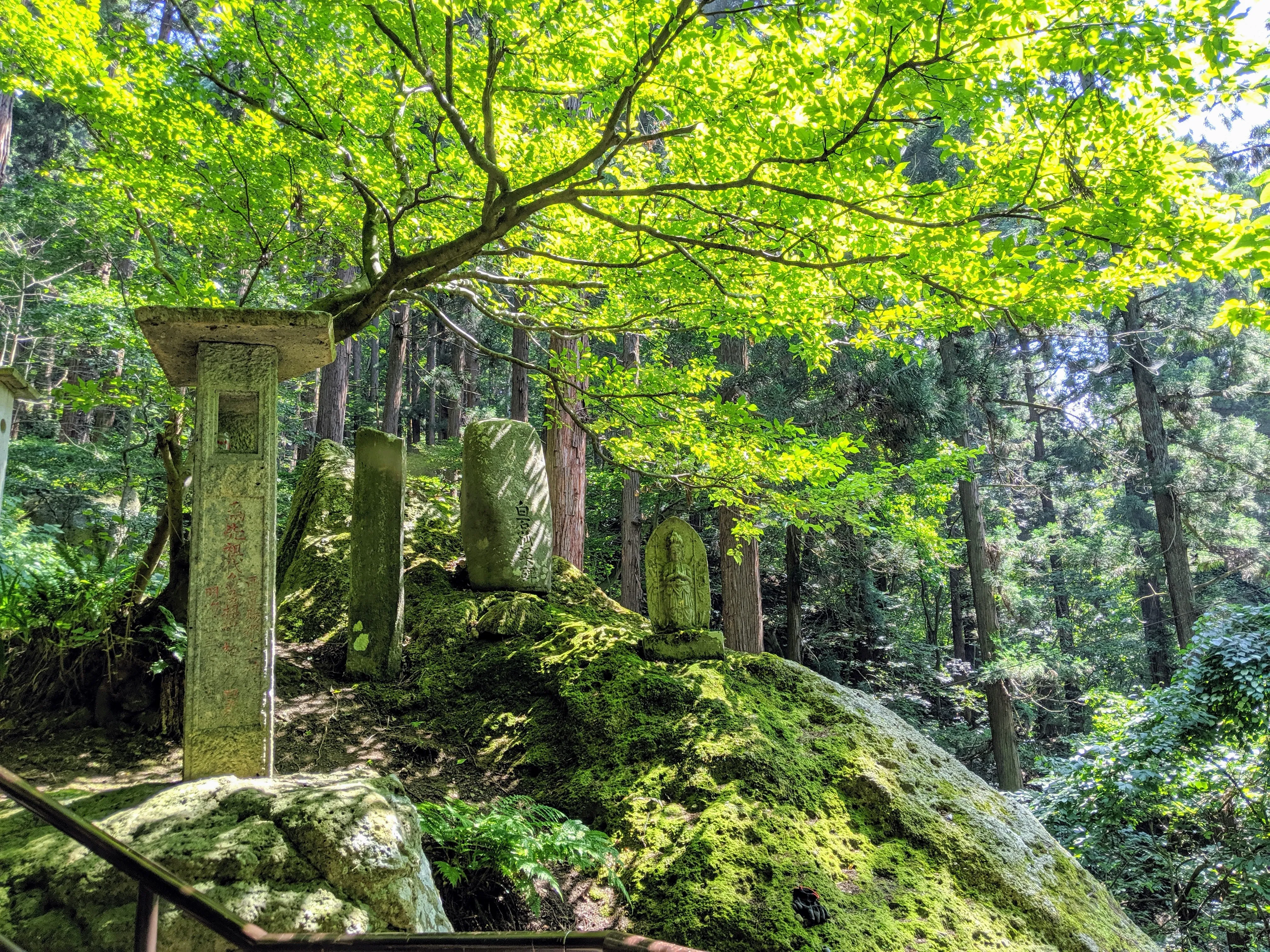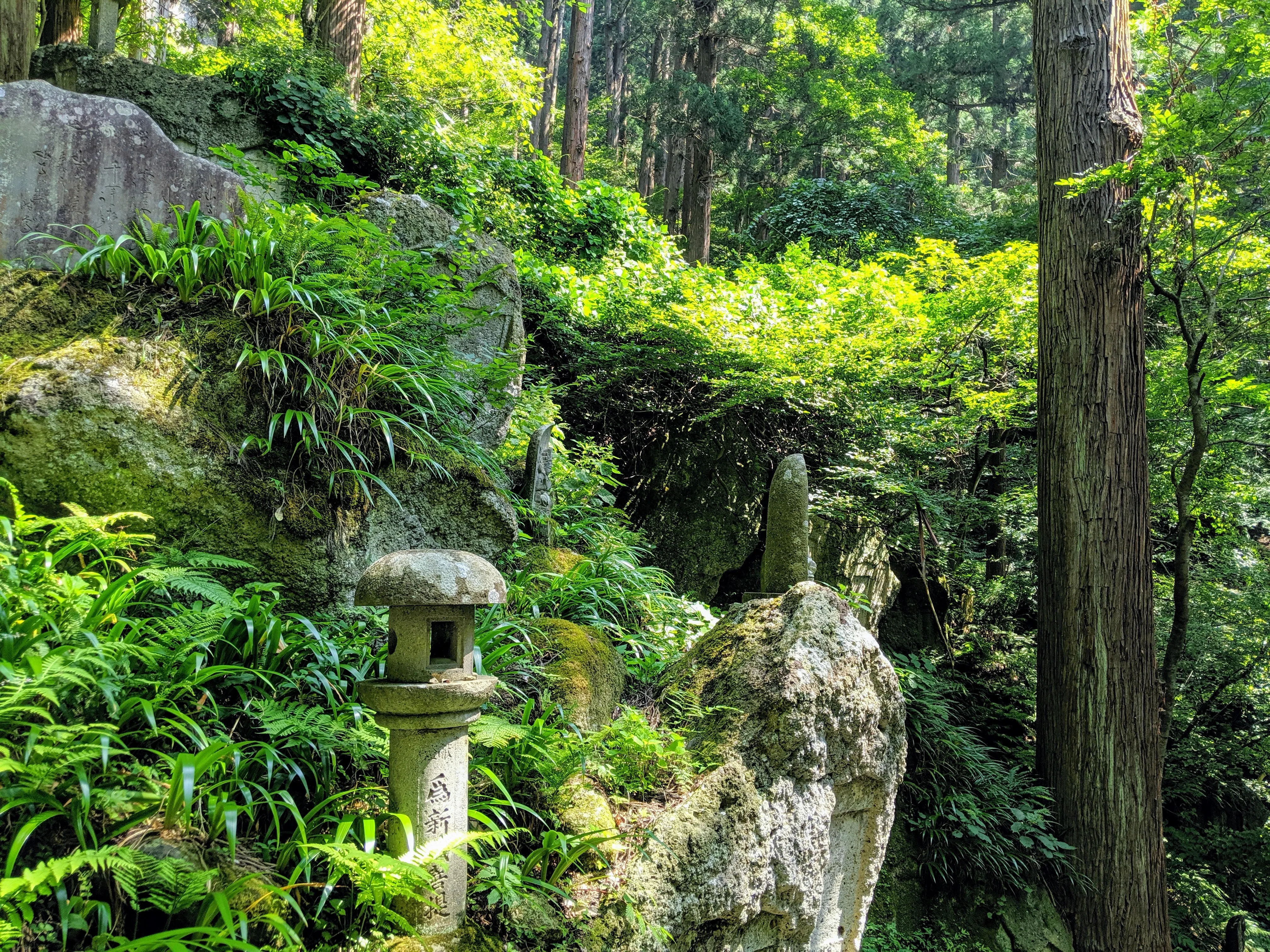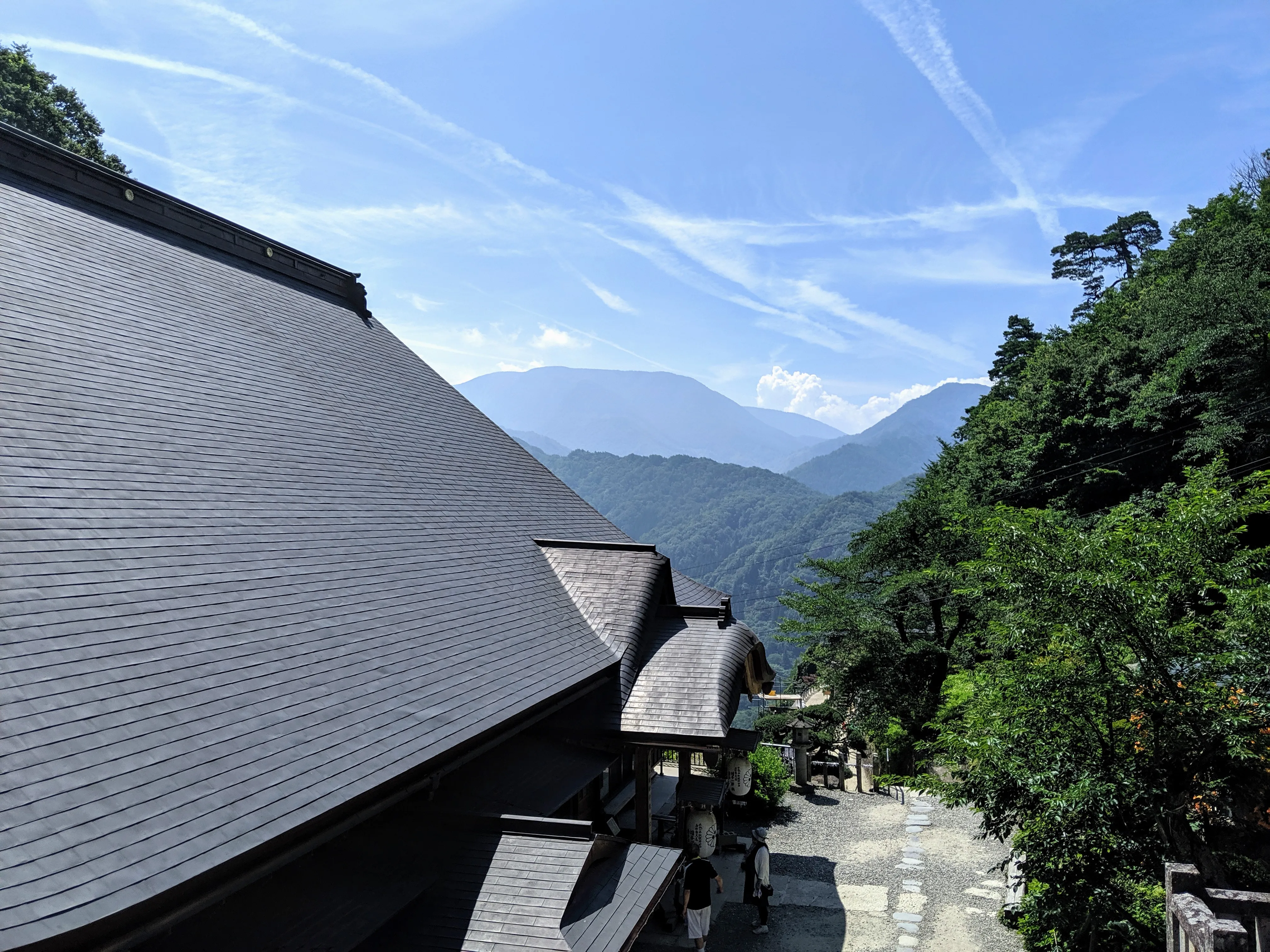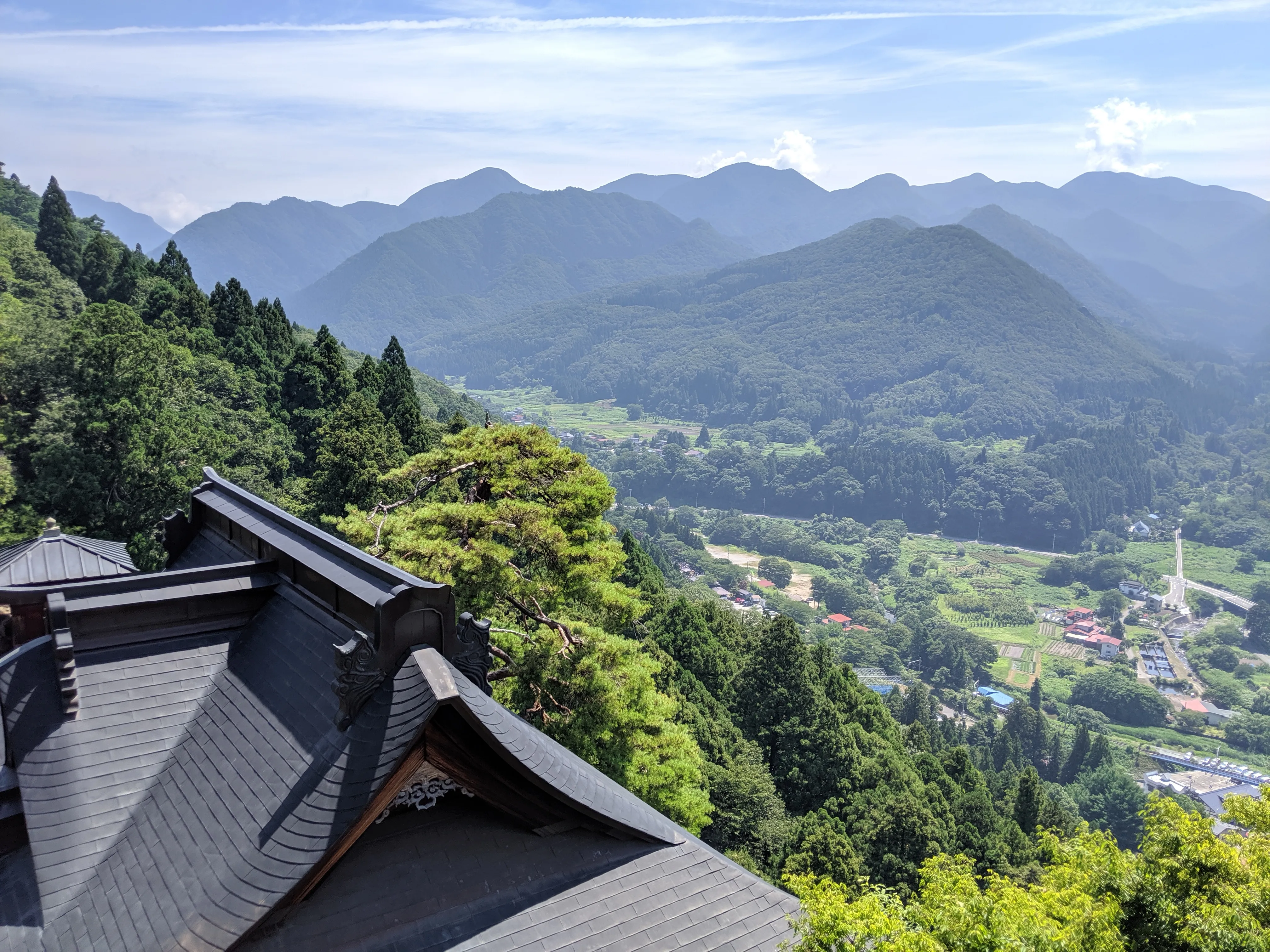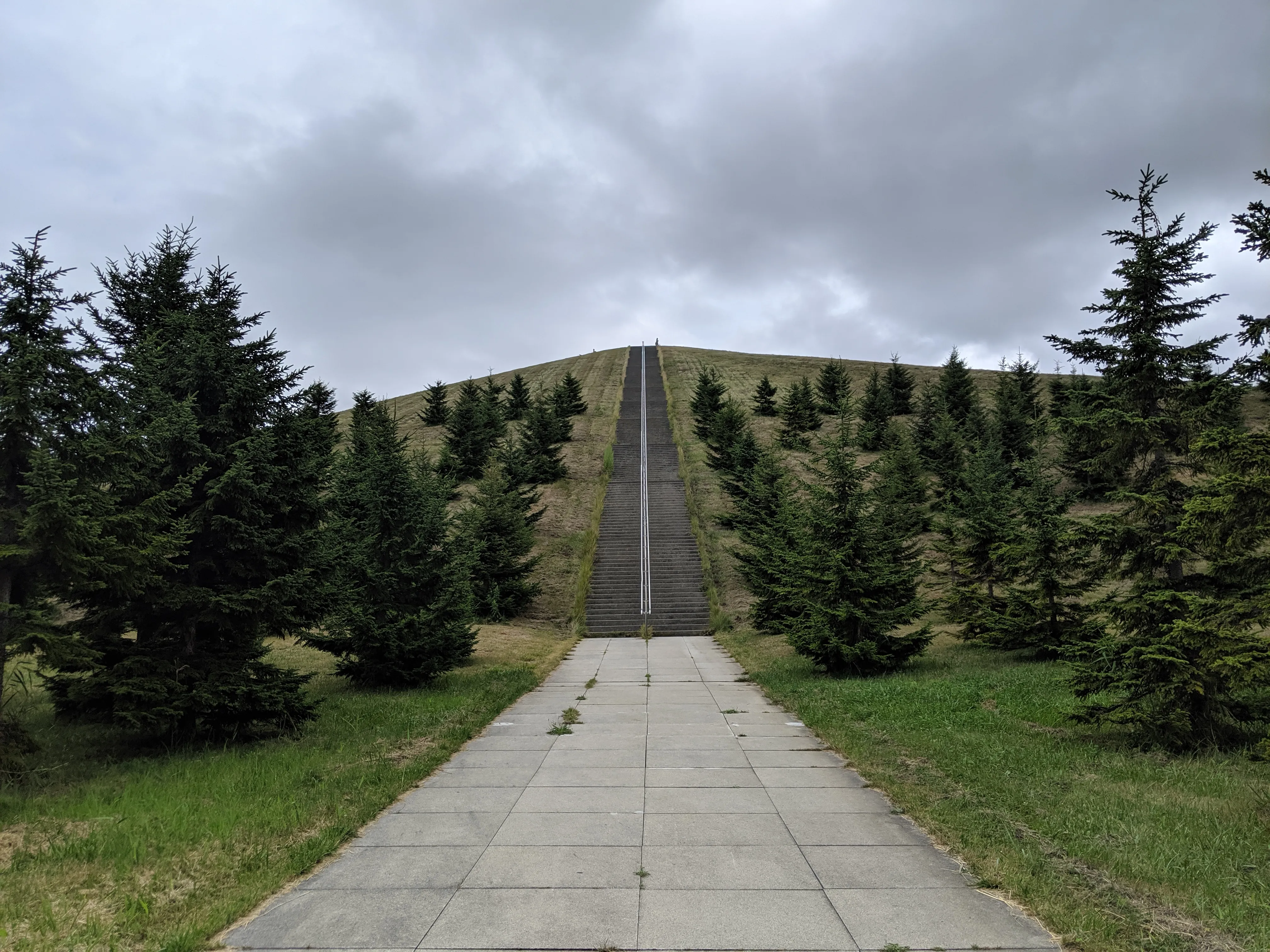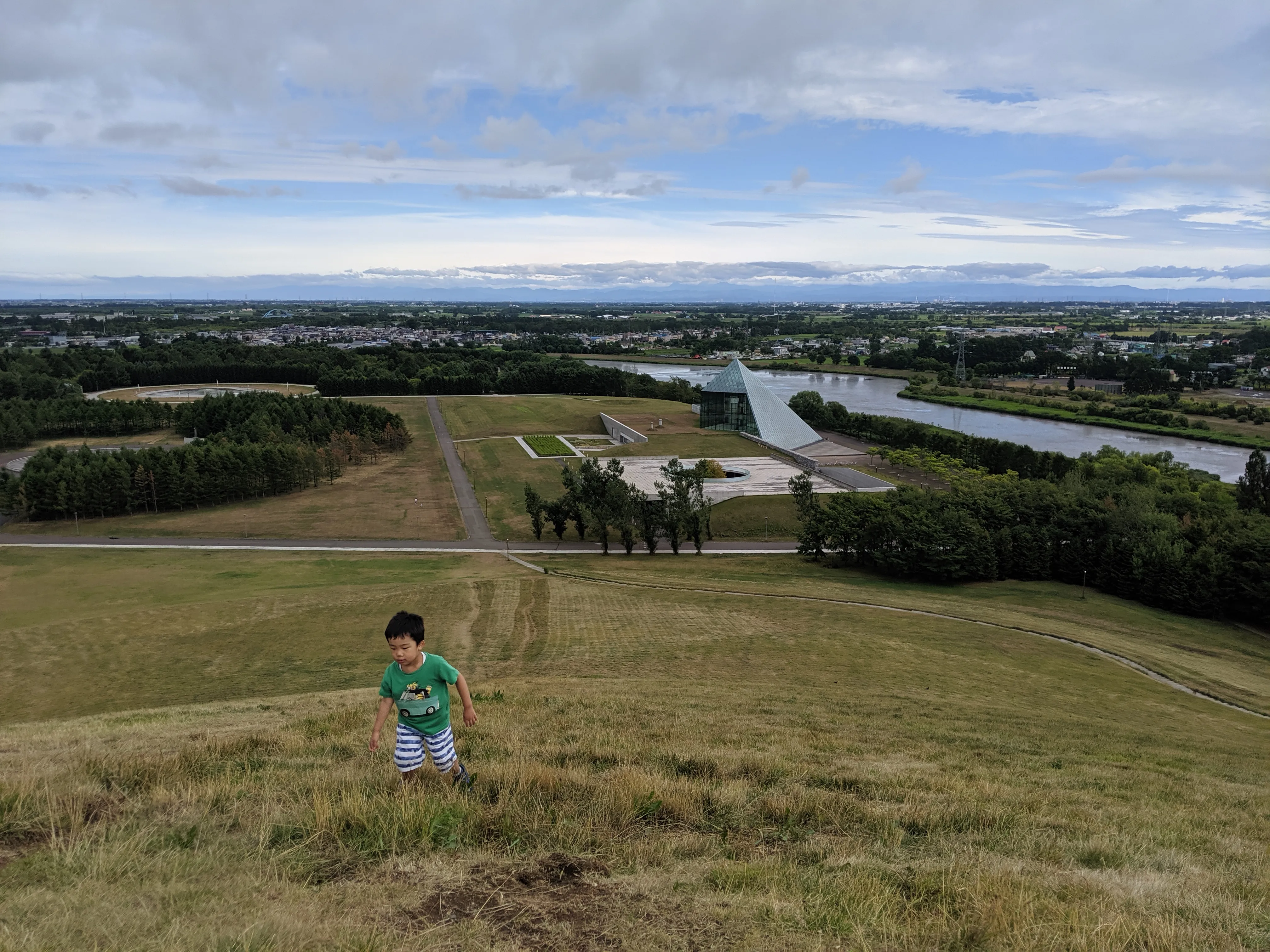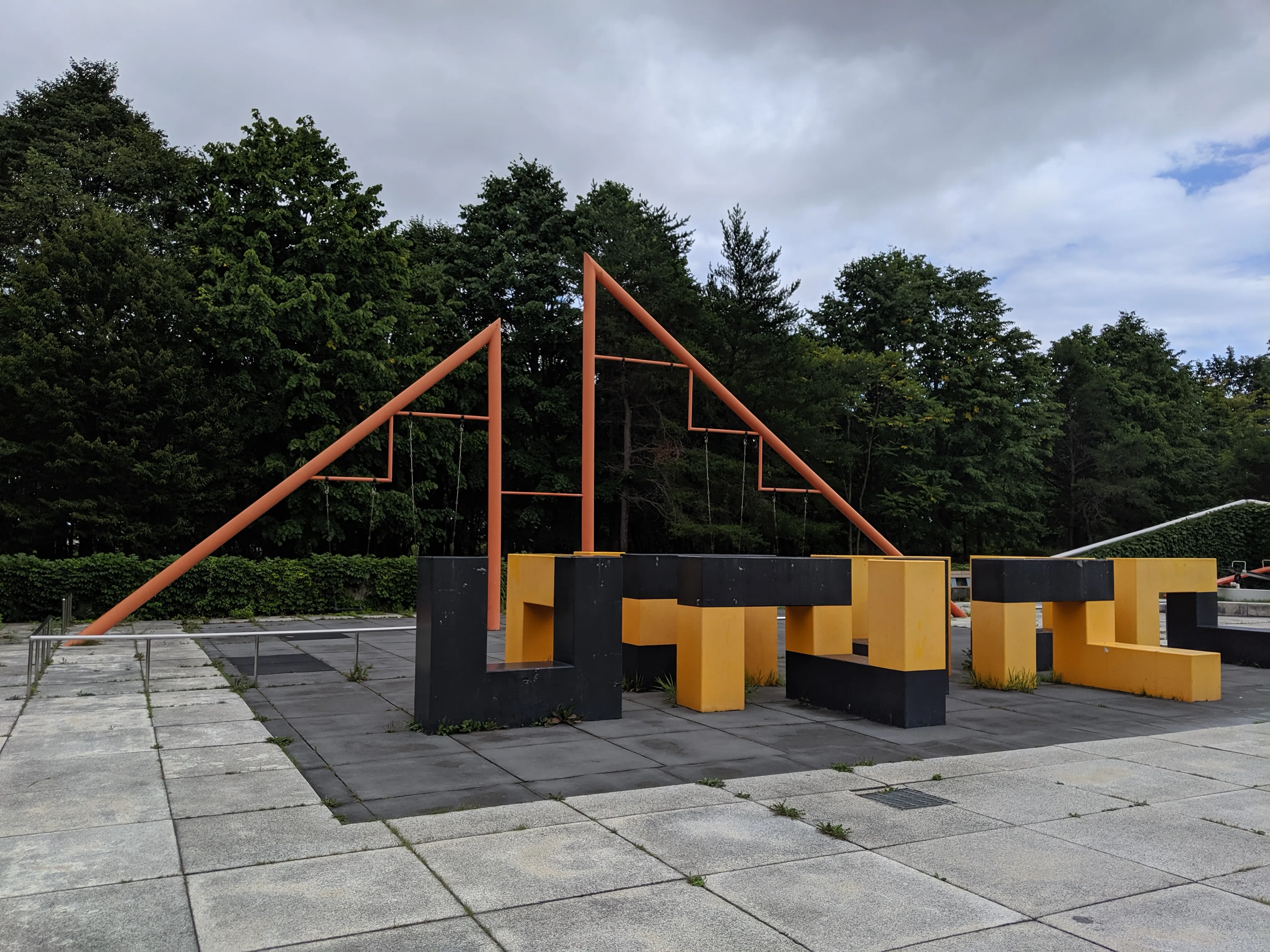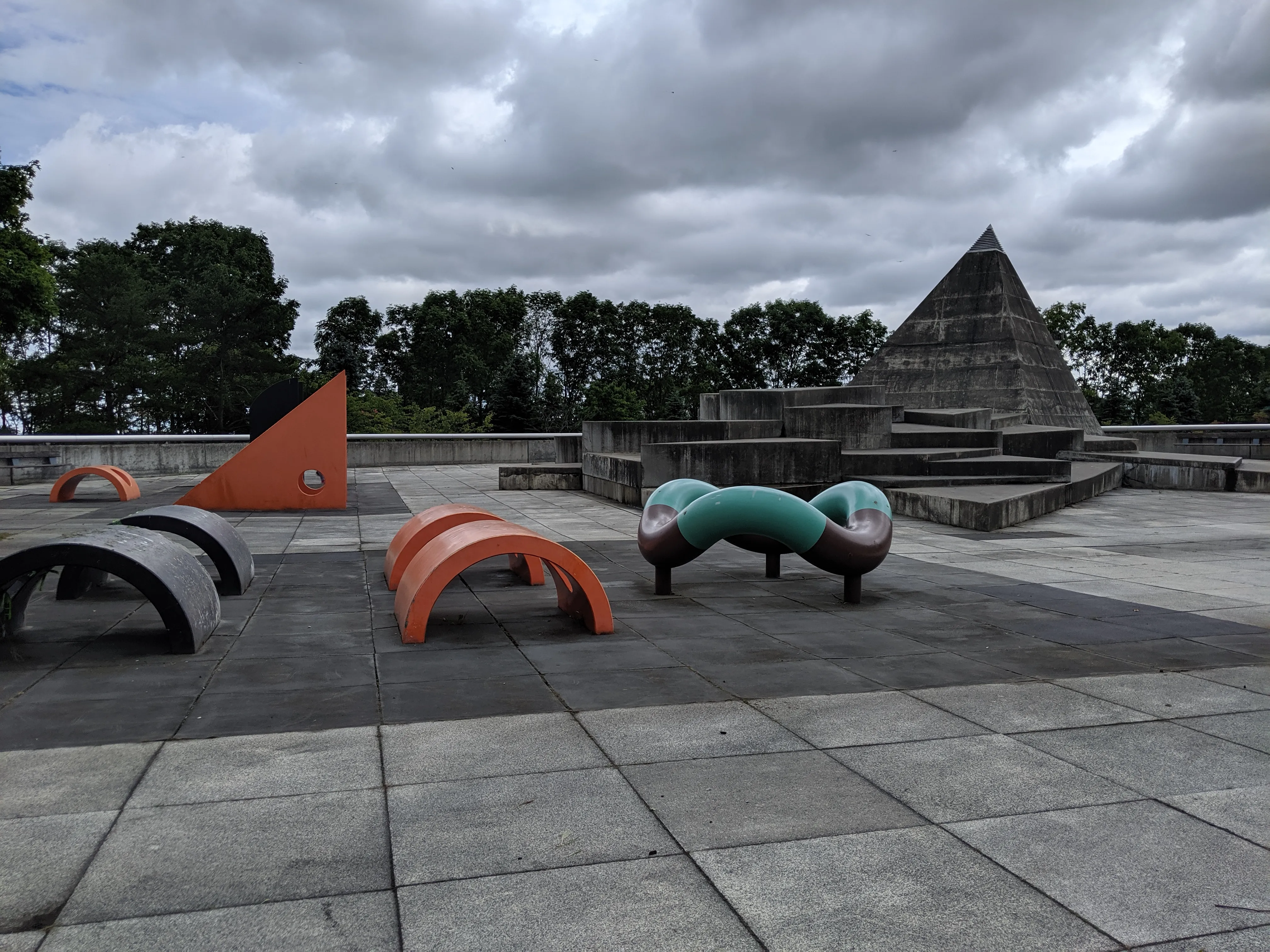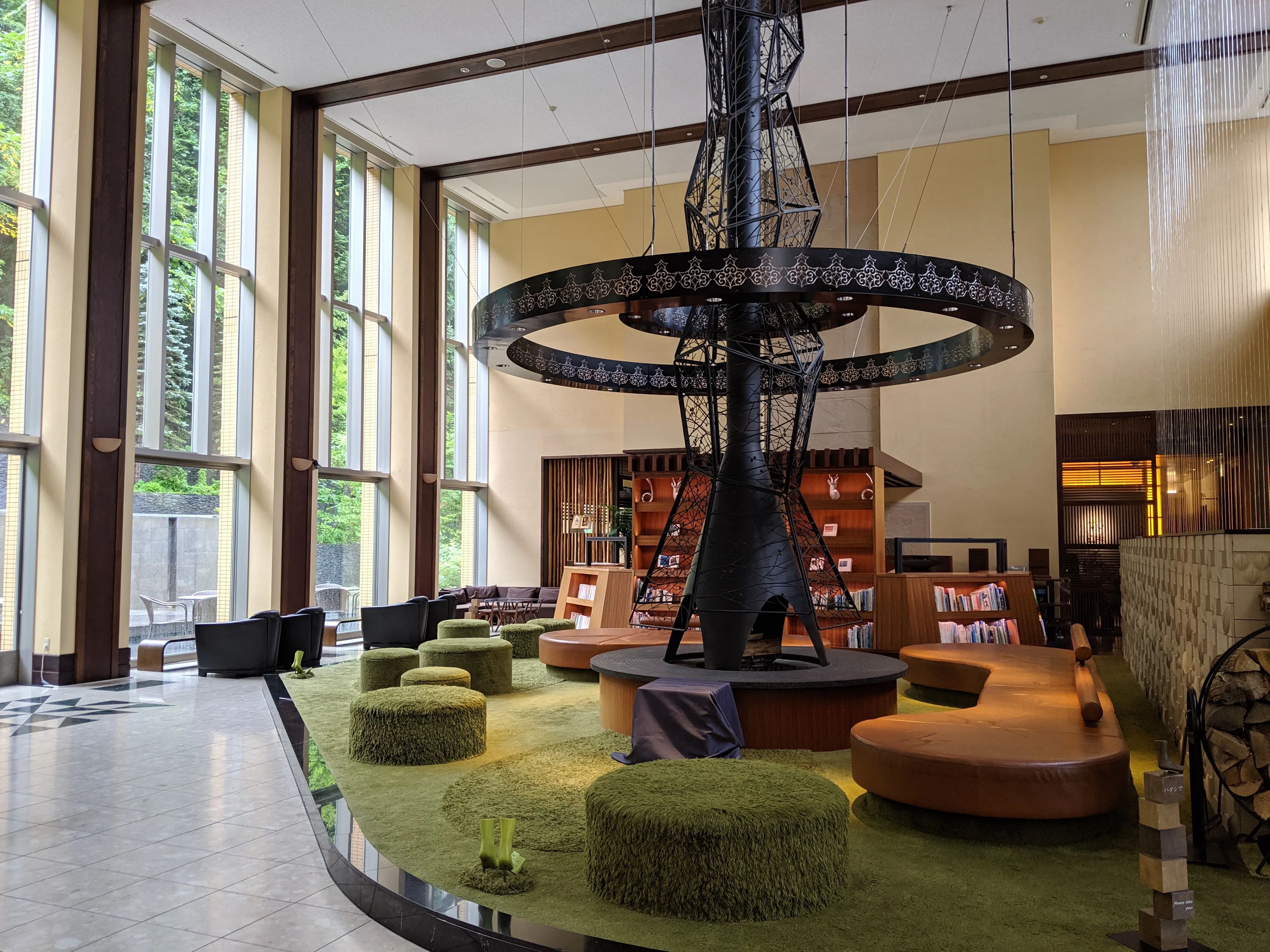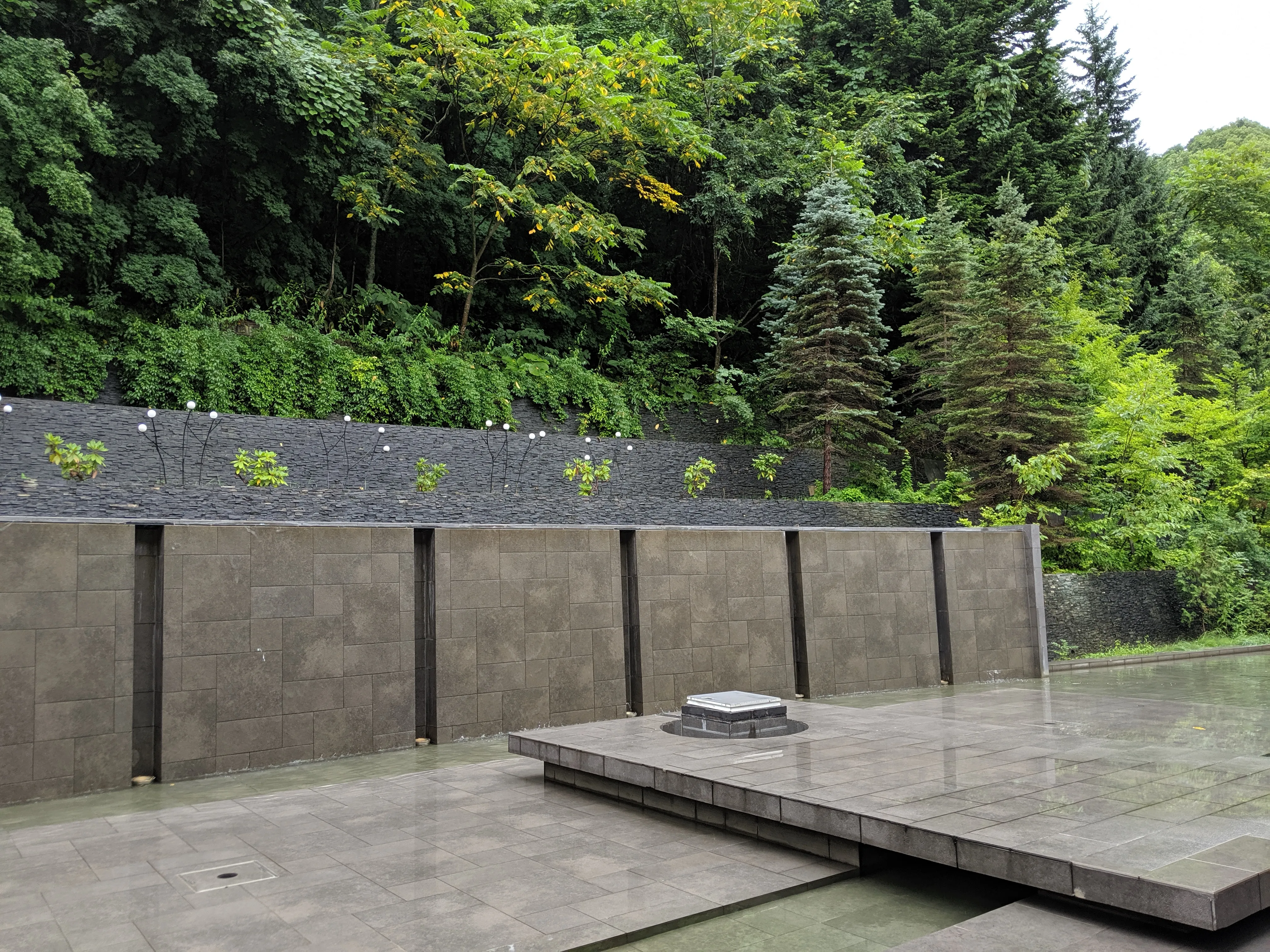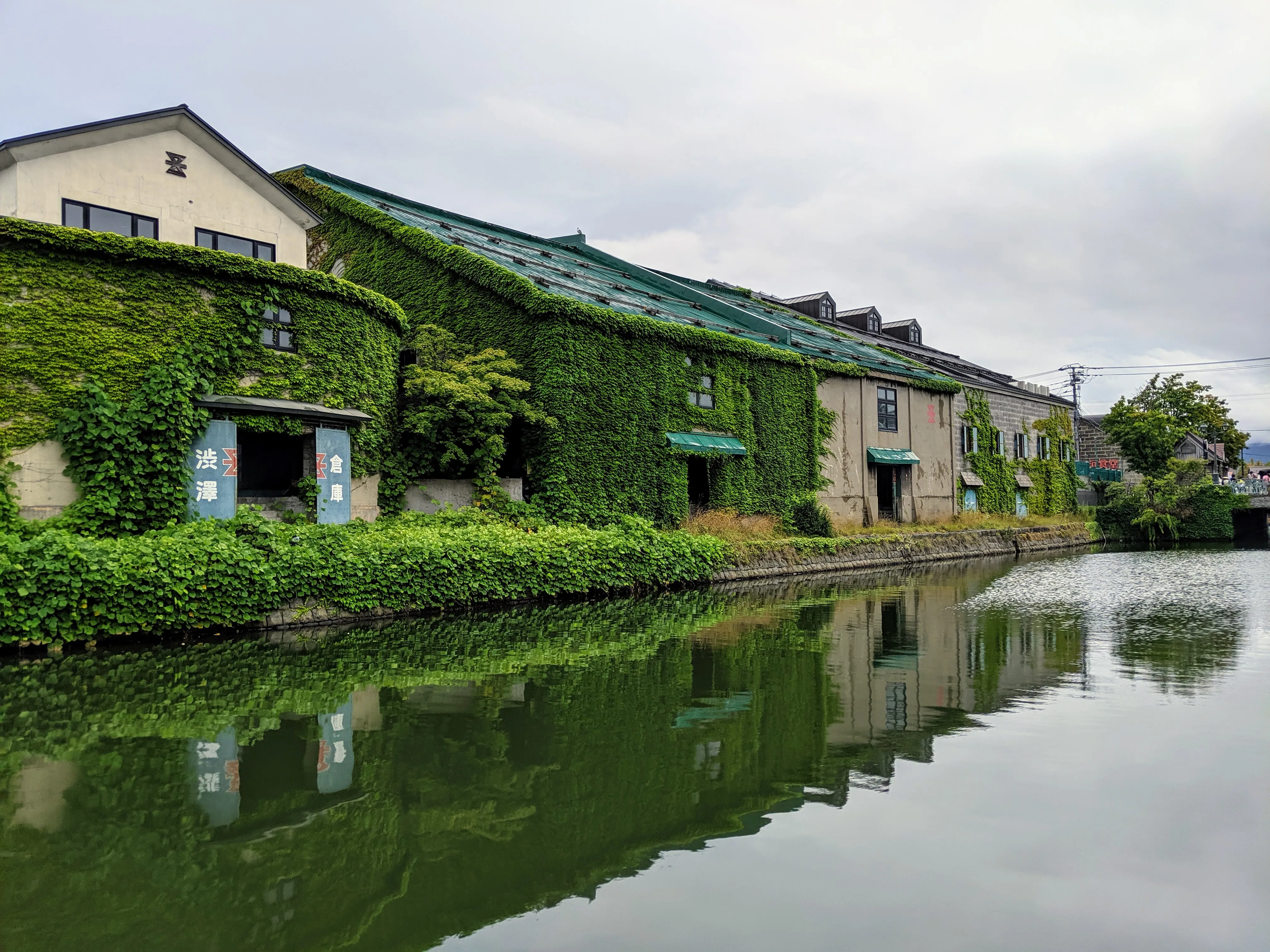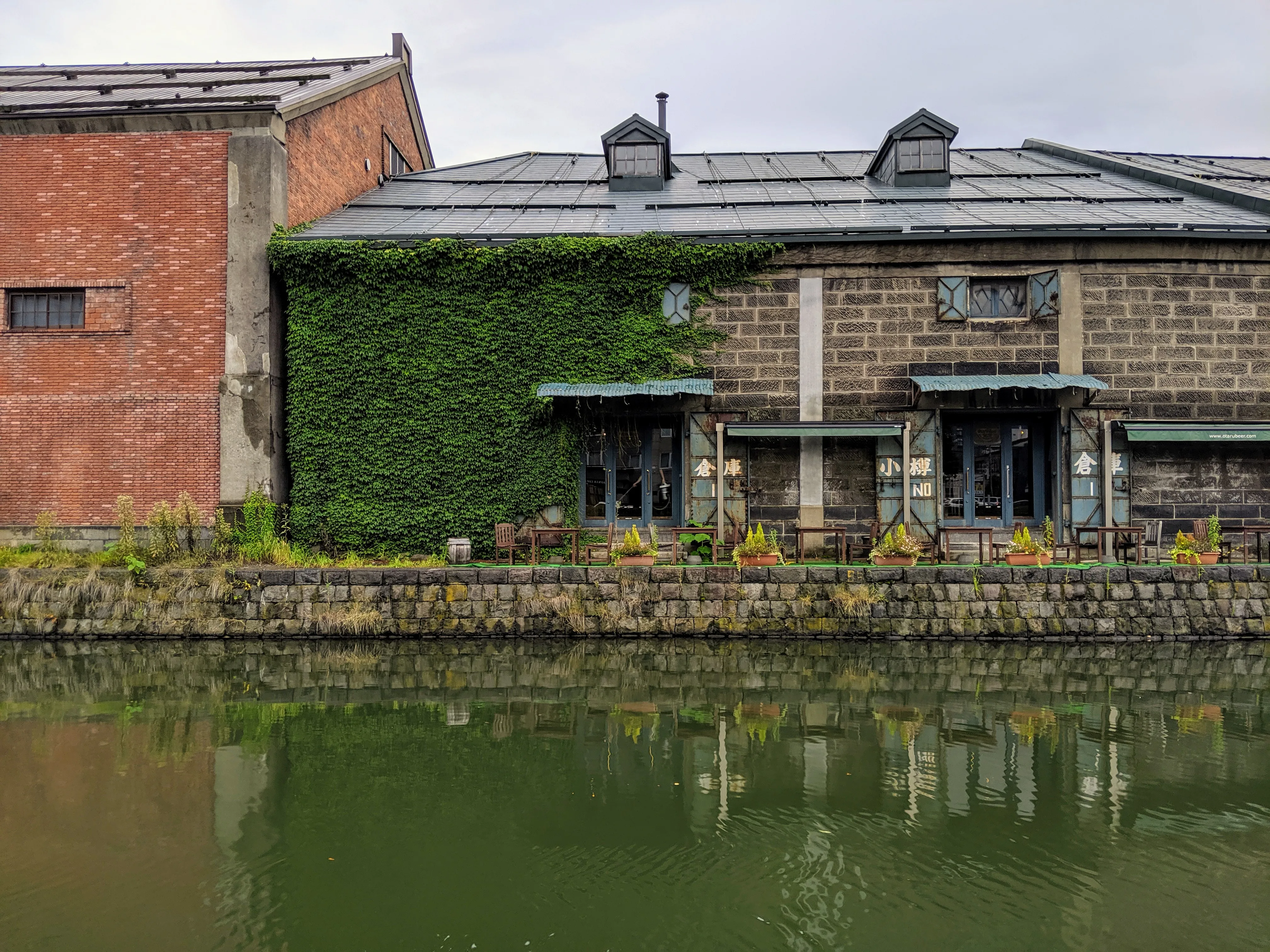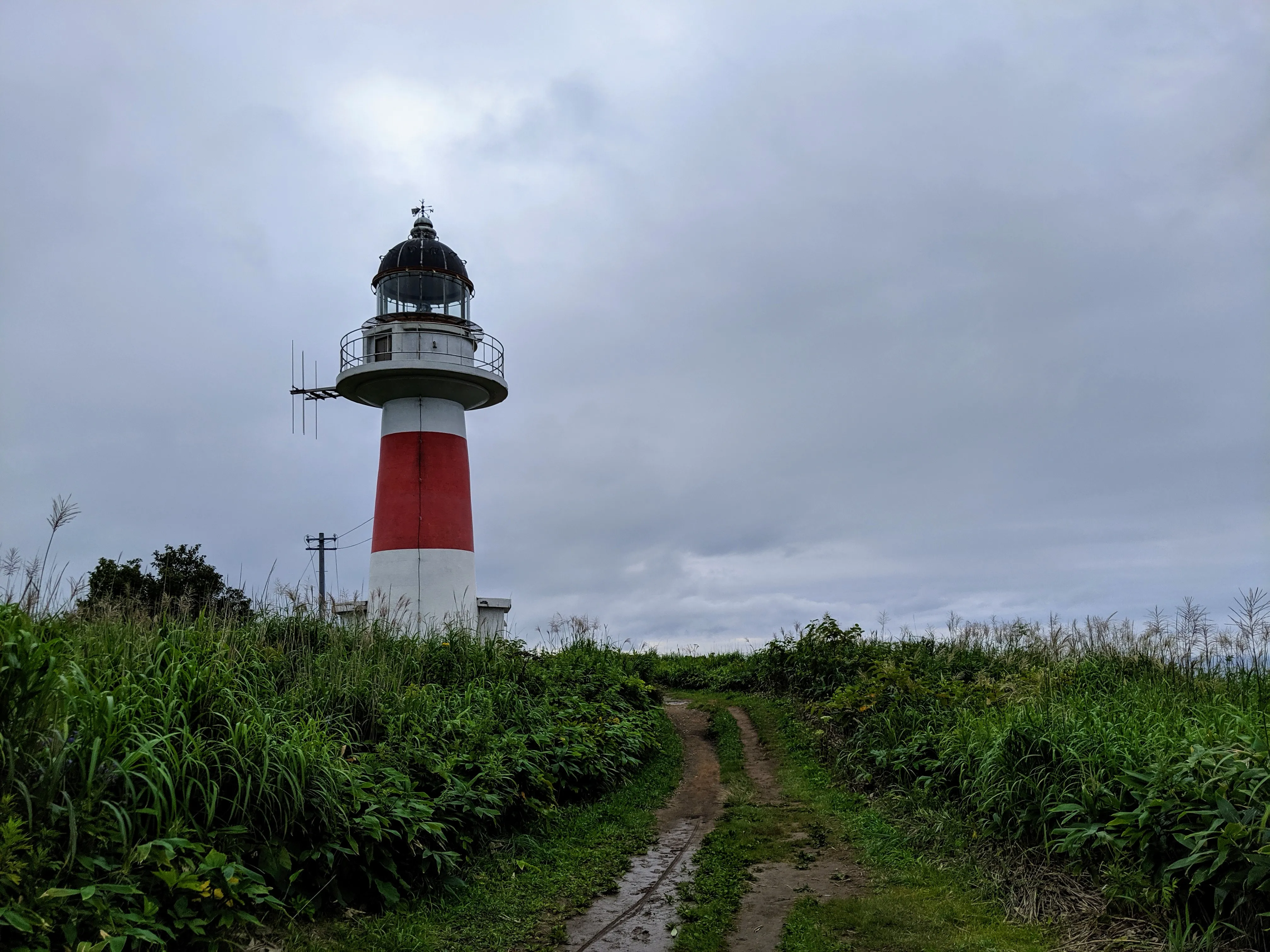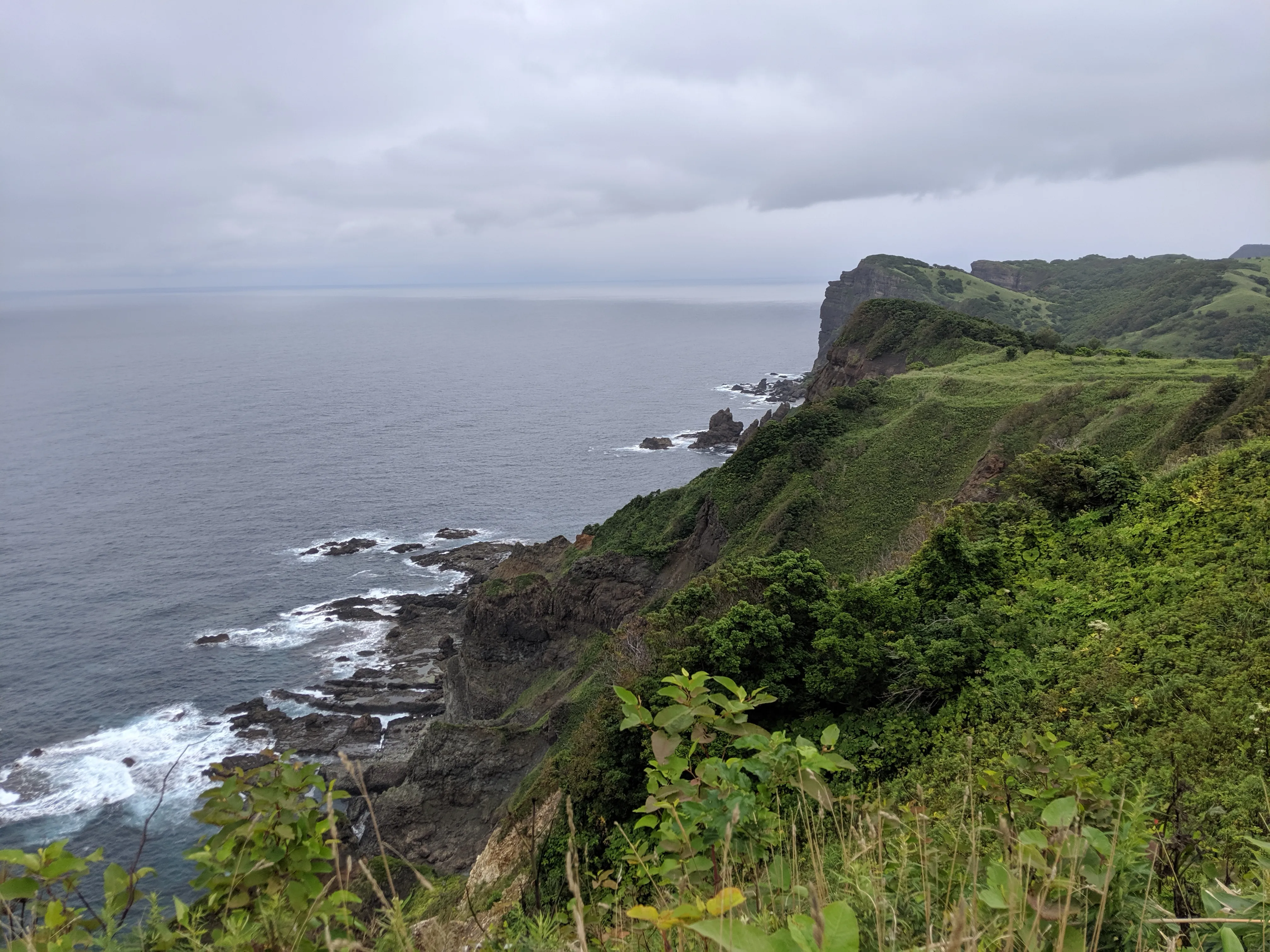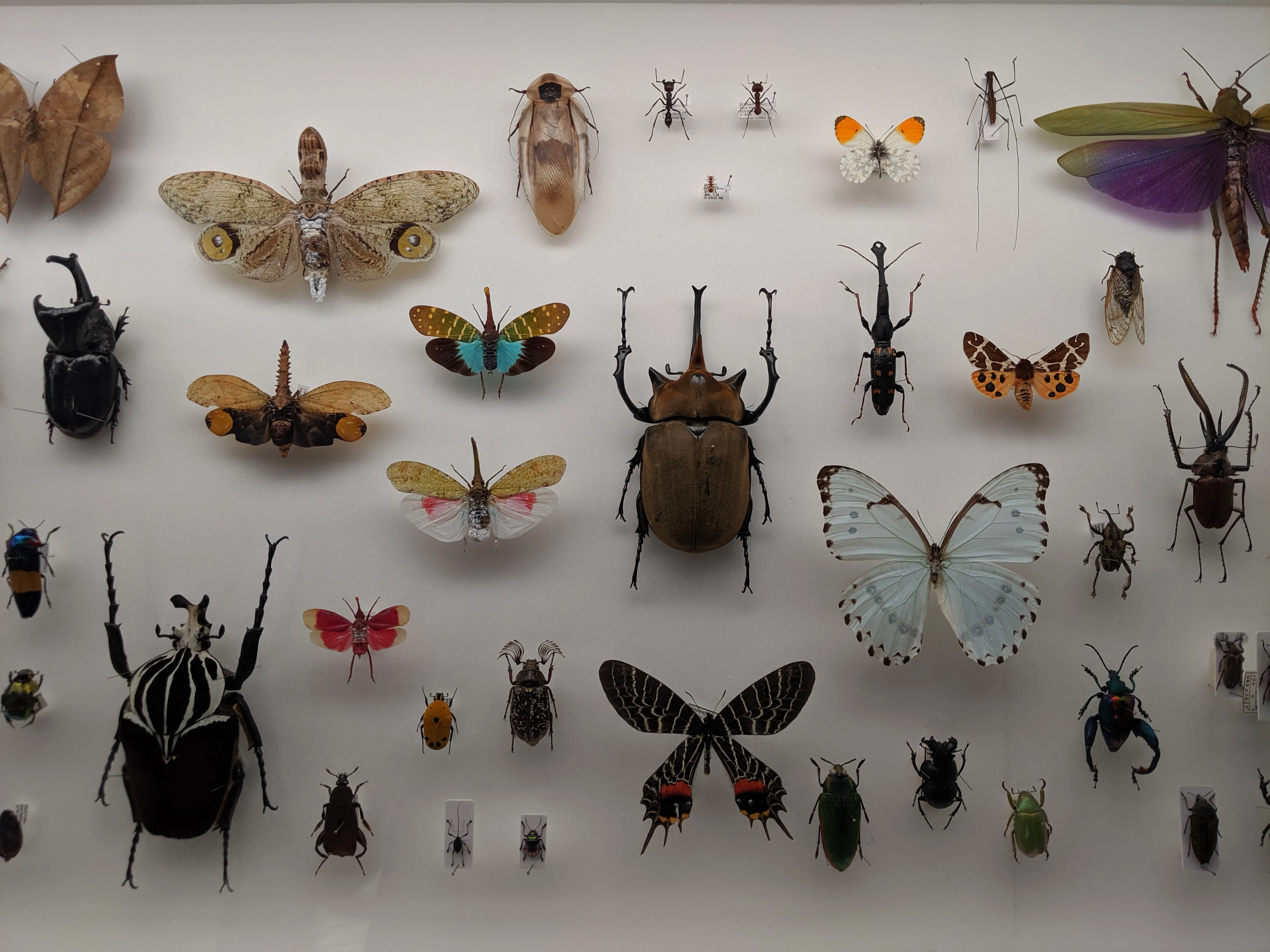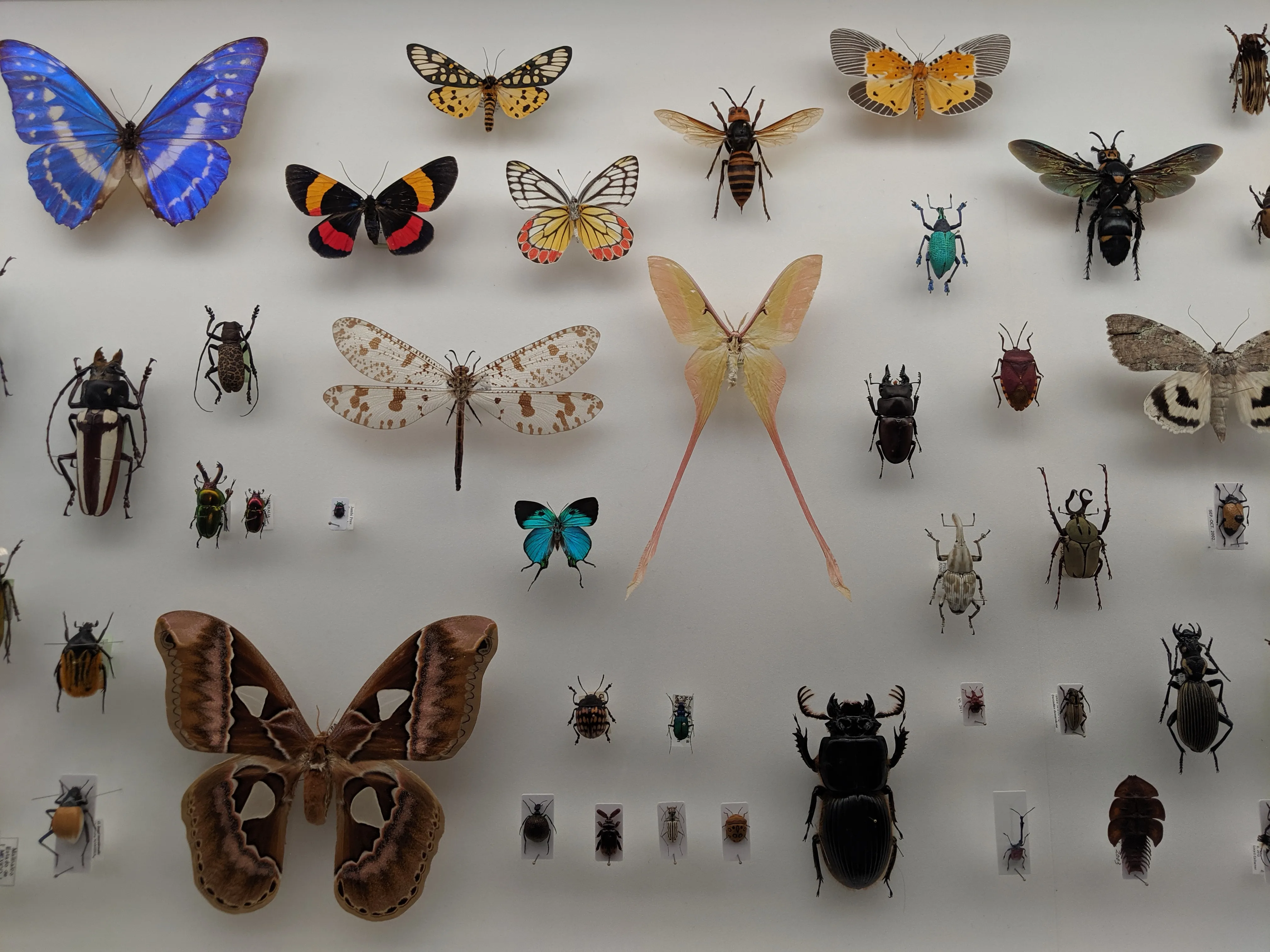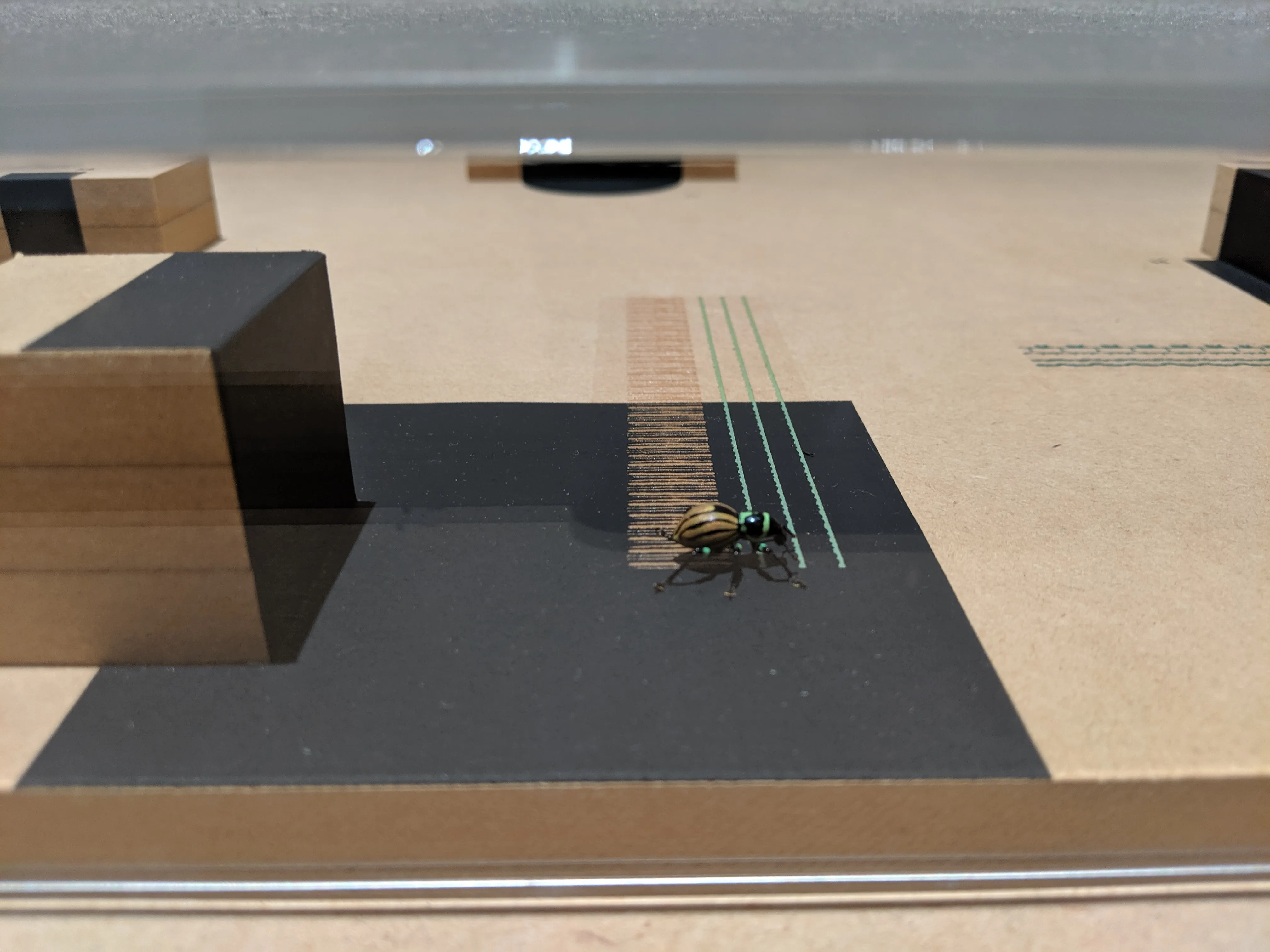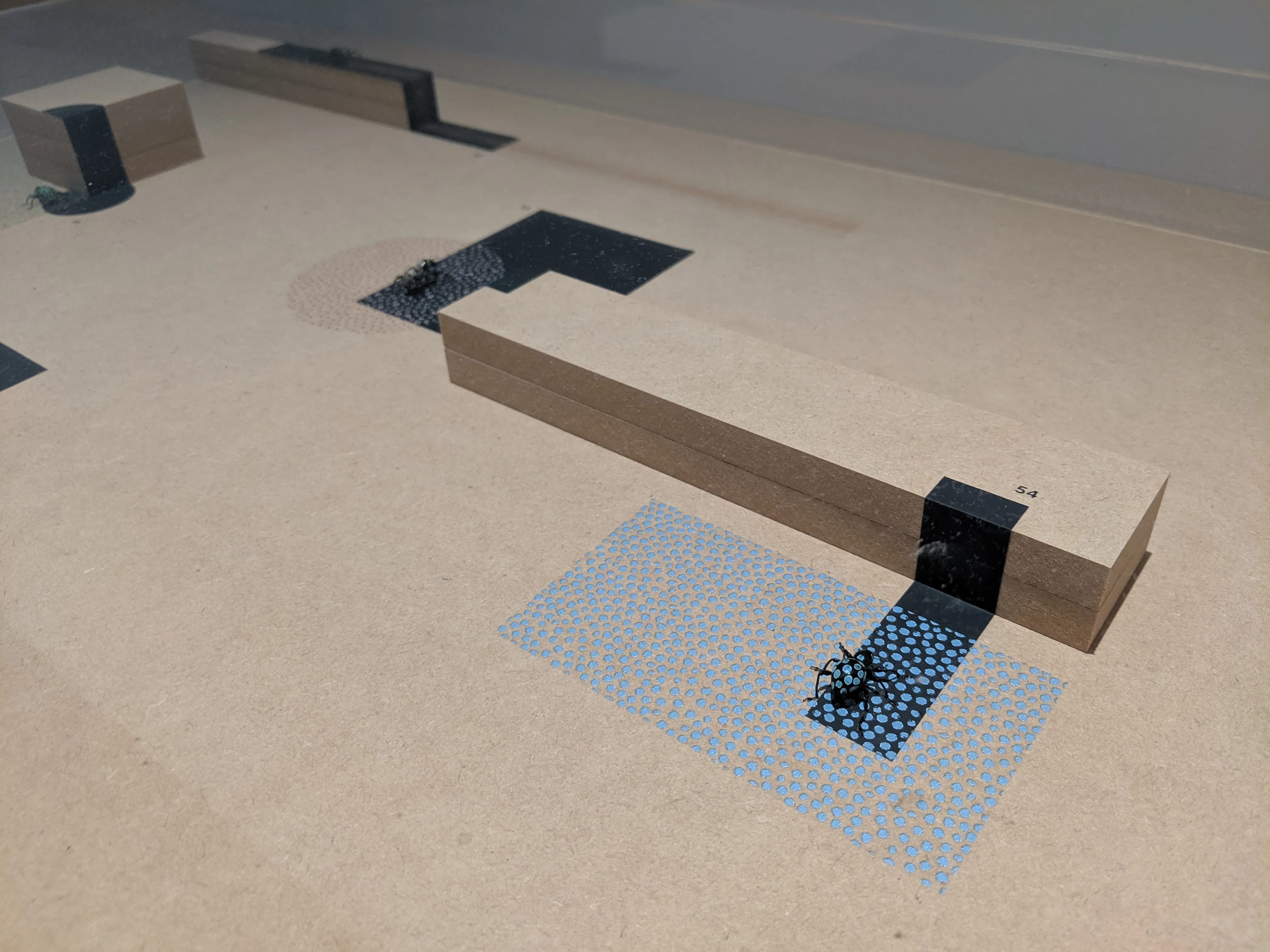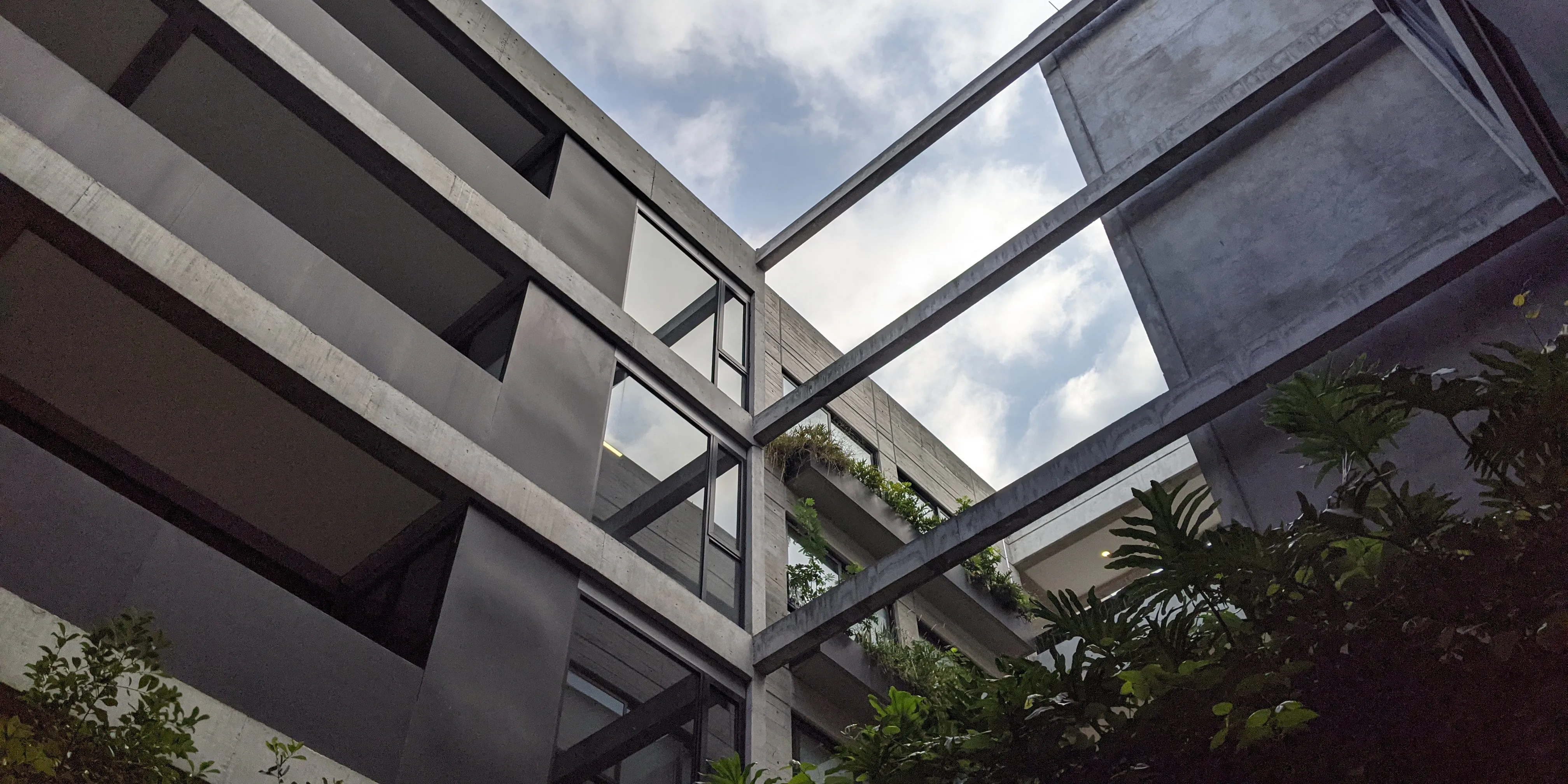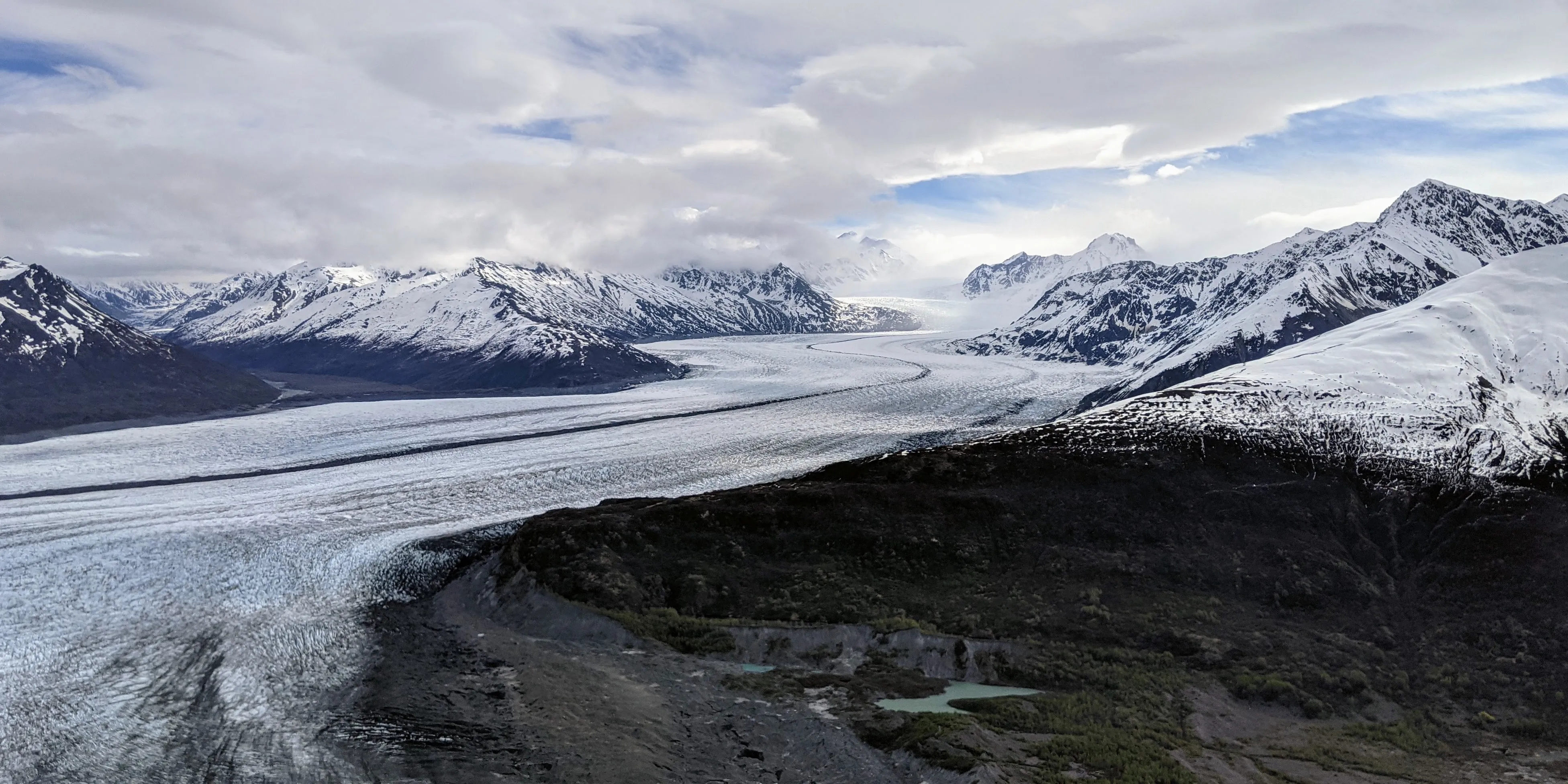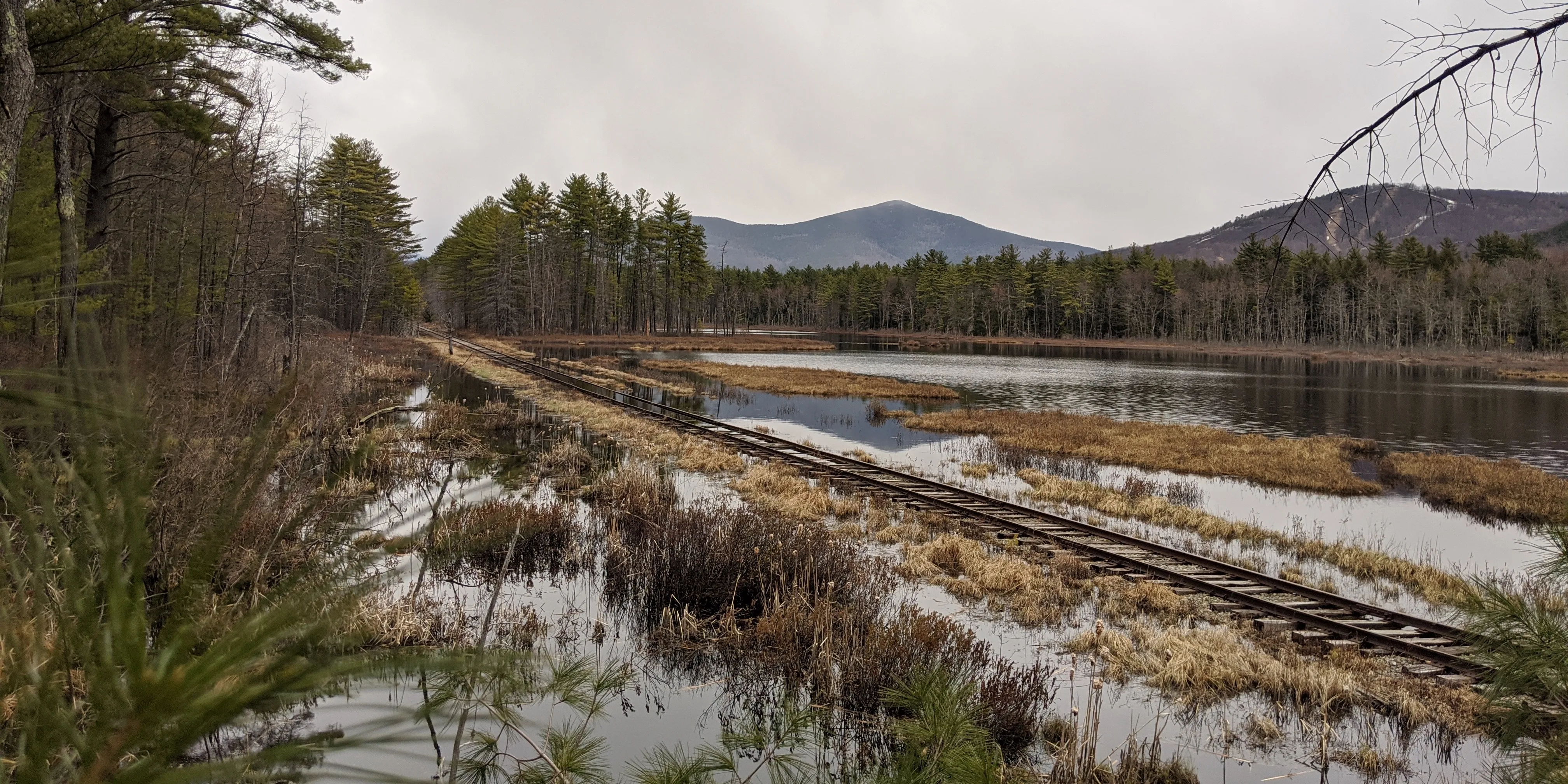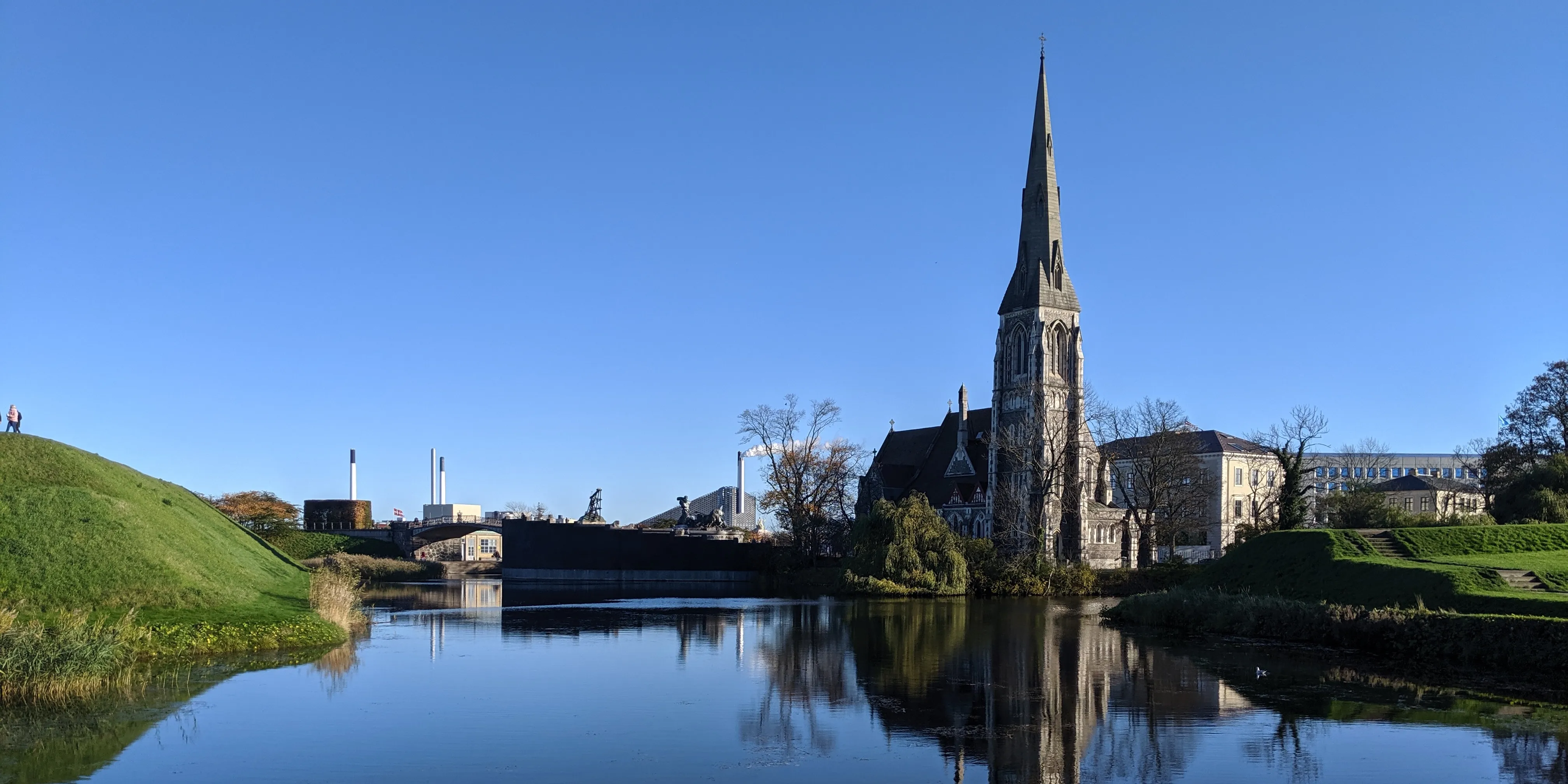Visiting Tokyo, Fuji, Matsumoto, Kamikochi, Narai, Sendai, Yamadera, Matsushima, Sapporo, and Otaru from Jul 2019 to Aug 2019.
This summer, in what has become an annual tradition, my work sent me on a business trip to Tokyo, to attend Google Cloud Next Tokyo. With few responsibilities back home, I was sure to take an extra week to continue exploring the country as a part of my goal to visit ten new cities in the year.
On my previous trip the year earlier, I visited tourist hotspots Tokyo, Hakone, Kyoto, Osaka, Hiroshima, and Miyajima, as well as a cluster of cities and towns in northwest Japan: Kurobe, Takayama, Hirayu Onsen, Shirakawa-go, Ainokura, and Kanazawa.
This trip, I planned would break up into two halves. The first, with a group of friends from work, would be spent in Tokyo, summitting Mt. Fuji, and then exploring a few small towns in Nagano prefecture. The second, done solo, would take me to north in an attempt to escape the wretched heat of August in Japan.
Tokyo
There is no city in the world like Tokyo. The architecture, the food, the art, the culture, all of it is truly amazing. Tokyo in summer, though, is a very specific kind of cruel. The week I was there, temperatures spiked to 95°F with 99% humidity. This meant that while I had aspirations to visit all sorts of corners of the city yet unexplored, I was forced to be more practical, leaping from air-conditioned office building to air-conditioned restaurant to air-conditioned museum. In the evenings, it was much more cool, and I got opportunities to walk around some of my favorite neighborhoods at dusk.
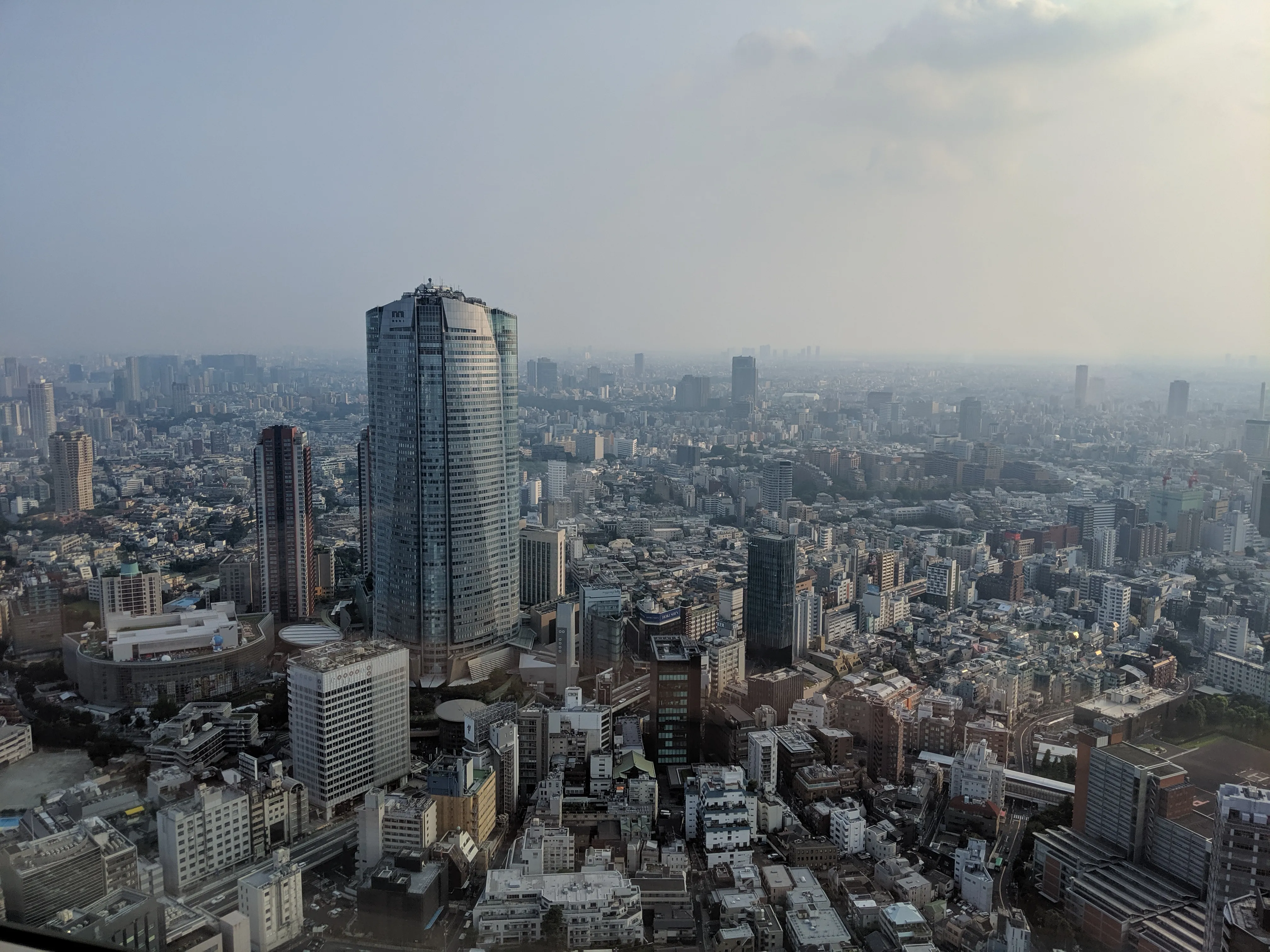
A view of Mori tower from my hotel room.
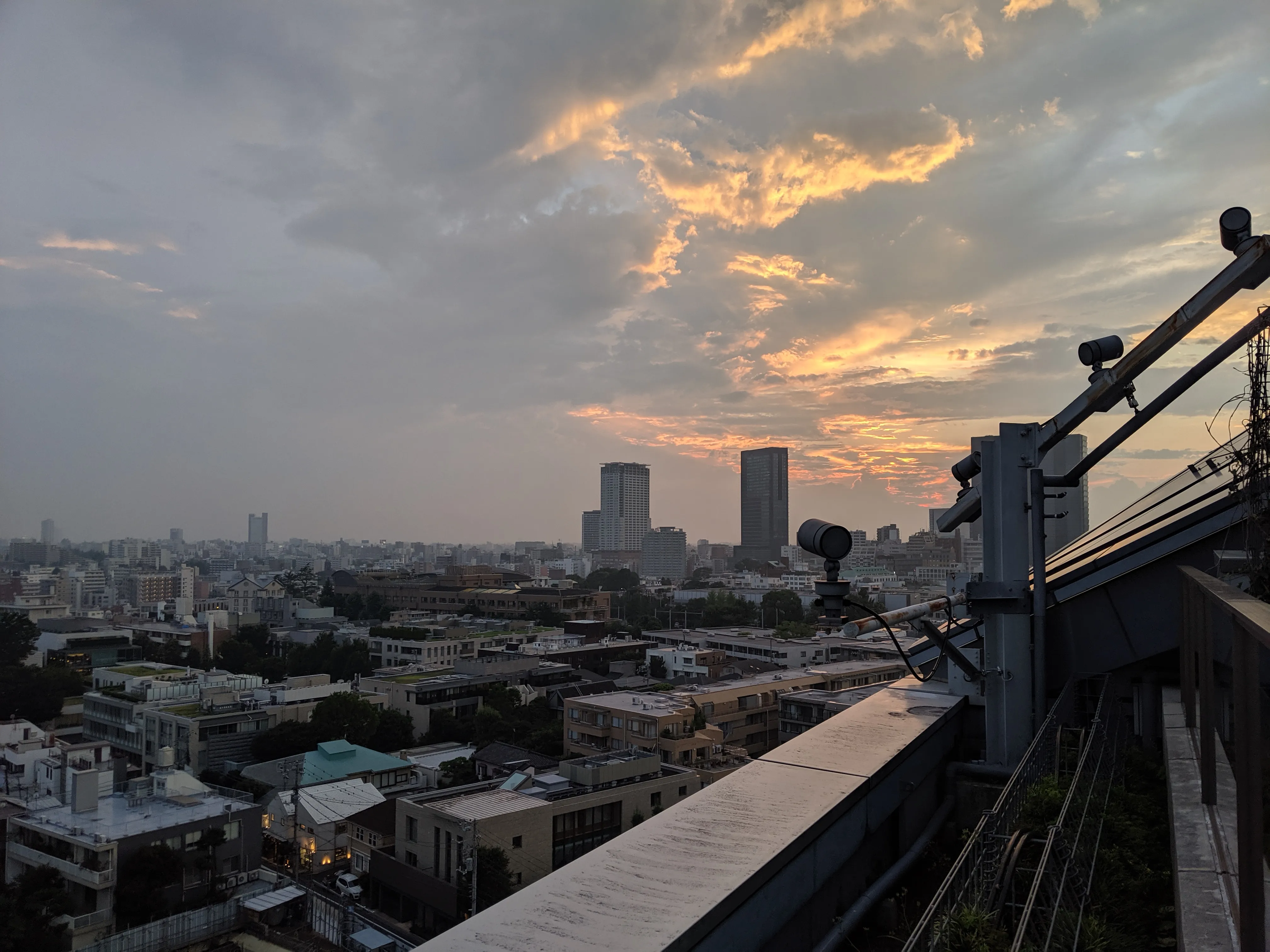
Daikanyama's Hacienda Del Cielo offers Mexican cuisine with a rooftop view.
An art exhibition center in Roppongi
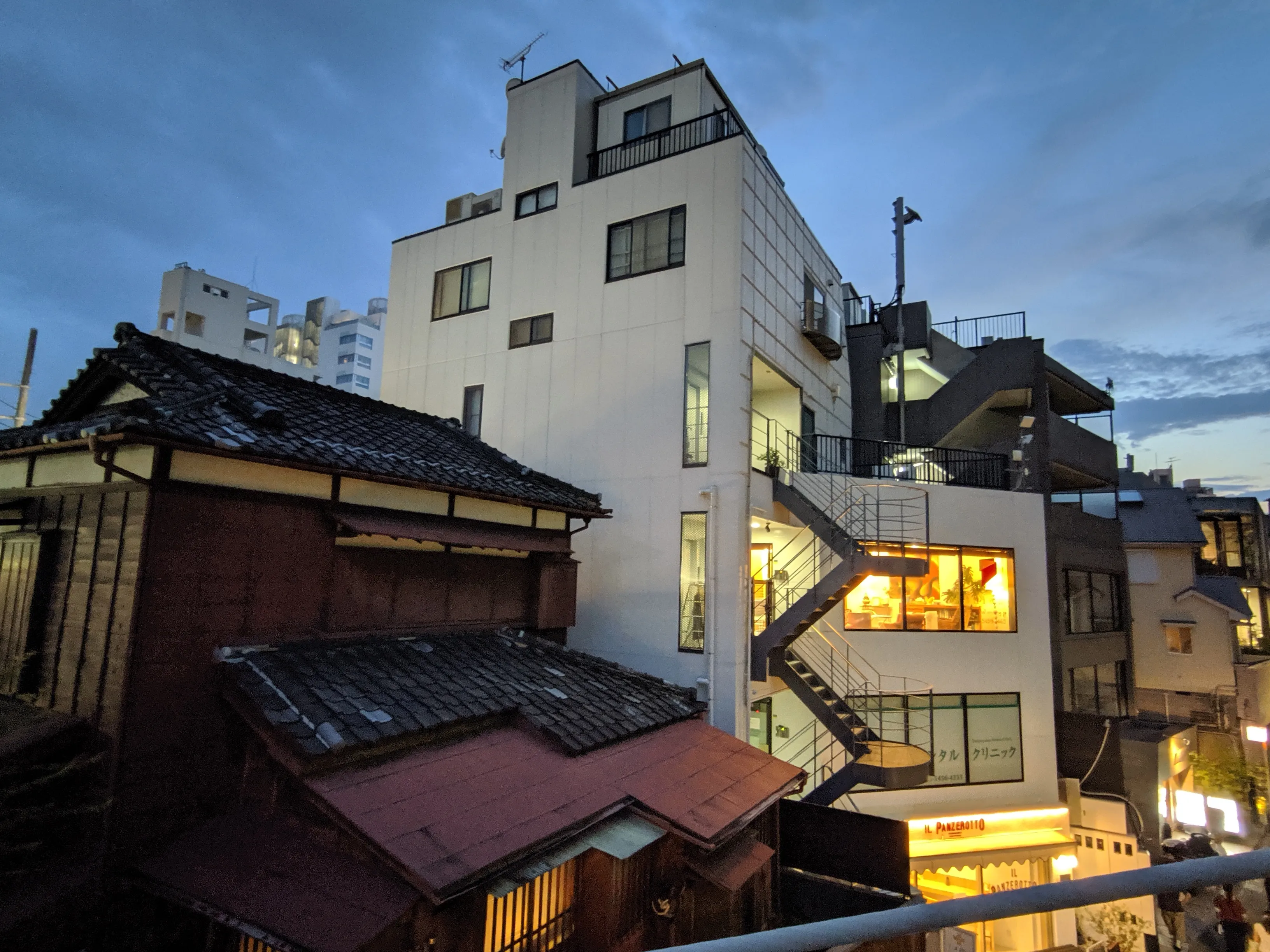
Daikanyama at night.
For me, the food in Tokyo alone is worth the 16+ hour flight. The highlight of the trip was undoubtedly my 45 minute meal at Sukiyabashi Jiro, the restaurant named after its sushi master Jiro Ono and the subject of the popular documentary Jiro Dreams of Sushi. Jiro, the oldest chef (93 years old at the time of my visit) to run a three Michelin-starred restaurant, served me the best sushi I’ve had in my life in at a small sushi bar in a subway station. It was phenominal.
Somehow, eating at the best sushi restaurant in the world didn’t ruin the rest Tokyo’s restaurant scene had to offer. I enjoyed Katsu, Ramen, Udon, Soba, and several other sushi spots across the city.
I love the facades of these sushi restaurants, in Ginza and Roppongi respectively.
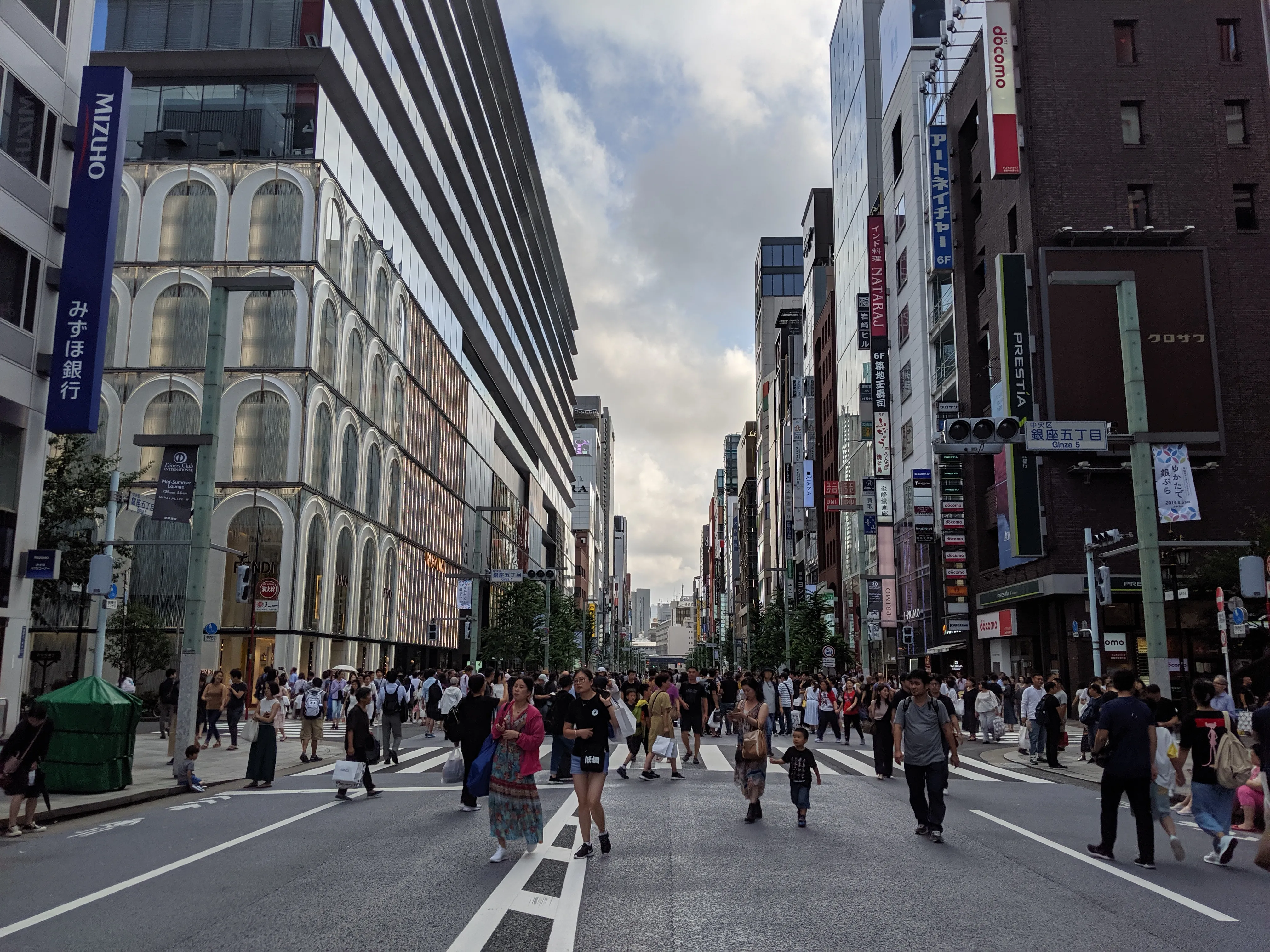
Walking down the street in Ginza.
In Nakameguro, I visited the largest Starbucks in the world, and tried their cold brew gin and tonic.
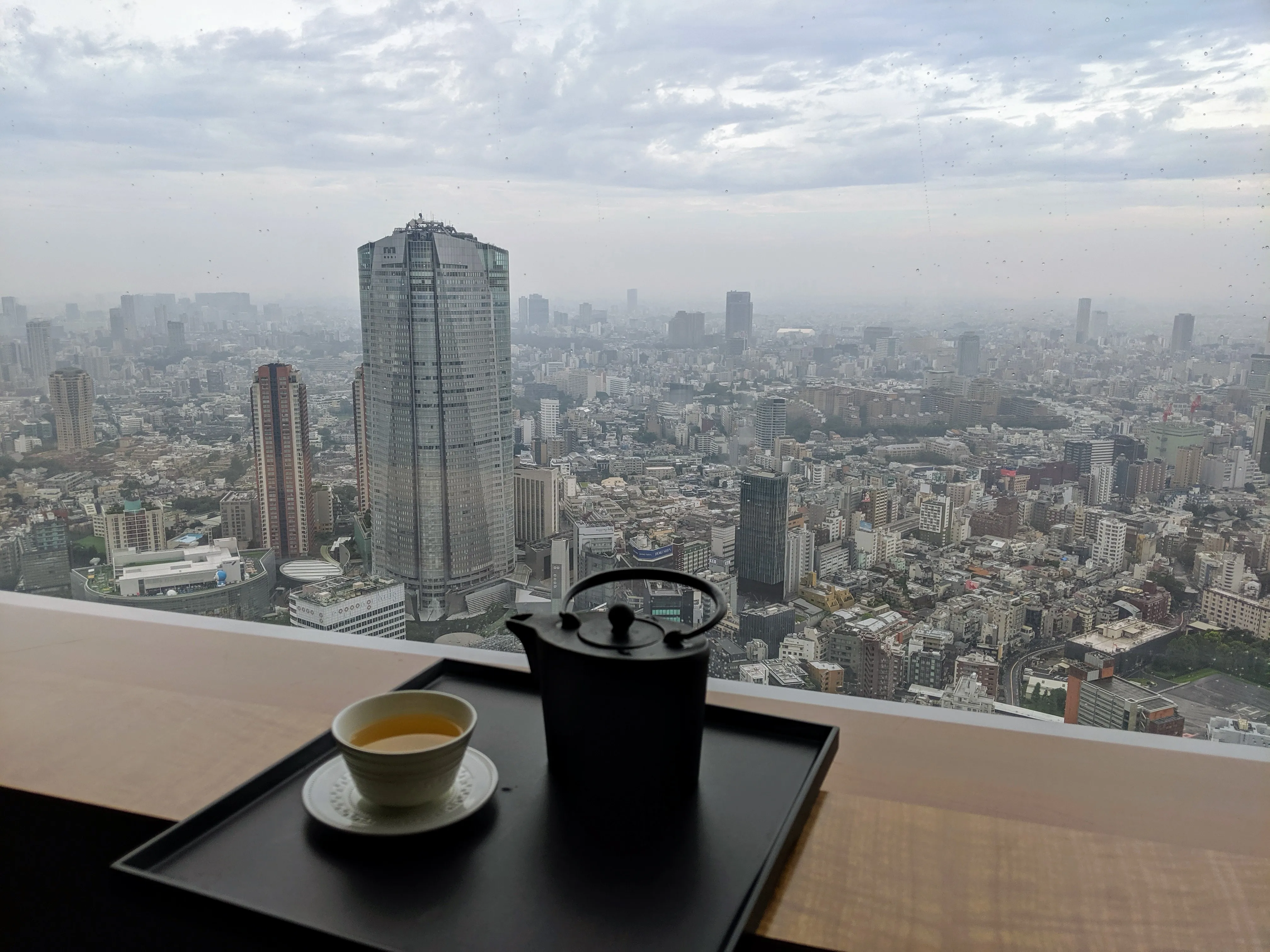
Nothing like some mint tea to end the day.
On a Sunday afternoon in Tokyo, I went to the Mori Art Museum, in at the top of Mori tower. I was impressed with the
exhibition on Japanese Architecture
I saw the year before, and wasn’t let down this time either.
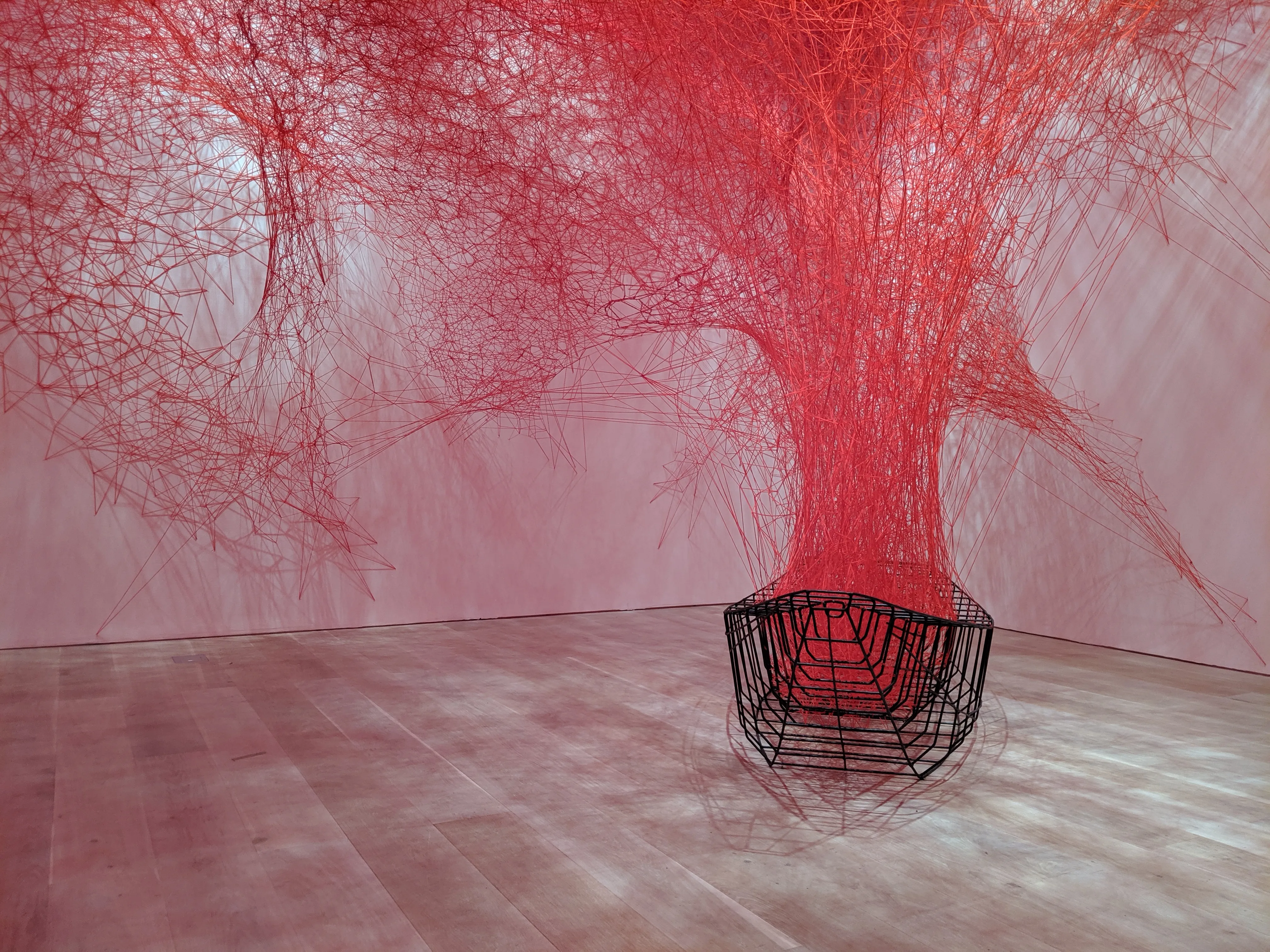
A black wire canoe serves as the origin point for a spider-web like explosion of red yarn.
Left:The museum entrance hinted at the theme of the exhibit. one of my favorite boats.
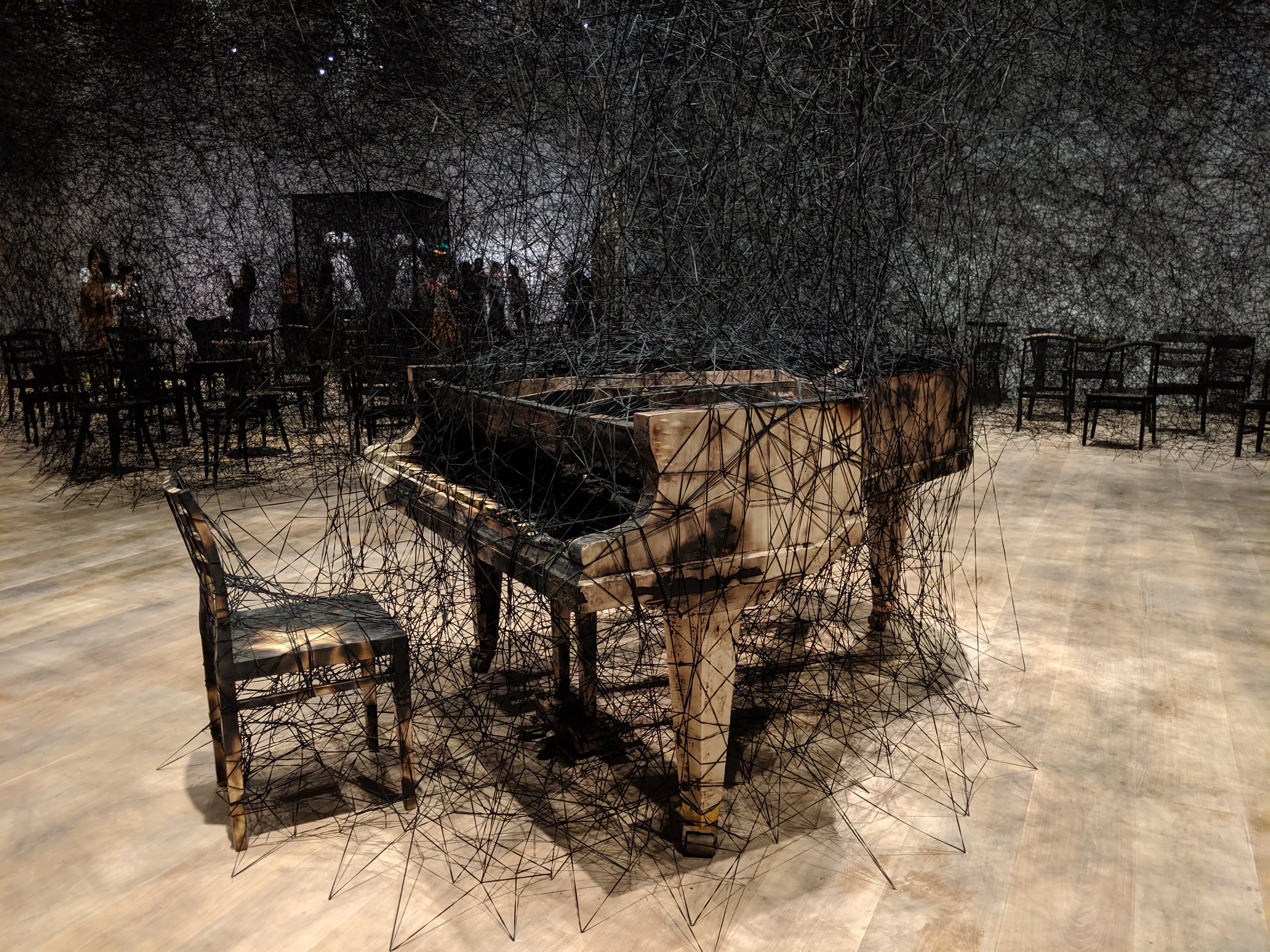
I love the maximalism of a burnt piano.
An entire audience's worth of chairs.
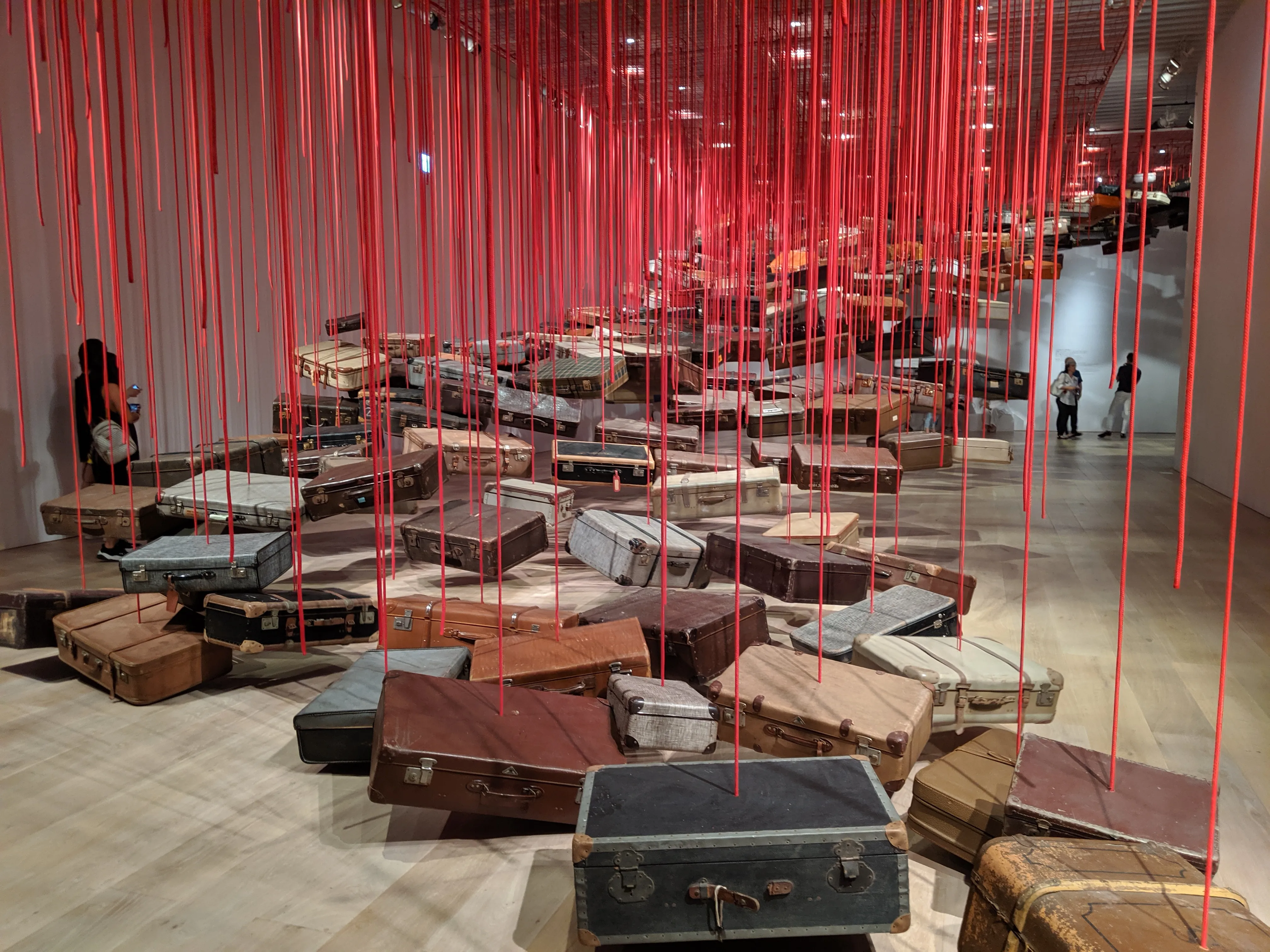
There's a metaphor here somewhere.
Fuji
I’ve always wanted to summit Mount Fuji. So when the idea of a sunrise hike came up amongst the group of friends I was traveling with, I was onboard instantly. Our plan seemed reasonable enough: take a late afternoon train from Tokyo to the 5th station (2300m), where we’d start the climb around 8pm. Around midnight, over half the way up, we’d spend a few hours sleeping at one of the stations and finish the last hour or two of the climb just before sunrise. The summit, at 3,776 meters, makes the climb a total of ~1500 meters.
The trouble was, things did not quite go as planned. We ended up not getting a reservation at a hut, leaving later in the day than we wanted, and found ourselves at the beginning of the hike at around 10:30pm. The result was that we were forced to power our way up the mountain in order to summit by sunrise. (Strongly discouraged.) At first, it seemed like we were making pretty good time, but after passing the final station on the mountain (just 330m left) my general weary became stomache aches and dizzy stumbling. Having read enough about elevation sickness, I decided to turn back and sleep for a few hours at Goraikou-kan, the highest hut on the mountain.
I didn’t get to summit Mount Fuji. I’ll be back though! If I had either an oxygen tank, a bit more food and water, or most importantly, time to adjust to the elevation at a hut baked into the hike time, I could have easily made it the last few minutes to the summit. I didn’t get sunrise from the summit, but I did get a pretty good view.
A view of sunrise from the final station on Fuji. Me, in better spirits, on the descent.
Matsumoto
Tired and hungry from our hike, our group headed inland to Nagano prefecture, where we made our first stop in Matsumoto, and old castle town from the Sengoku period (constructed in 1504). We enjoyed hearty meals,
one of the best Brittish-style cocktail bars
I’ve been to, and a brilliant art museum featuring the work of Yayoi Kusama.
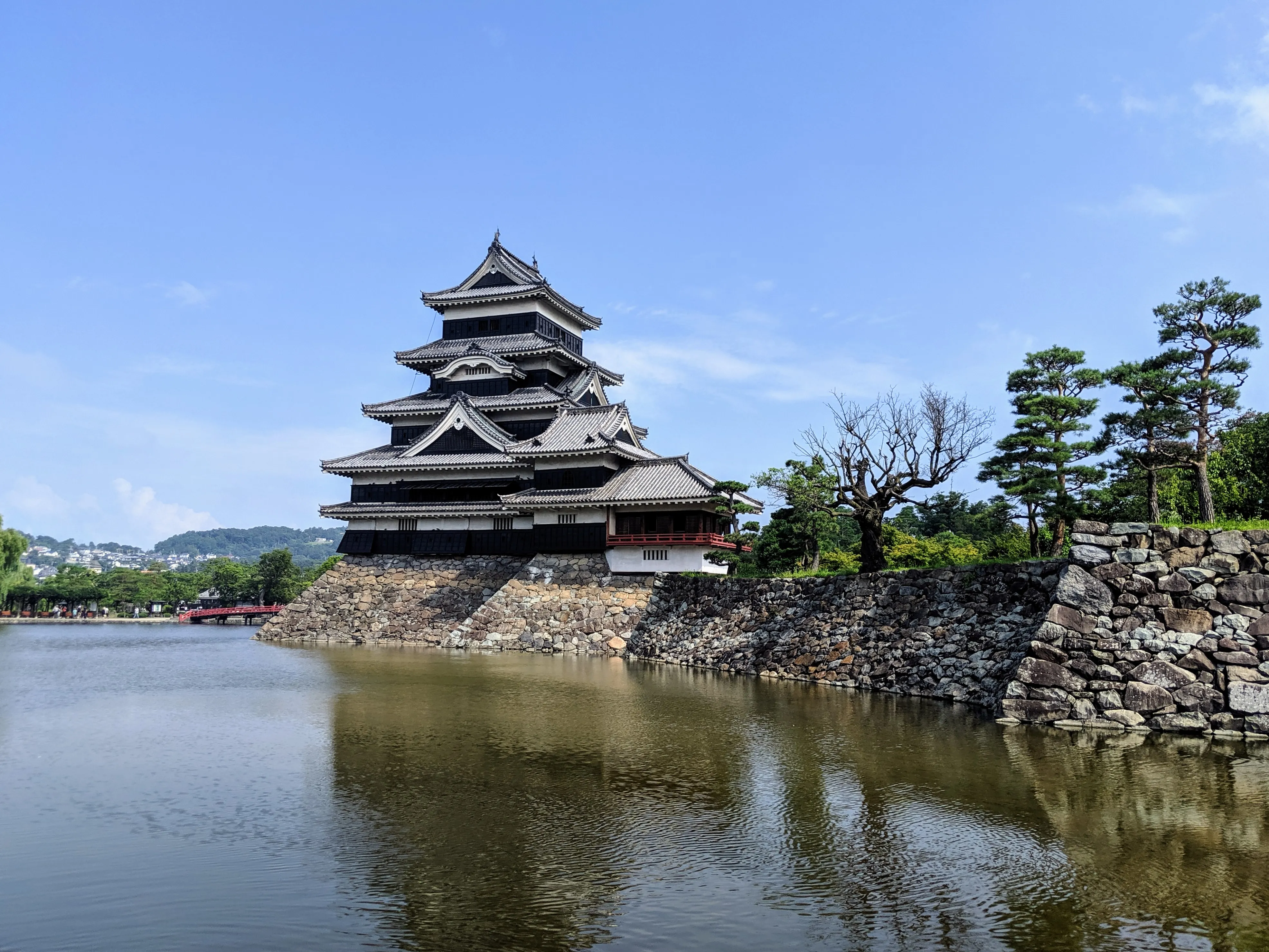
Matsumoto Castle's moat is surprisingly shallow.
From inside the castle, there are great vantage points to admire the architecture and gardens.
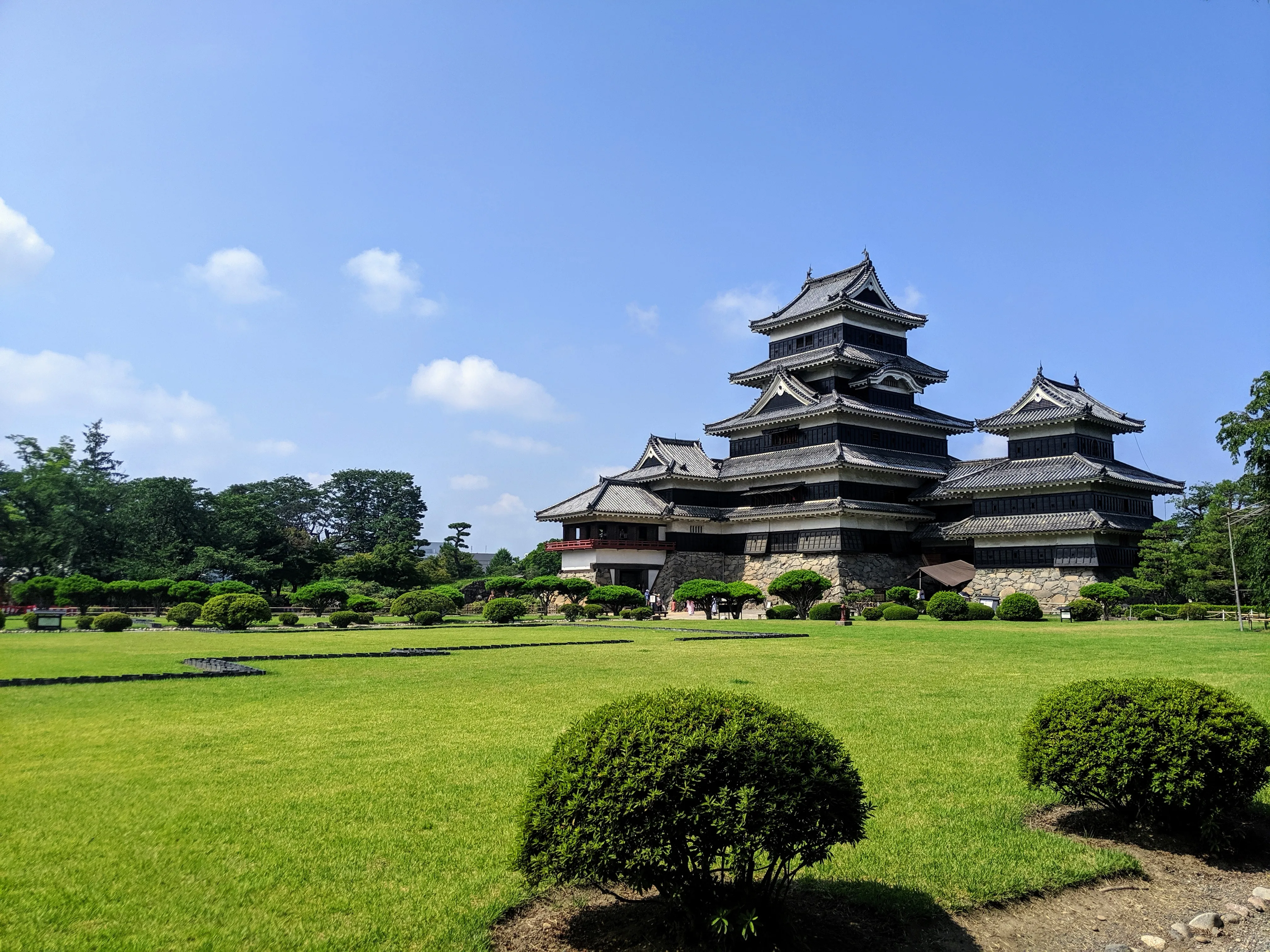
Walking around the castle garden was a highlight.
Walking around Matsumoto was a good change of pace after Mount Fuji.
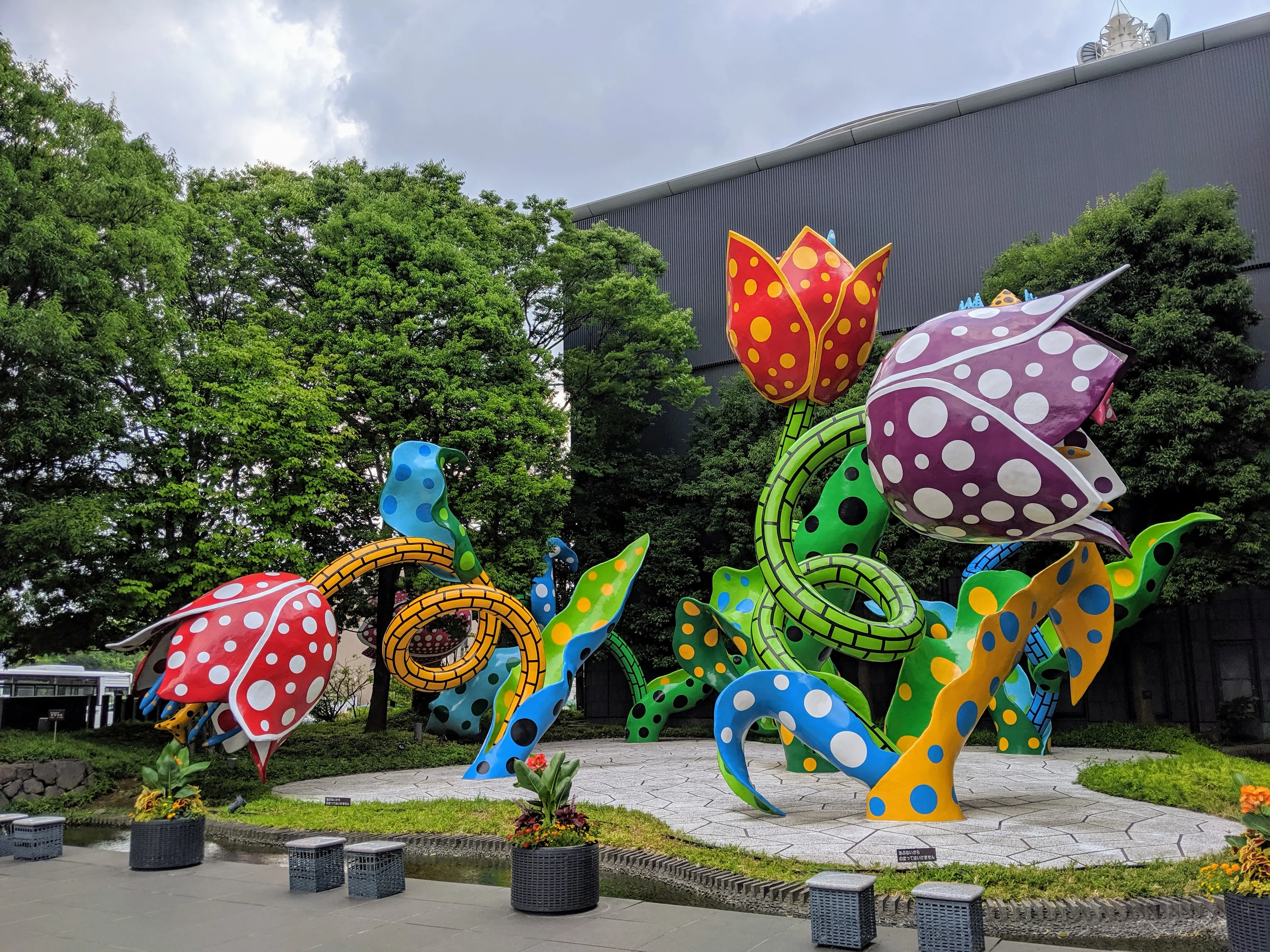
The Matsumoto Museum of Art displays the work of Yayoi Kusama in the permanent collection. Matsumoto is her hometown.
Kamikochi
The next day, we took a bus into the Japanese alps towards Kamikochi, where we stayed at a quaint ryokan nestled into the mountains. After relaxing in the onsen and spending the night, we spent the next day exploring the mountain valley.
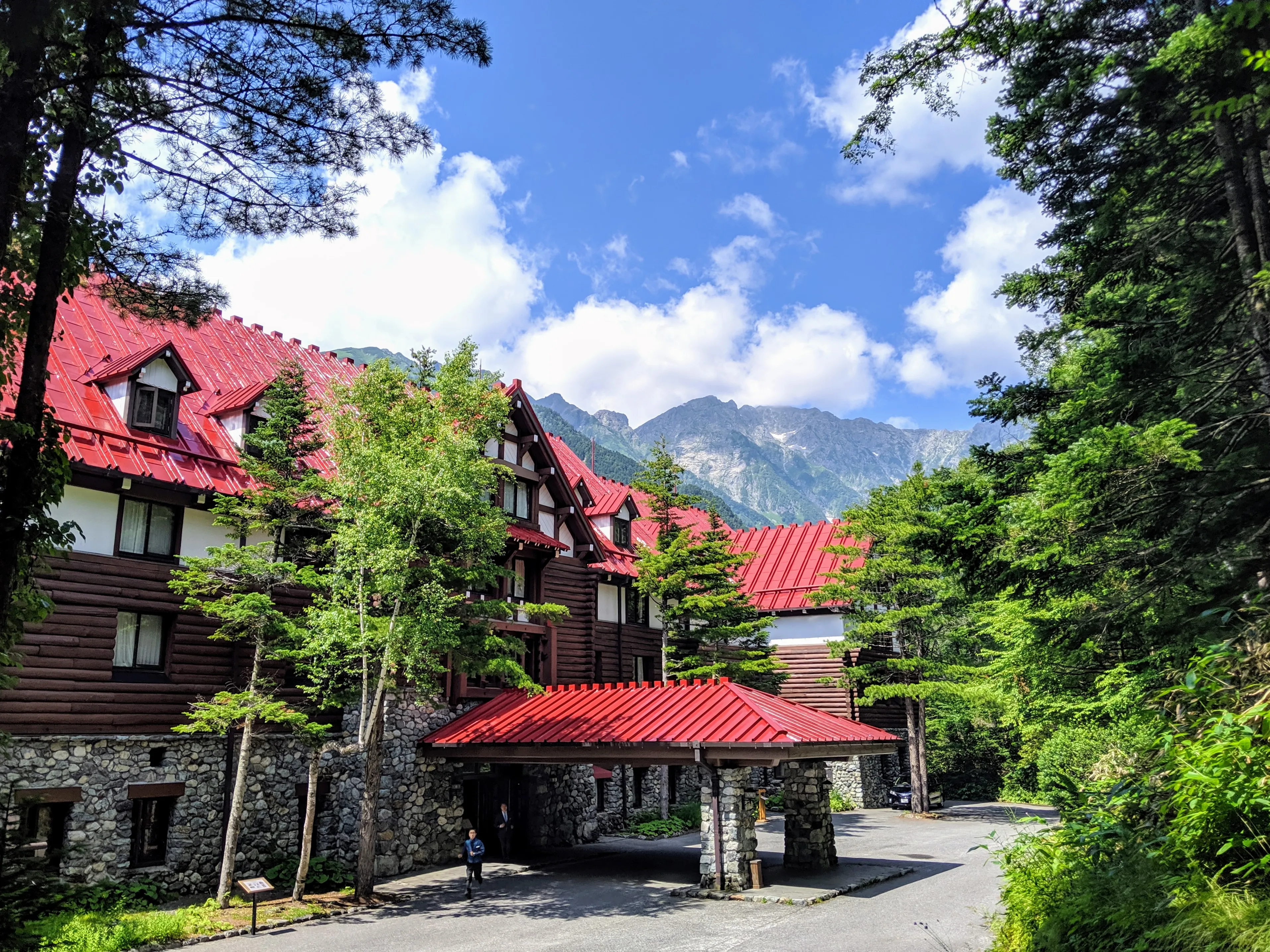
We didn't stay in the Kamikochi Imperial Hotel, but we did stop by to check out the famous lodge.
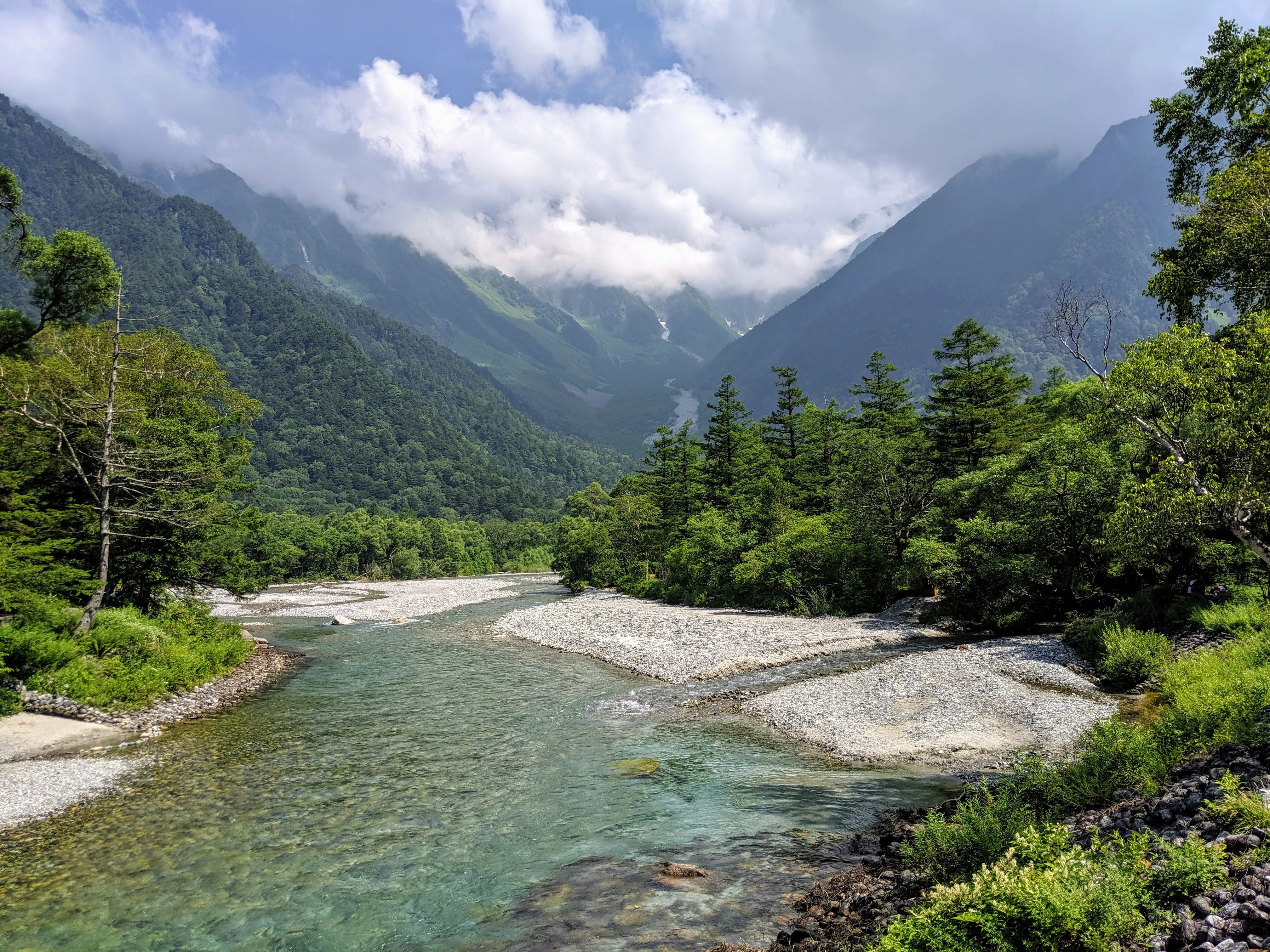
The river valley didn't disappoint.
The weather was perfect for our short loop hike around the valley.
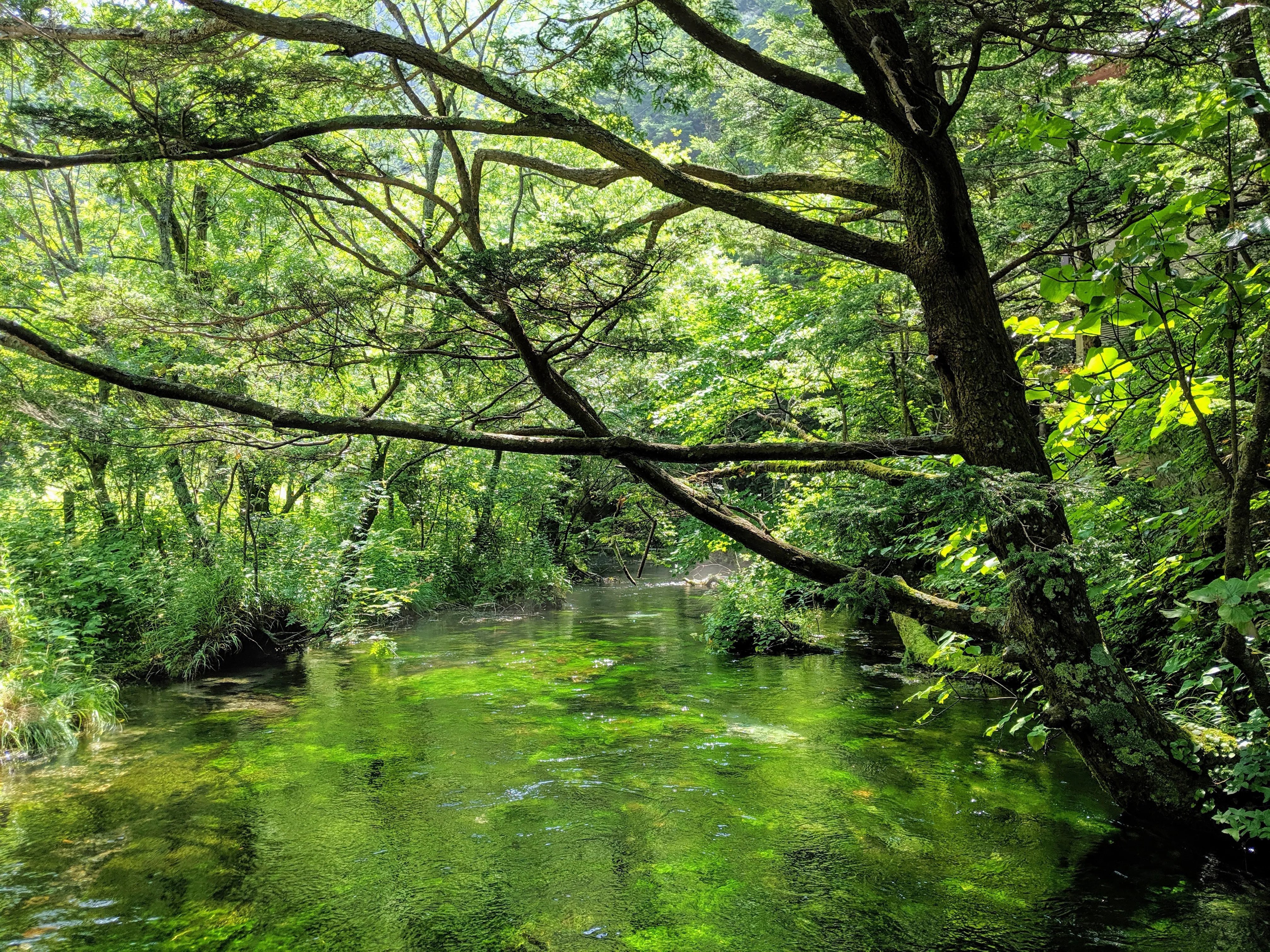
I love the dramatic color of this stream. The water was COLD!
a humid swamp. Families hung out by the river.
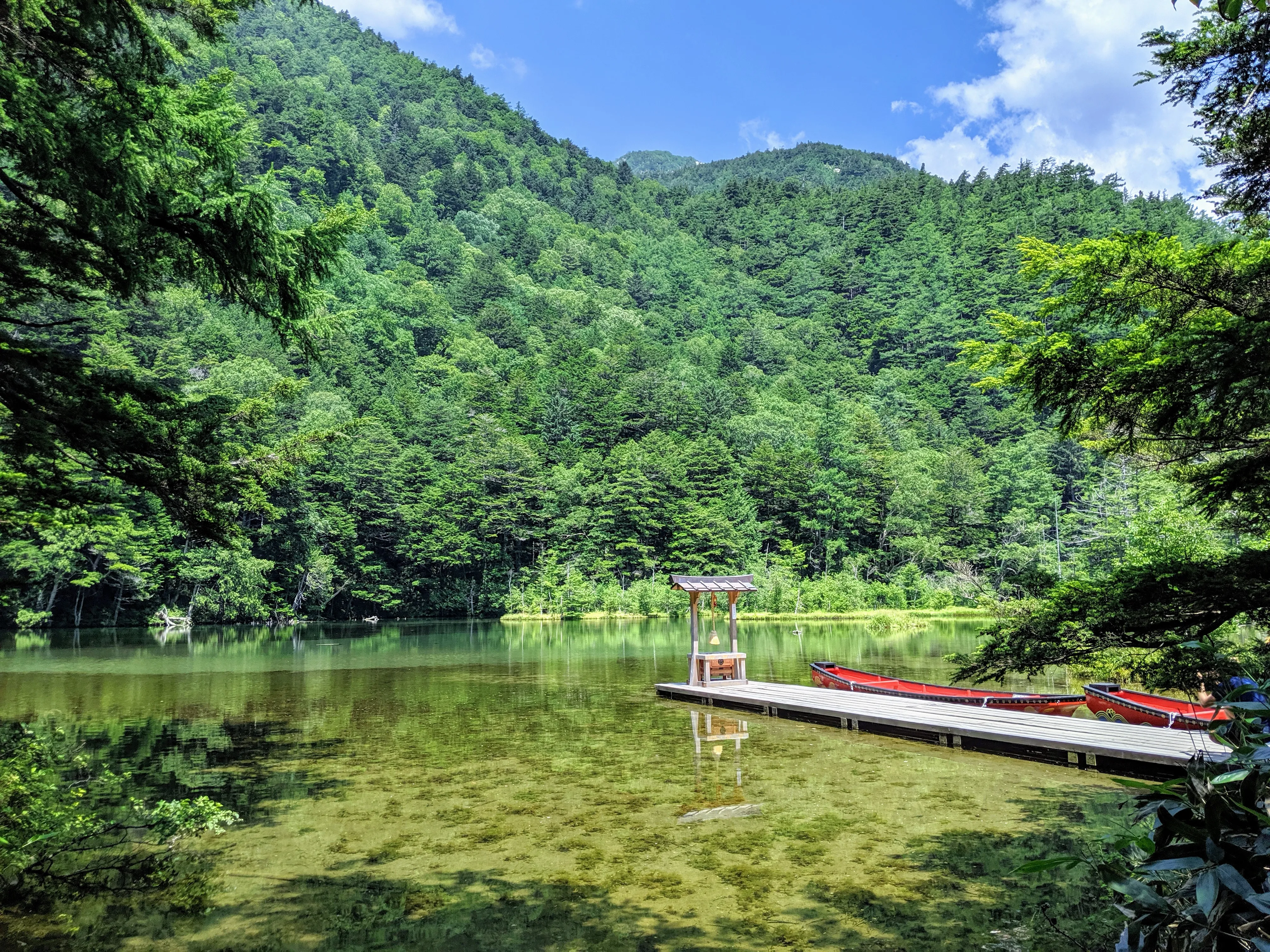
We stumbled upon a shrine located at the end of a dock in a lake, a few minutes off the main trail.
Narai
Our last stop as a group was to Narai, a small, one-street town one valley south of Kamikochi in the Nagano mountains. While I only got a few hours in town before heading back to Tokyo, I’m glad we made the visit. Alongside getting to see the beautiful facades of the main street, I also had a delicious bowl of udon at a small restaurant near the train station.
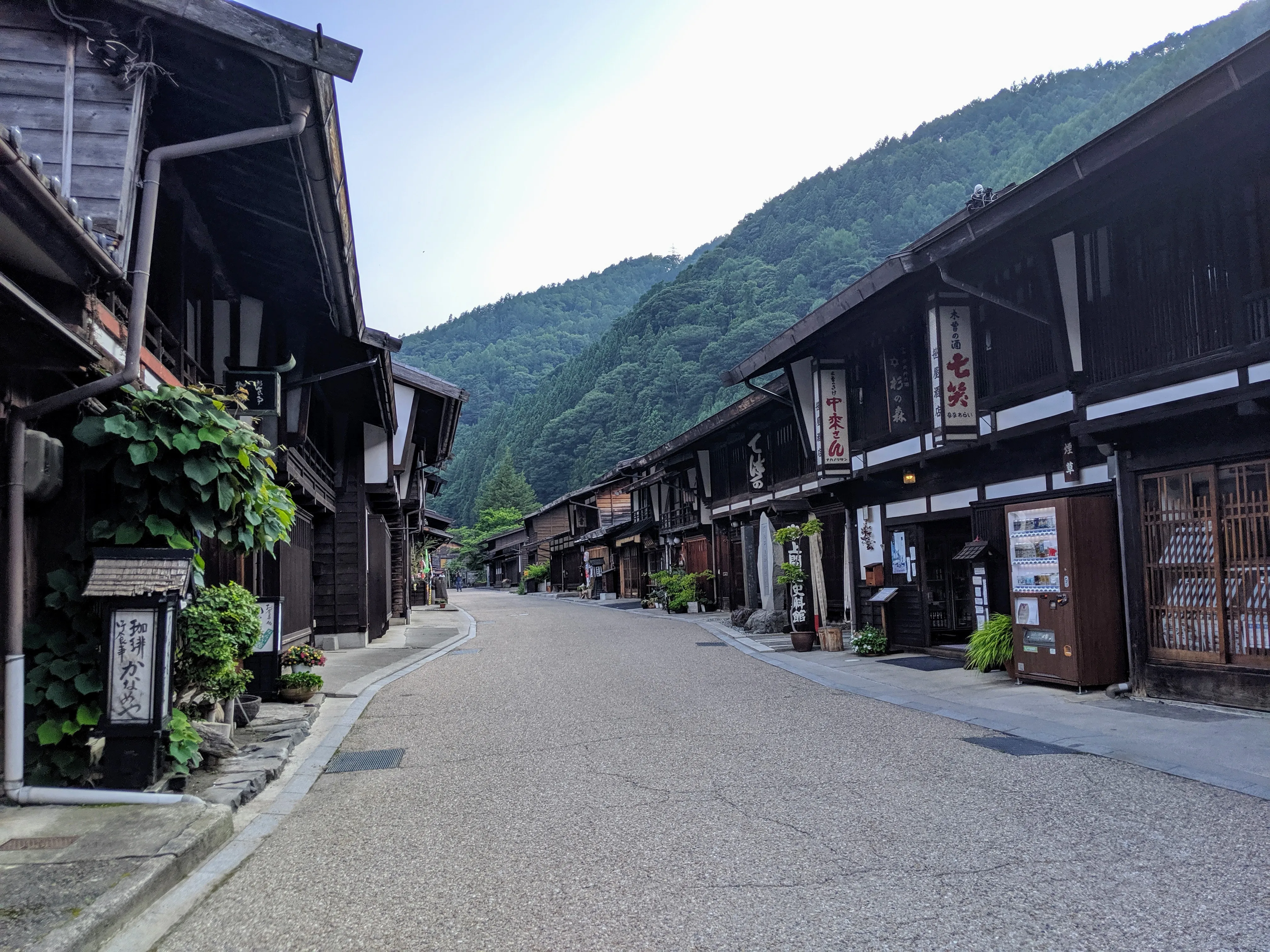
The very picturesque main street of Narai.
I love the detailed craftsmanship put into every structure and garden.
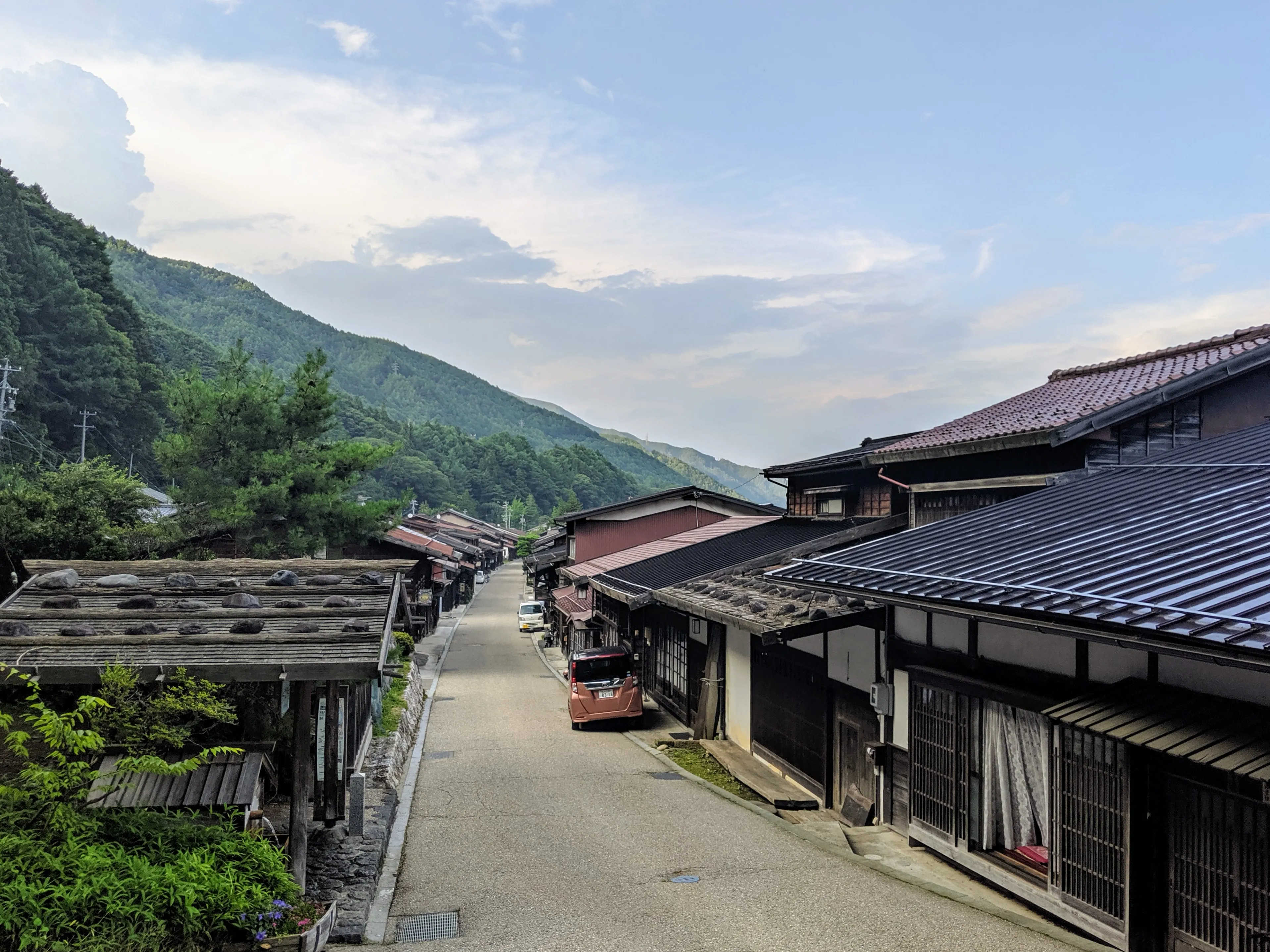
Narai is pressed up against a mountain range covered in trees.
Tokyo
After parting ways with the group, I headed north towards Sapporo. On the way, I stopped in Tokyo, where I had made a reservation (over a month in advance) at the Ghibli Museum. While I had felt silly frantically refreshing the ticketing website earlier that summer in New York, it was well worth the effort.
The Ghibli Museum is worth a visit for the design alone. The building’s exterior sets the perfect tone of magic and wonder, the internal layout encourages exploration, and the little details of the decorating is very on brand. The exhibits, though, were really the main attraction. In the permanent collection, I saw examples of how the movies are made, inspiration and concept art for Ghibli films, as well as a history of the company. The temporary exhibition, my personal favorite, was a deep dive into the color science, selection, and execution that goes into each frame of the films. For each character, they explained, the artists at Ghibli map out all the colors that compose the character and their outfit in direct light and in shadow, at various times of day. These colors are all coded (B-43 being the color of a character’s eyes), and then each frame of animation is composed from black lines and labeled paint-by-numbers style. Fascinating.
At the end of my visit, I entered the museum’s theater to watch a 15-minute film that is only screened there. There is a collection of films, it seems, that are displayed in rotation, at the museum only.
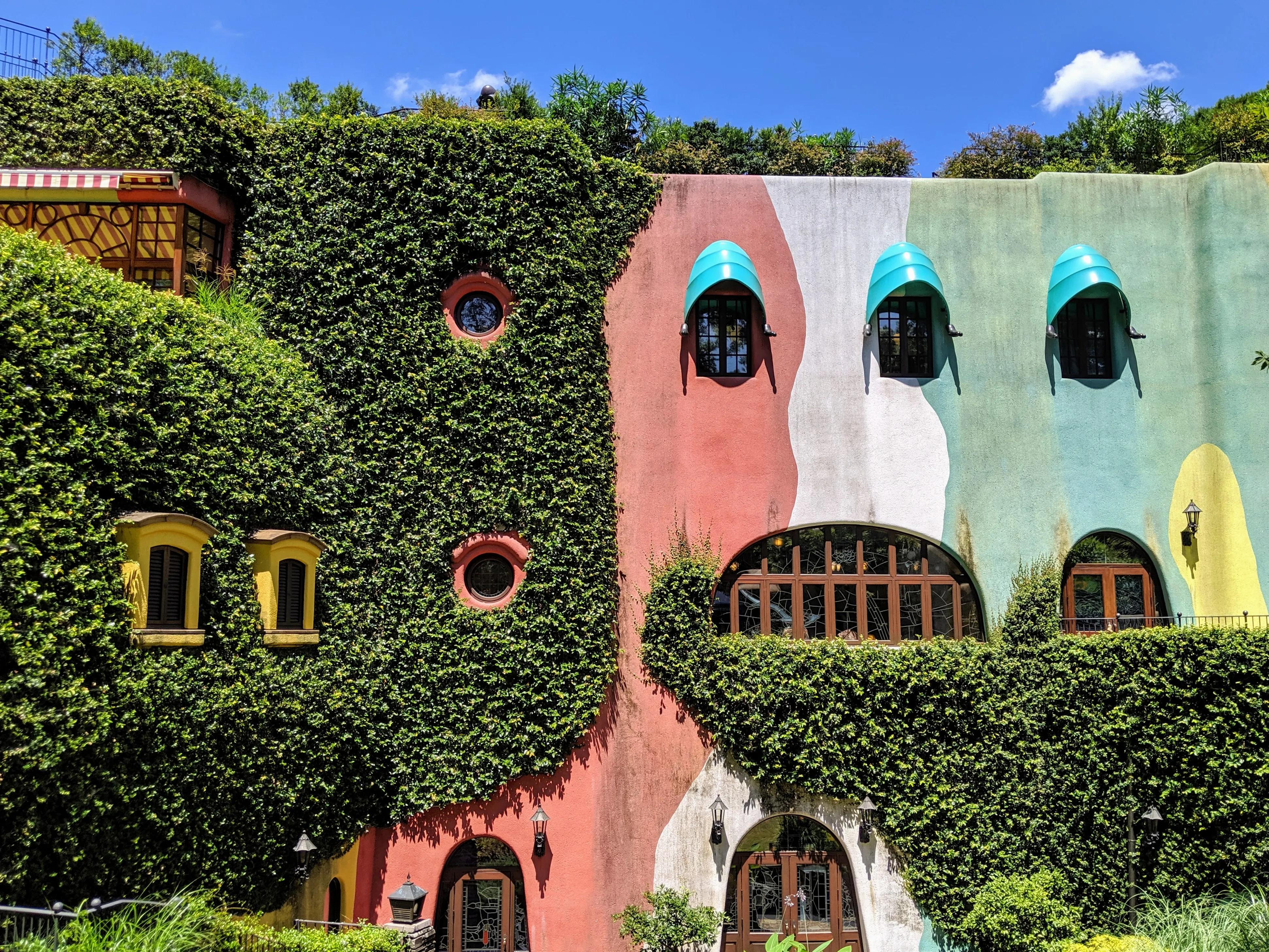
The exterior of the building screams Ghibli.
I love the way it blends into the nearby trees.
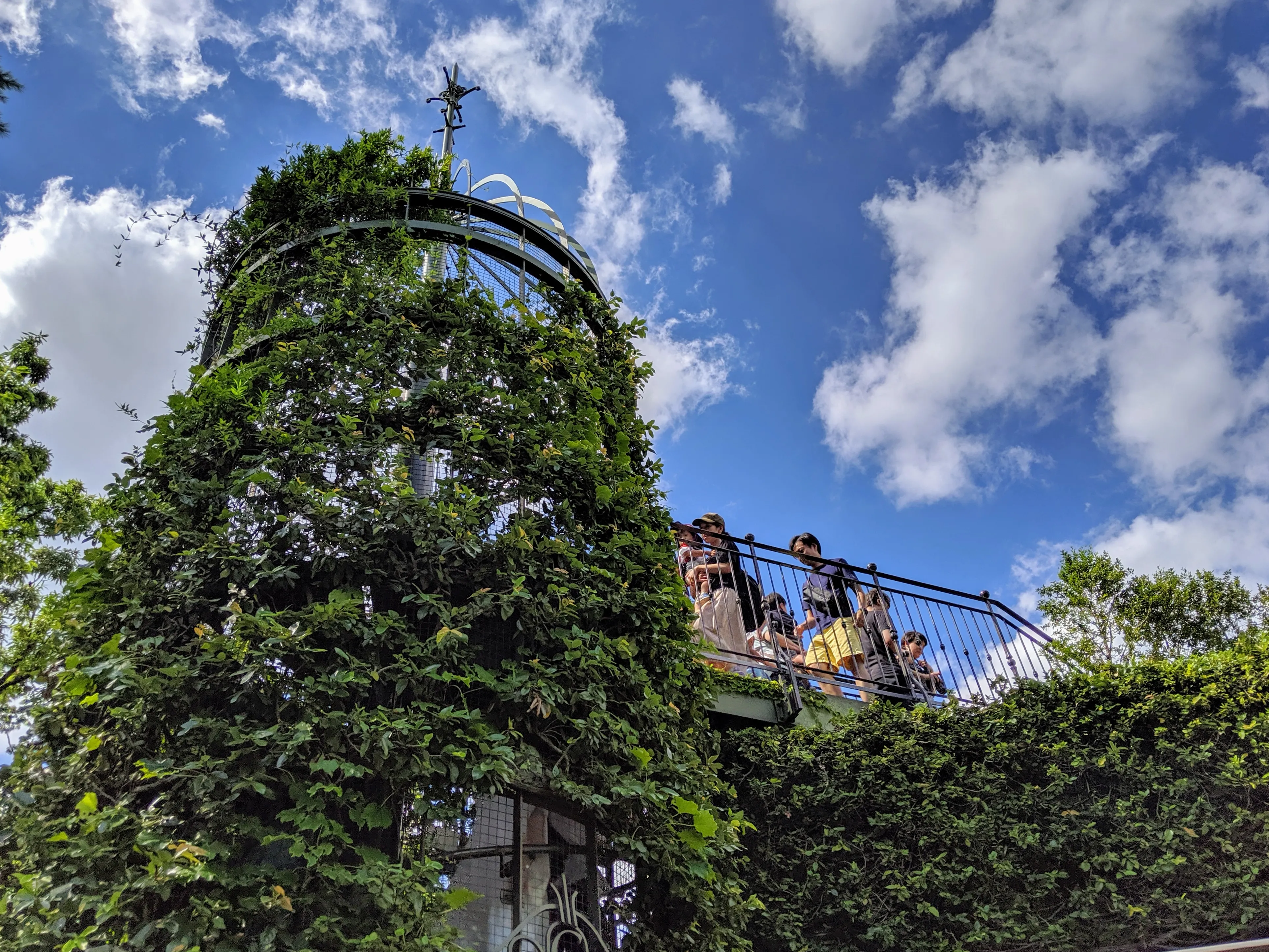
From the third floor balcony, I was invited to walk up the spiral staircase to the roof.
Sendai, Matsushima, and Yamadera
After a short Shinkansen ride, I found myself in Sendai, the capital of Tōhoku (northeast Japan). From there, I took two short day trips, one to Matsushima, and another to Yamadera. The former, a bayside town known for its idiosyncratic islands, was a wild to see.
Two islands off the coast of Matsushima. I took a morning water taxi that took me from Sendai to Matsushima.
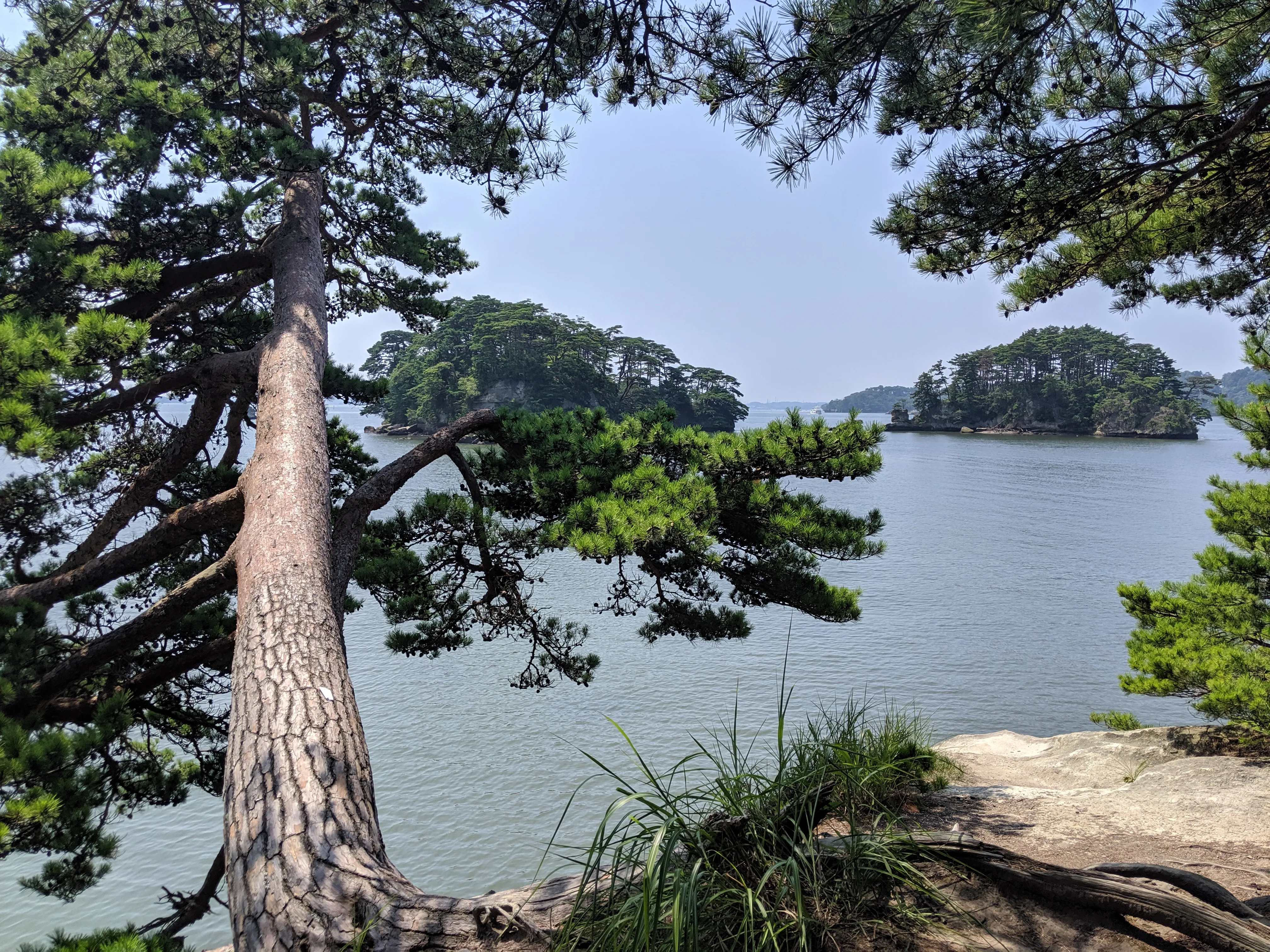
A view from one of the islands.
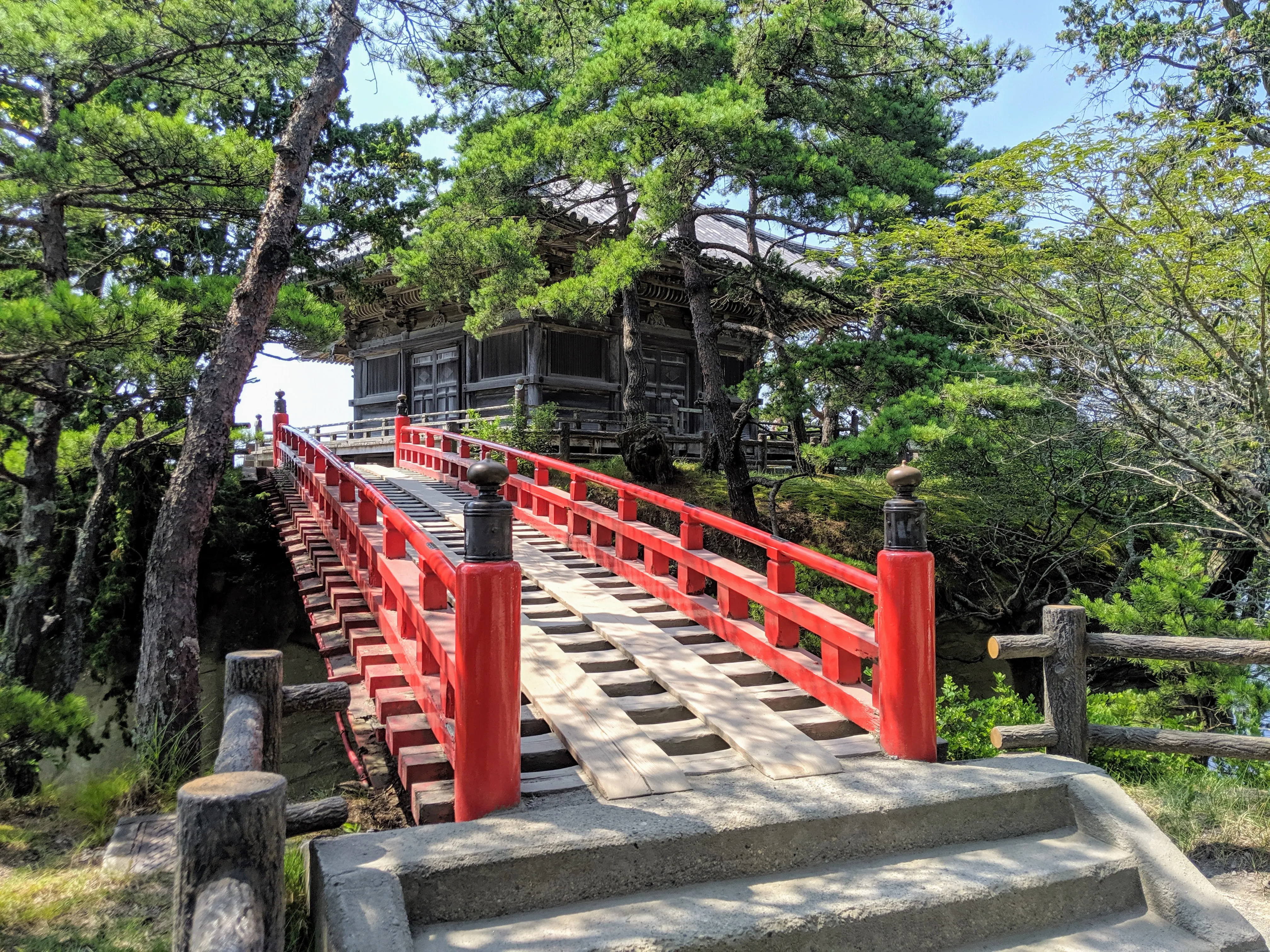
Godaidō Temple sits right on the water.
Zuiganji Temple, located a few minutes inland, is much larger. I love the garden!
The path to Oshima island doesn't disappoint.
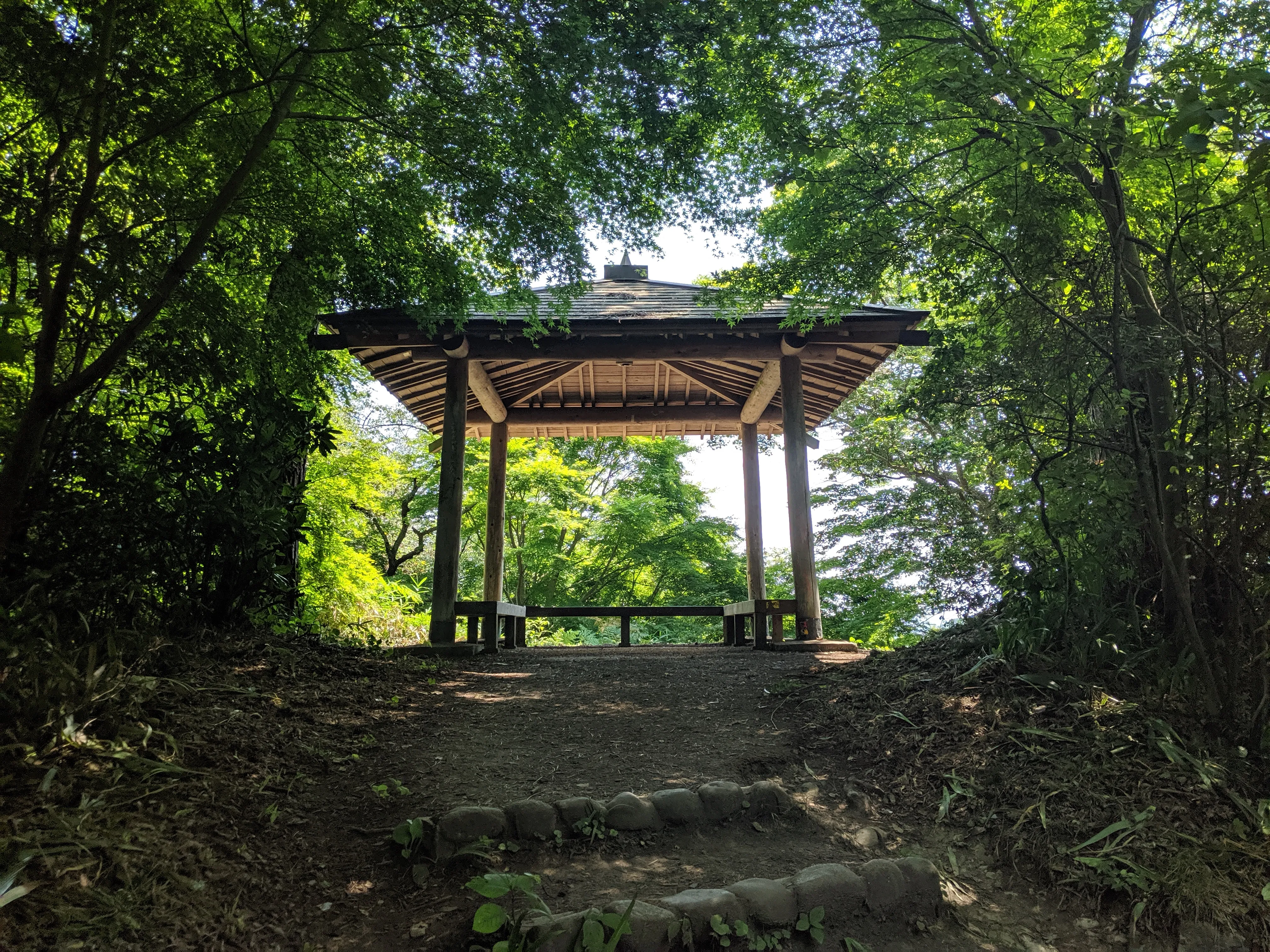
A viewpoint on Fukuurajima Island.
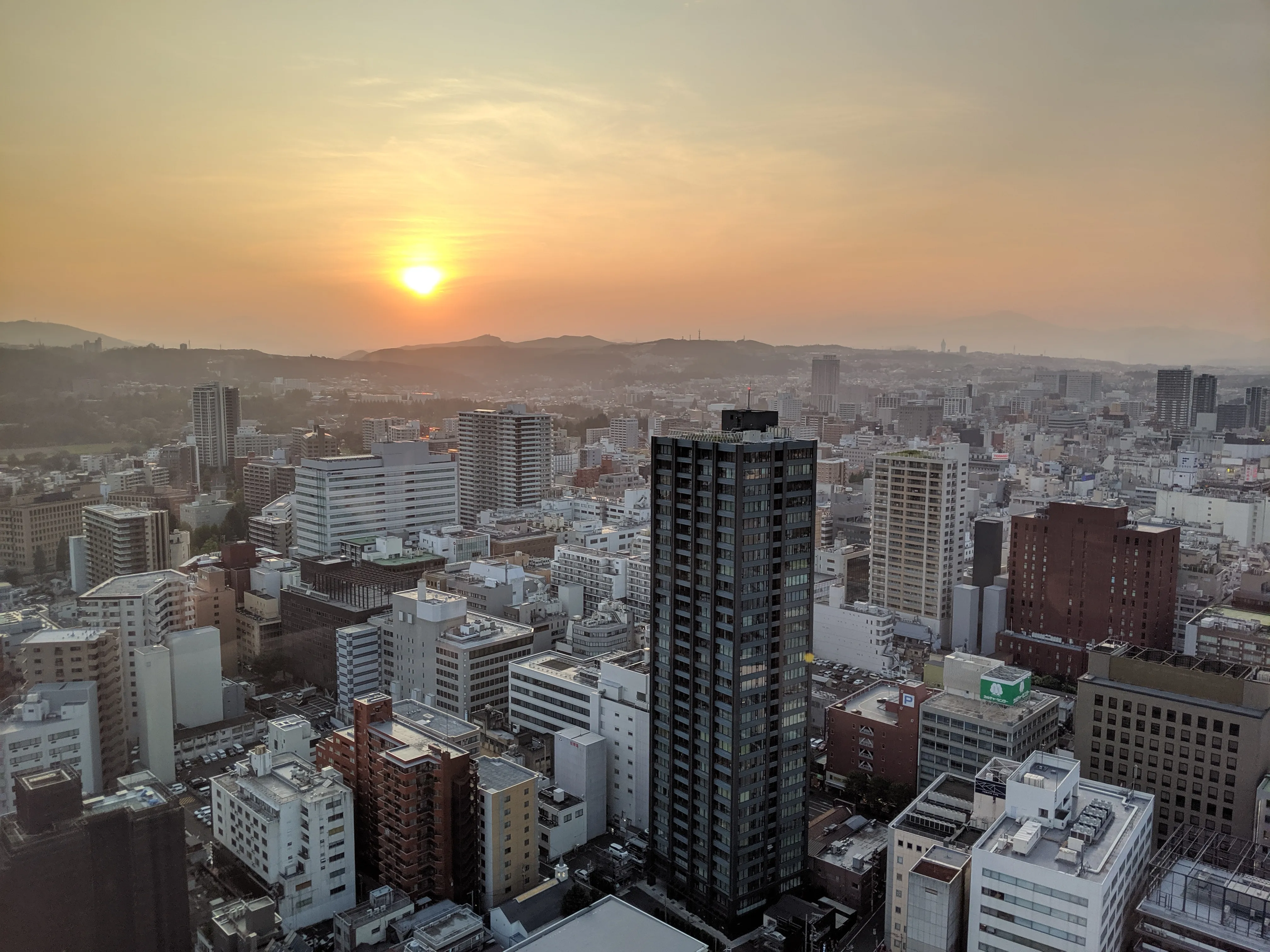
I watched the sun set in Sendai after a great day by the bay.
The next day, having not quite escaped the heat of Tokyo, I headed into the mountains towards Yamadera, a mountainside temple that had piqued my interest for months before the trip. The 90-minute train ride in and back was a welcome respite. Once I arrived at Yamadera station, I headed into the forest and up the mountain.
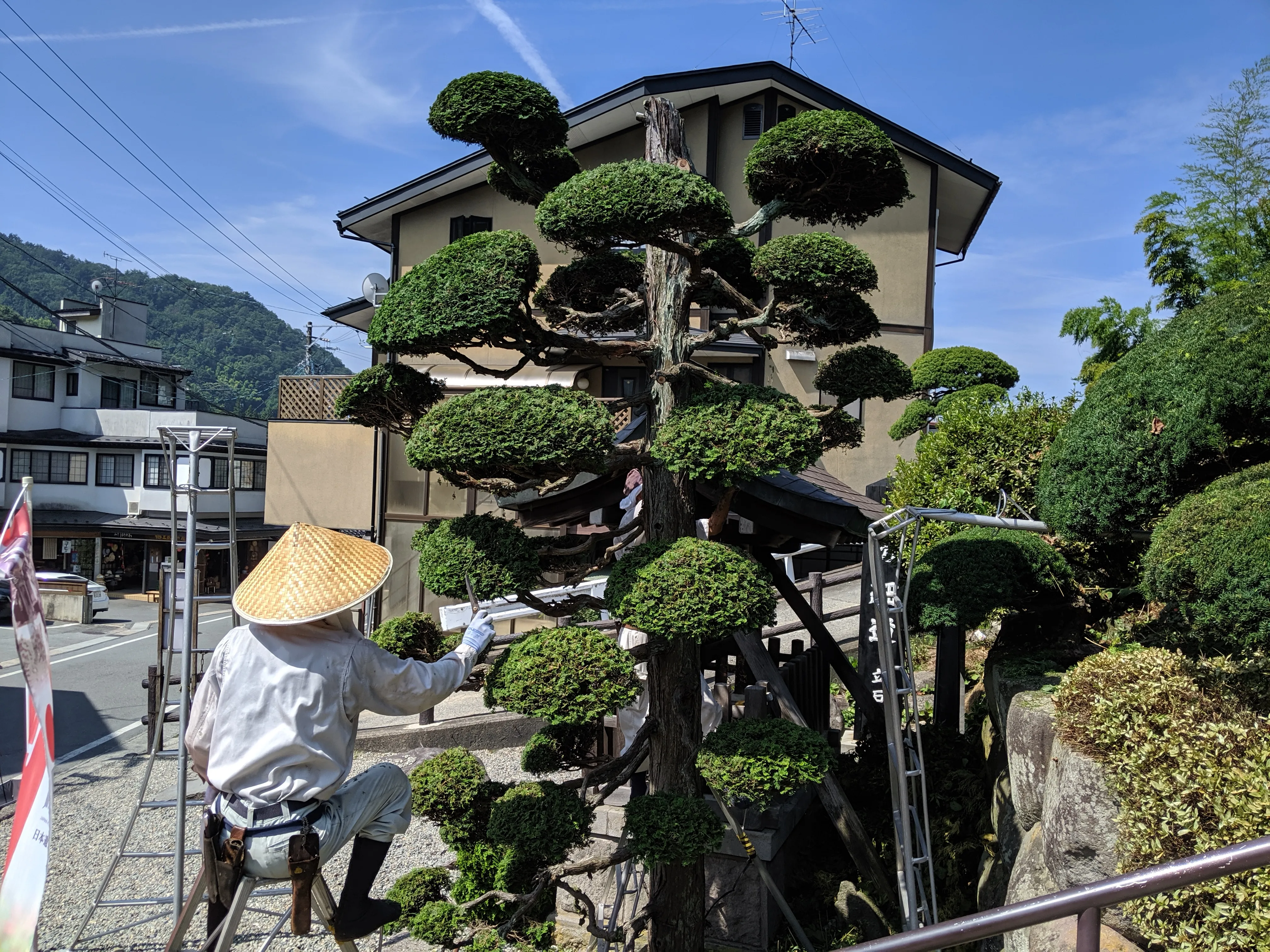
As I walked through town, I saw this man, pruning a bonsai.
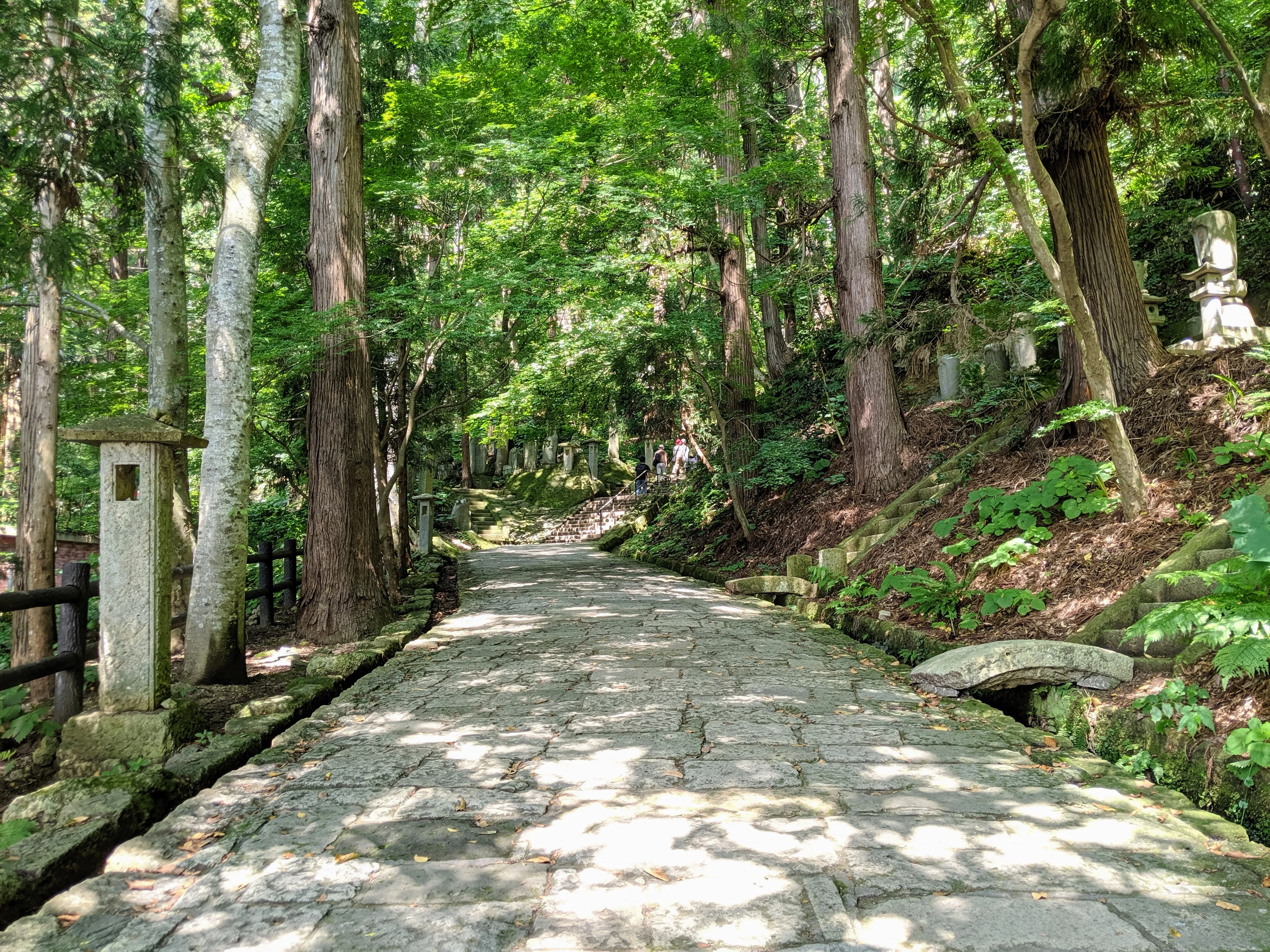
The start of the climb was a gradual ramp.
There were uncountable small lanterns and gravestones peppering the hillside.
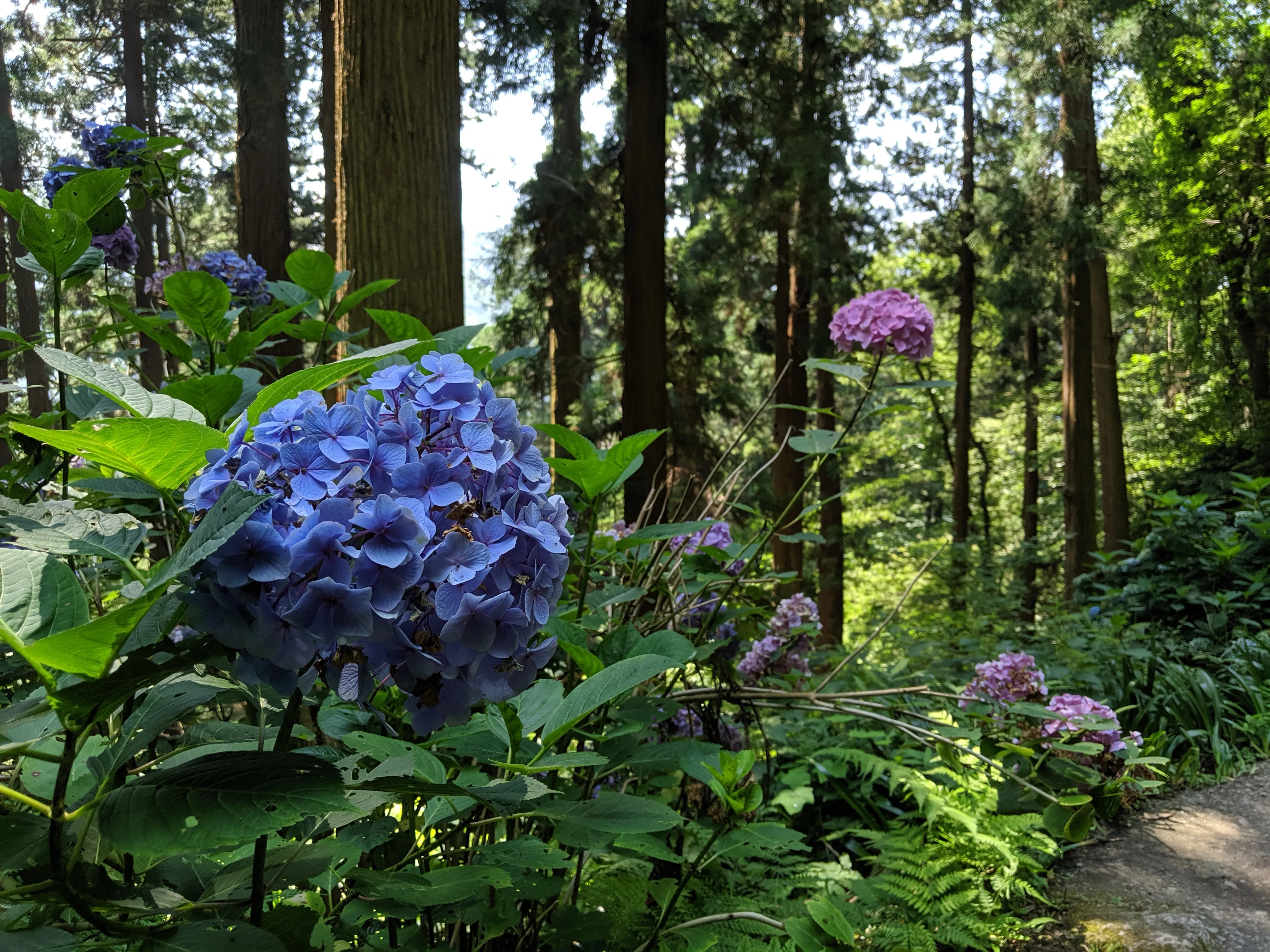
I love the bold color of these flowers I spotted alongside the trail.
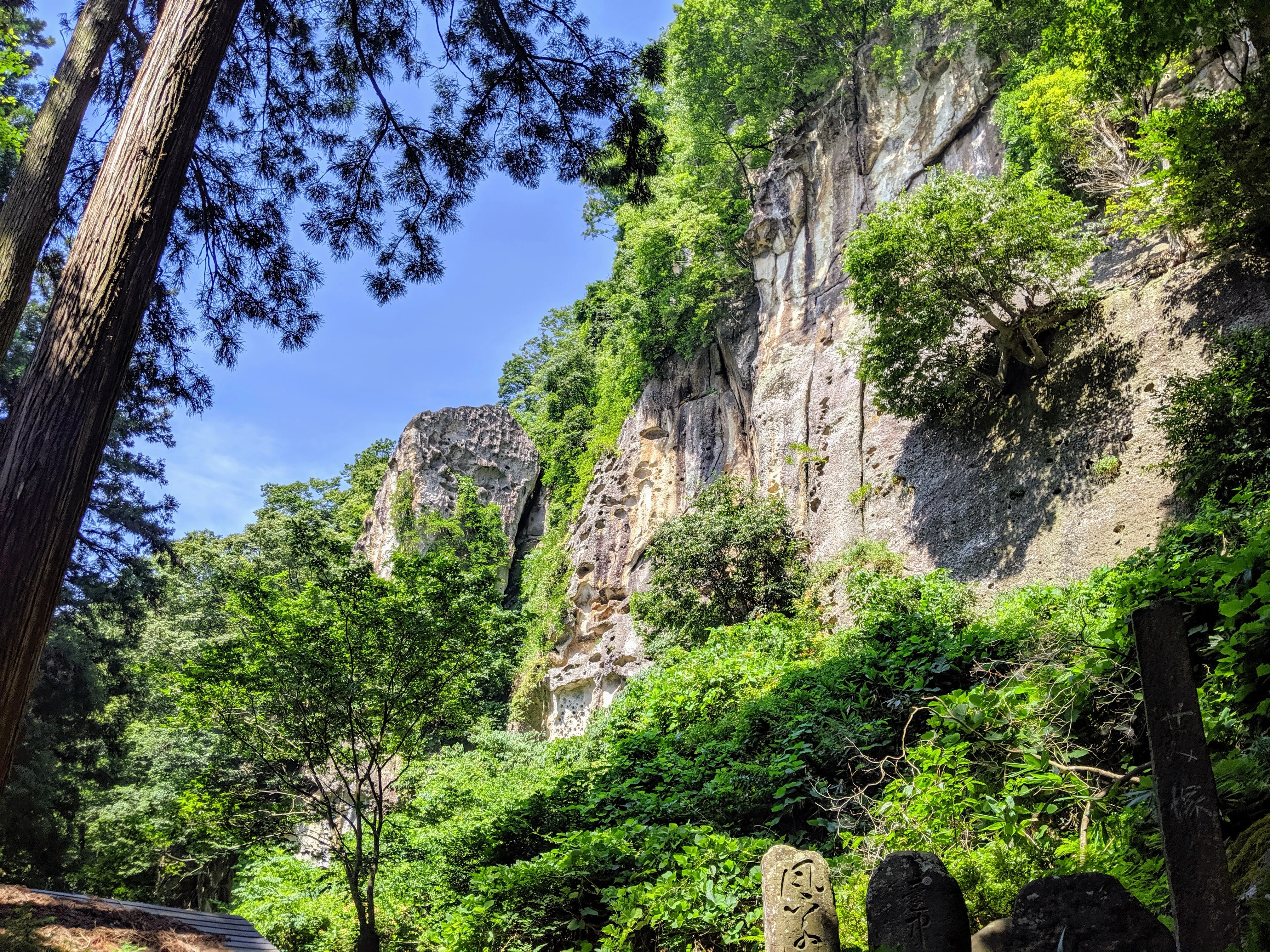
As I climbed higher and higher, I caught this glimpse of light shining on a cliffside above me.
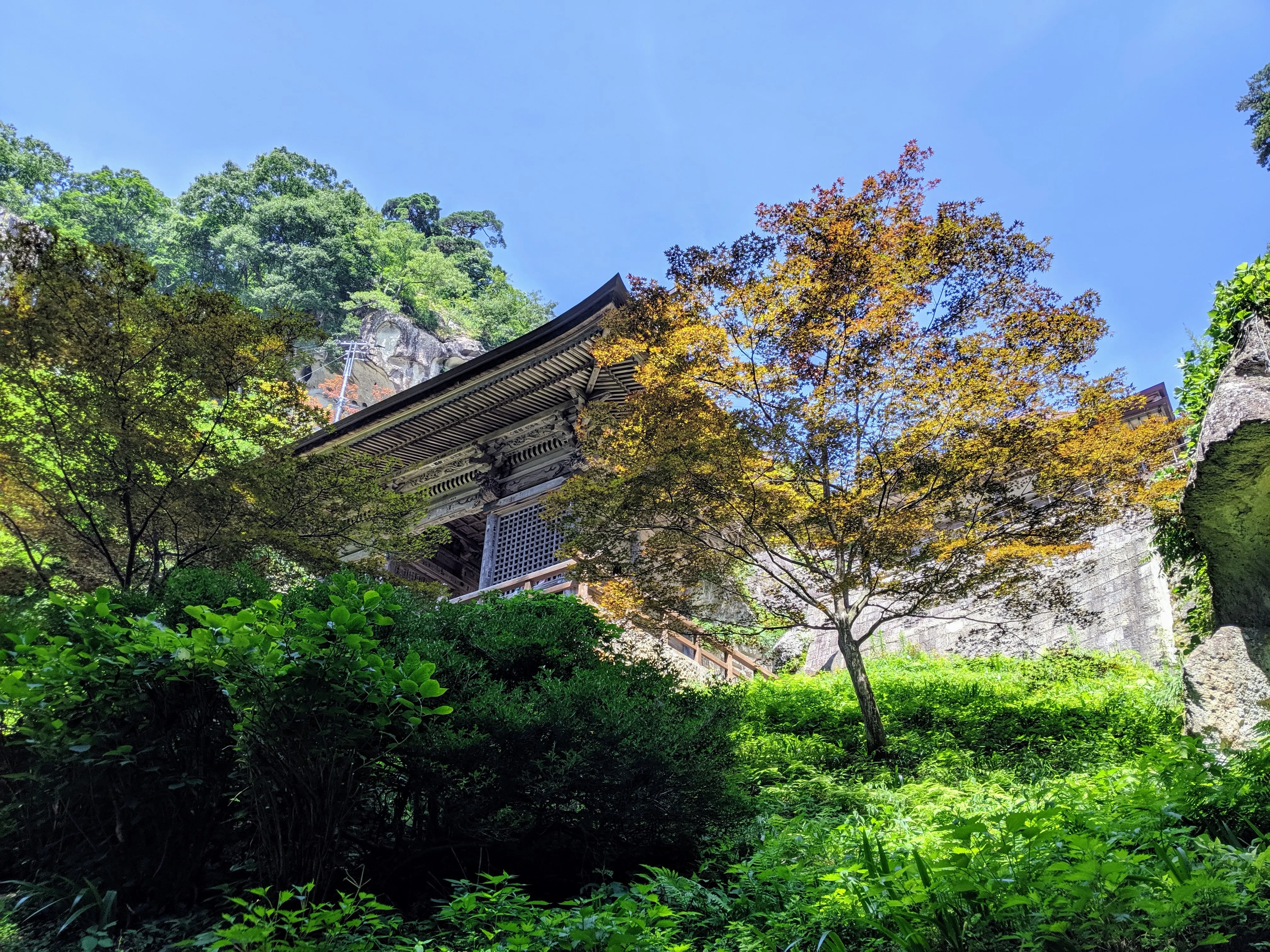
I didn't think much of it at the time, but I absolutely love this picture of the Yamadera gate from below.
Up in the mountains was the shrine complex. I found myself drawn to the elegant design of the roofs.
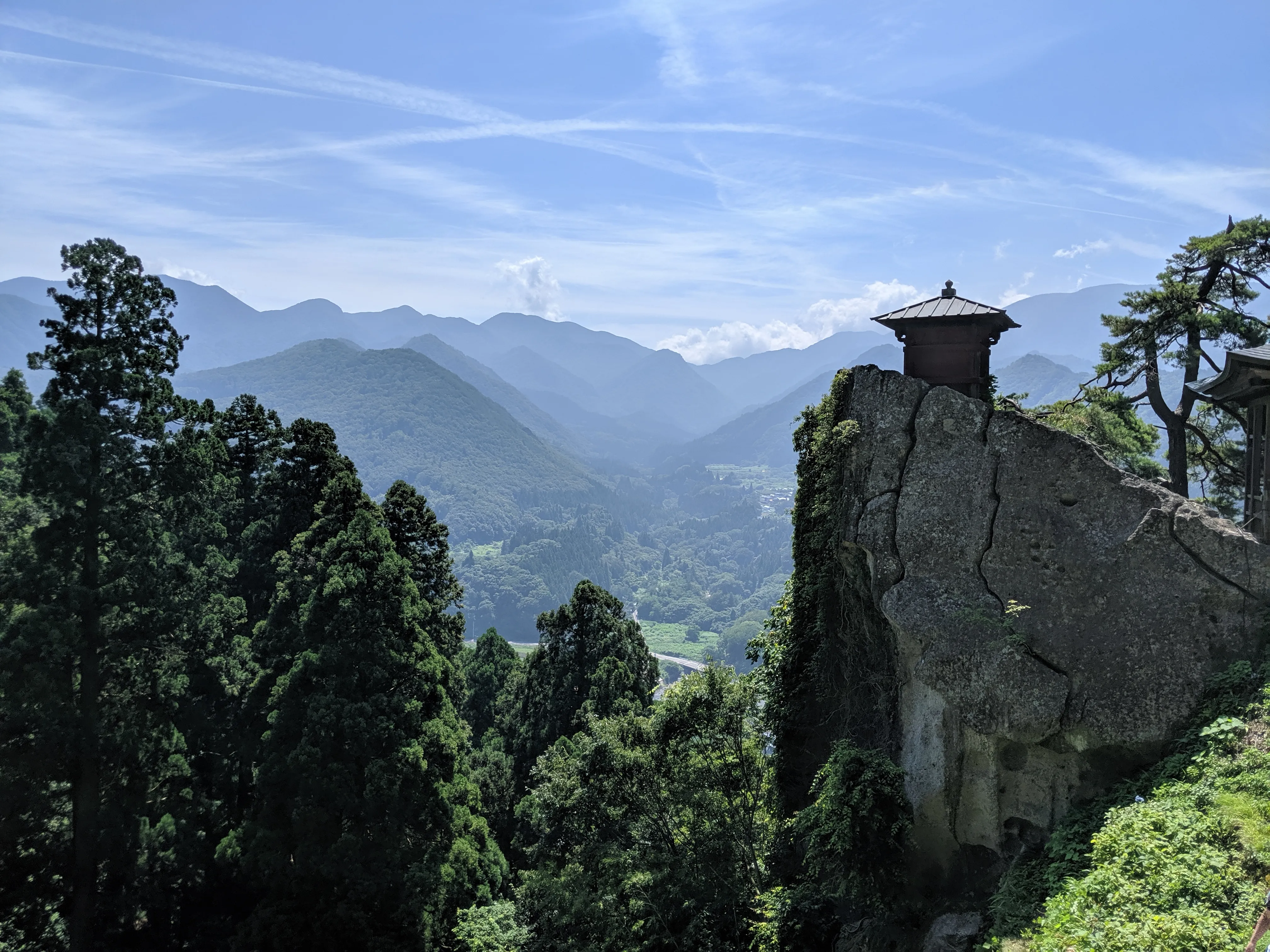
Yamadera and the mountains.
Sapporo
I had hoped that Sendai, being several hours north of Tokyo, would be less intensely hot than Tokyo. While I was disappointed by the high-90s weather in Sendai, the island of Hokkaido satisfied that desire. When I flew in into Sapporo, the capital, I was quickly drawn to some of the principle attractions. The Sapporo Beer Museum tells the history of Sapporo beer (including the years when the company did not have the technology to produce beer bottles, and was forced to import used bottles from Europe, clean them, and reuse them). I visited a number of speakeasy’s for a cocktail, and tasted Hokkaido’s most famous dish. Jingisukan (pronounced “Genghis Khan”) is essentially just grilled mutton and vegetables prepared on a dome-shaped skillet (alluding to the Mongolian soldier’s helmets). Yum!
I also visited Moerenuma Park, a 454 acre park designed by late sculptor and designer Isamu Noguchi. While I had completely forgotten this at the time (my visit was instigated on pure interest in the few photos I saw on Google Maps), Noguchi and Moerenuma Park were the subject of an
excellent 99% Invisible episode
I had listened to just weeks earlier. Noguchi considered the park to be a playground, and was pioneer of non-directive play, a philosophy that says that children don’t need instructions for how to play. To quote the episode, Noguchi believed that “if you give children an abstract surreal landscape, they can interpret it however they want. They can make up stories and have adventures and use their intuition to play in a thousand different ways.”
The park, designed by Noguchi and completed by his collaborator Shoji Sadao shortly following Noguchi’s death in 1988, is the “amalgamation of greatest hits of Noguchi’s unexecuted land and playground ideas. In one spot.” Not only does it feature Play Mountain, one of Noguchi’s most famous designs, it also has a fountain show and a forest full of abstract play-structure concepts. I have to admit, I felt like a kid. Standing on top of Play Mountain, I started walking, then jogging, then running, then sprinting down massive curving ramp to the bottom.
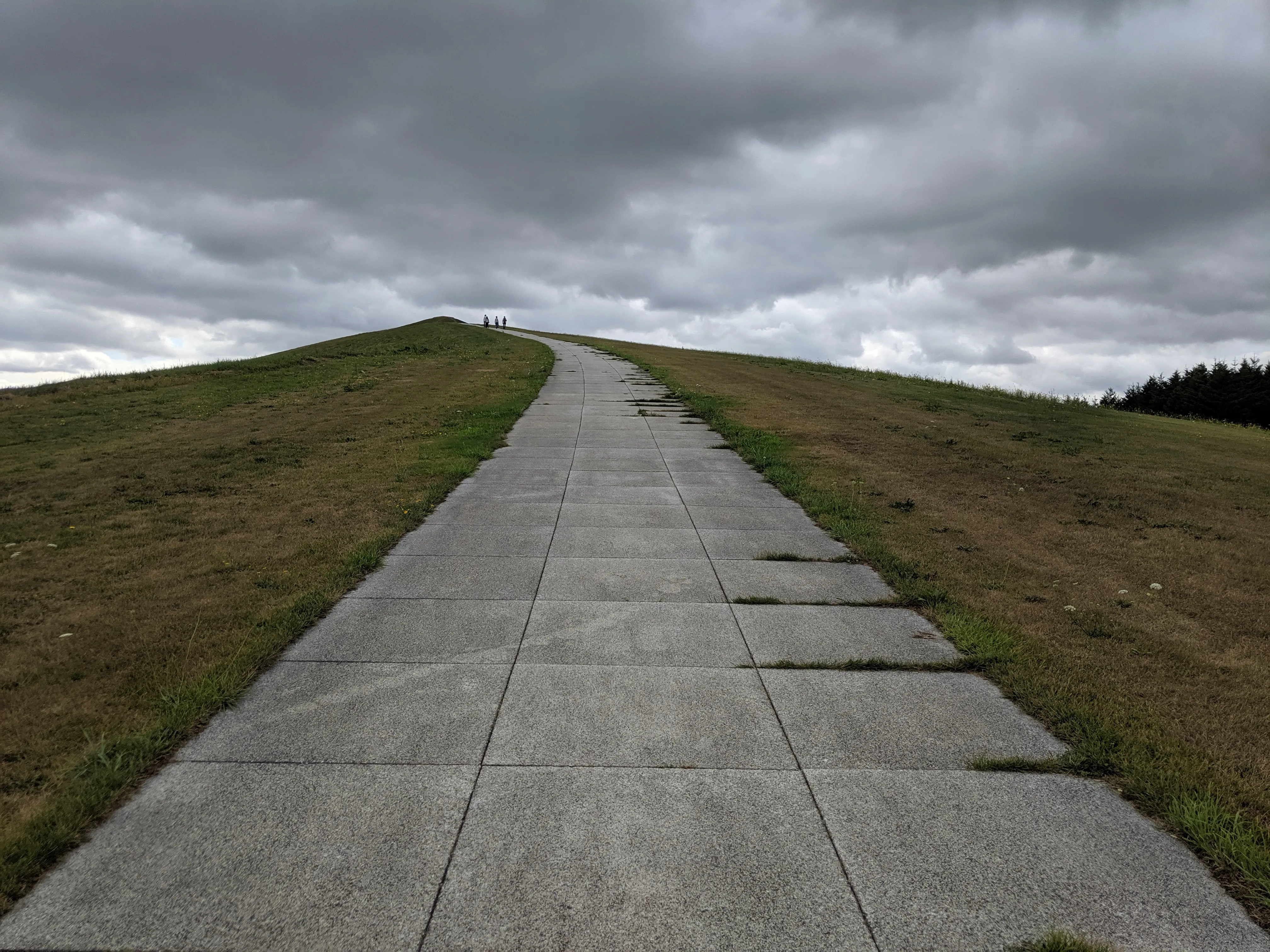
The ramp to the top of Play Mountain.
The ascent to the top of the park's highest hill. This kid ran all the way up the hill!
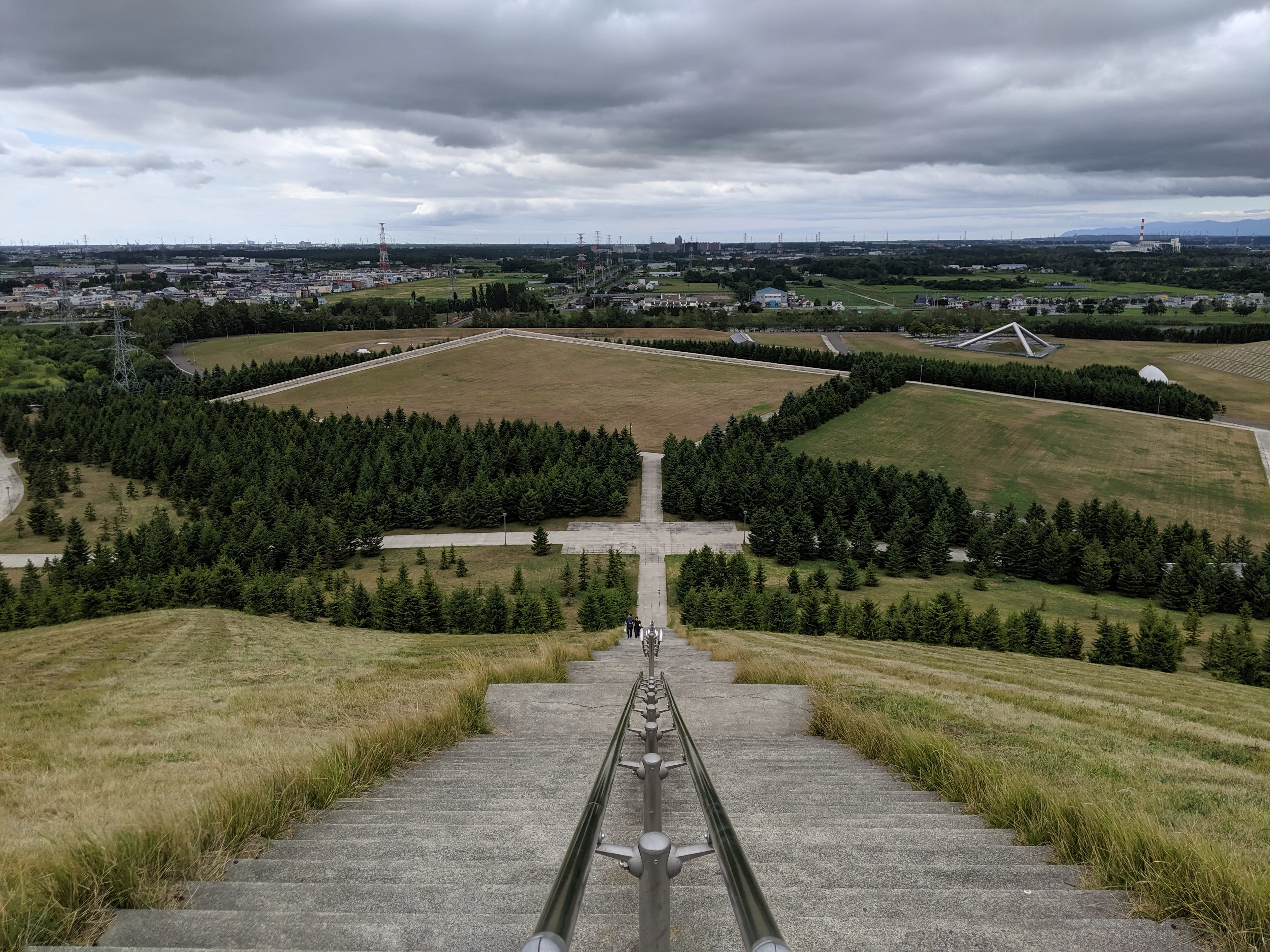
A view of Moerenuma Park from its highest point.
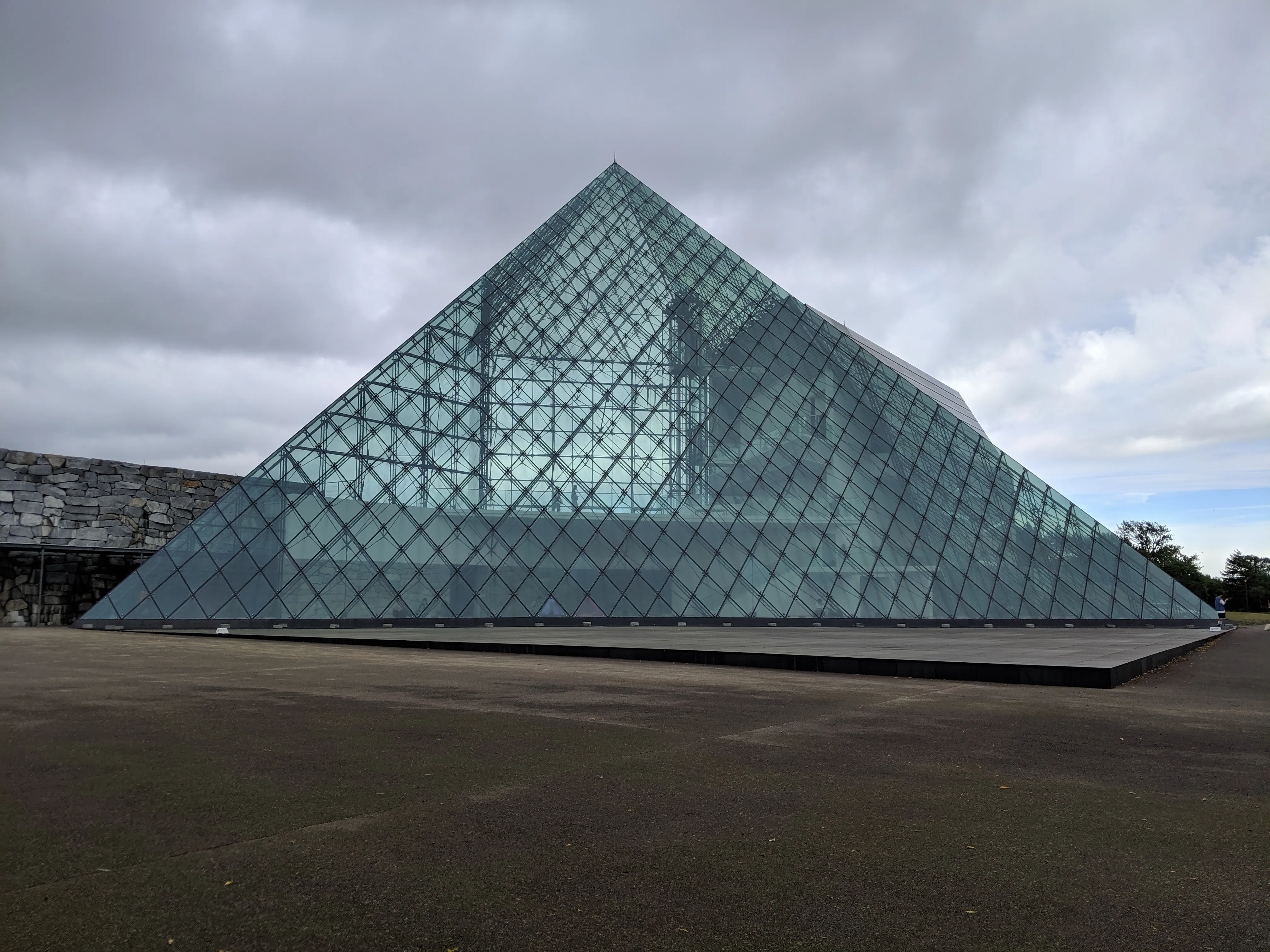
The park's museum gives off Louvre vibes.
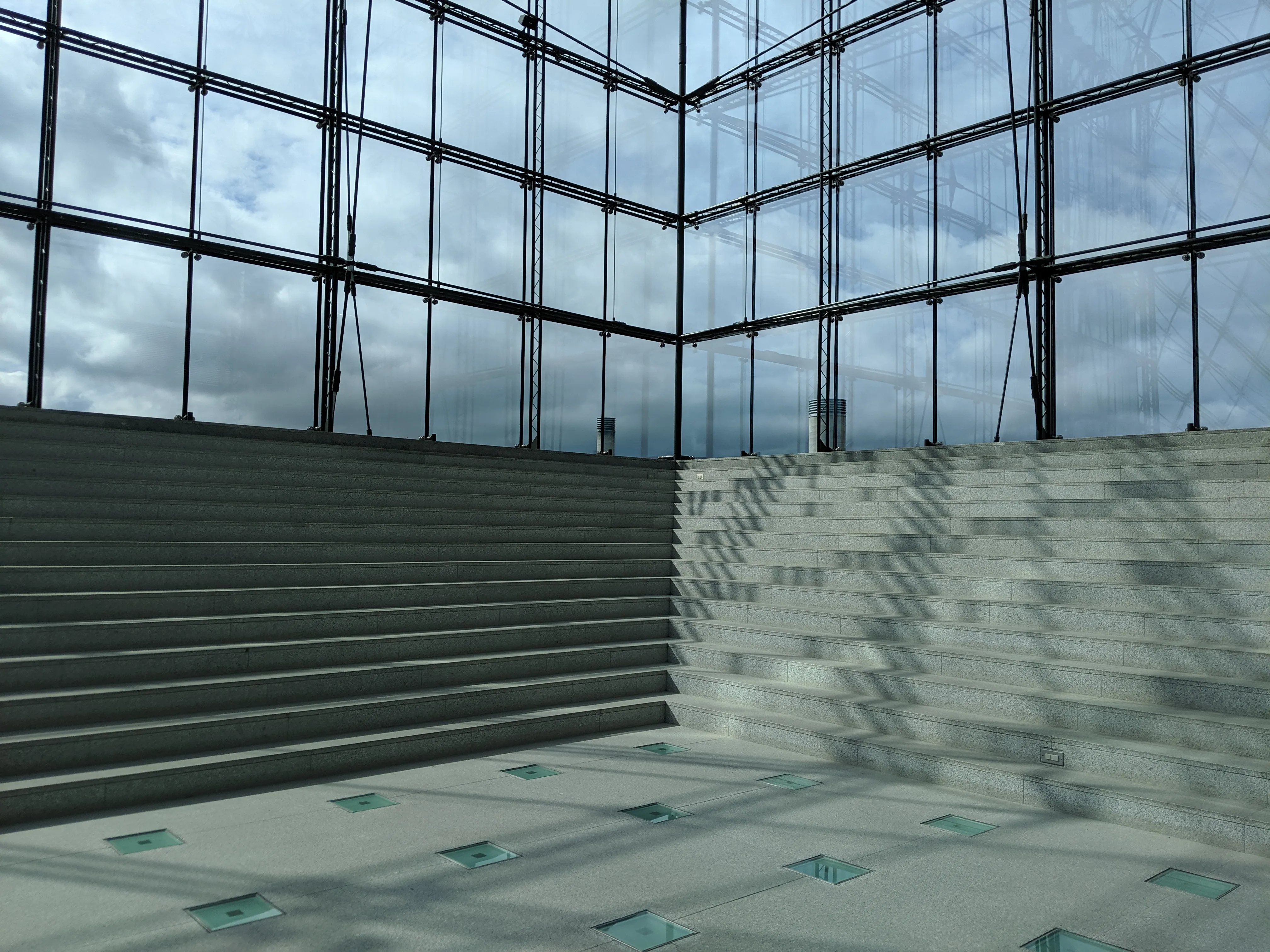
I love the way the light plays on the stairs.
Some of Noguchi's play structures.
One of my favorite things to do in Japan is go up into the mountains and spend a night at a Ryokan. While I had been with a group of friends earlier in the trip, in my solo portion I was able to find one with a much more extensive set of outdoor baths. Definitely worth the research; there’s nothing like sitting in a hot onsen outdoors at night, especially with just a little cold rain.
The Ryokan lobby was pretty cute. An interesting water feature on the back patio.
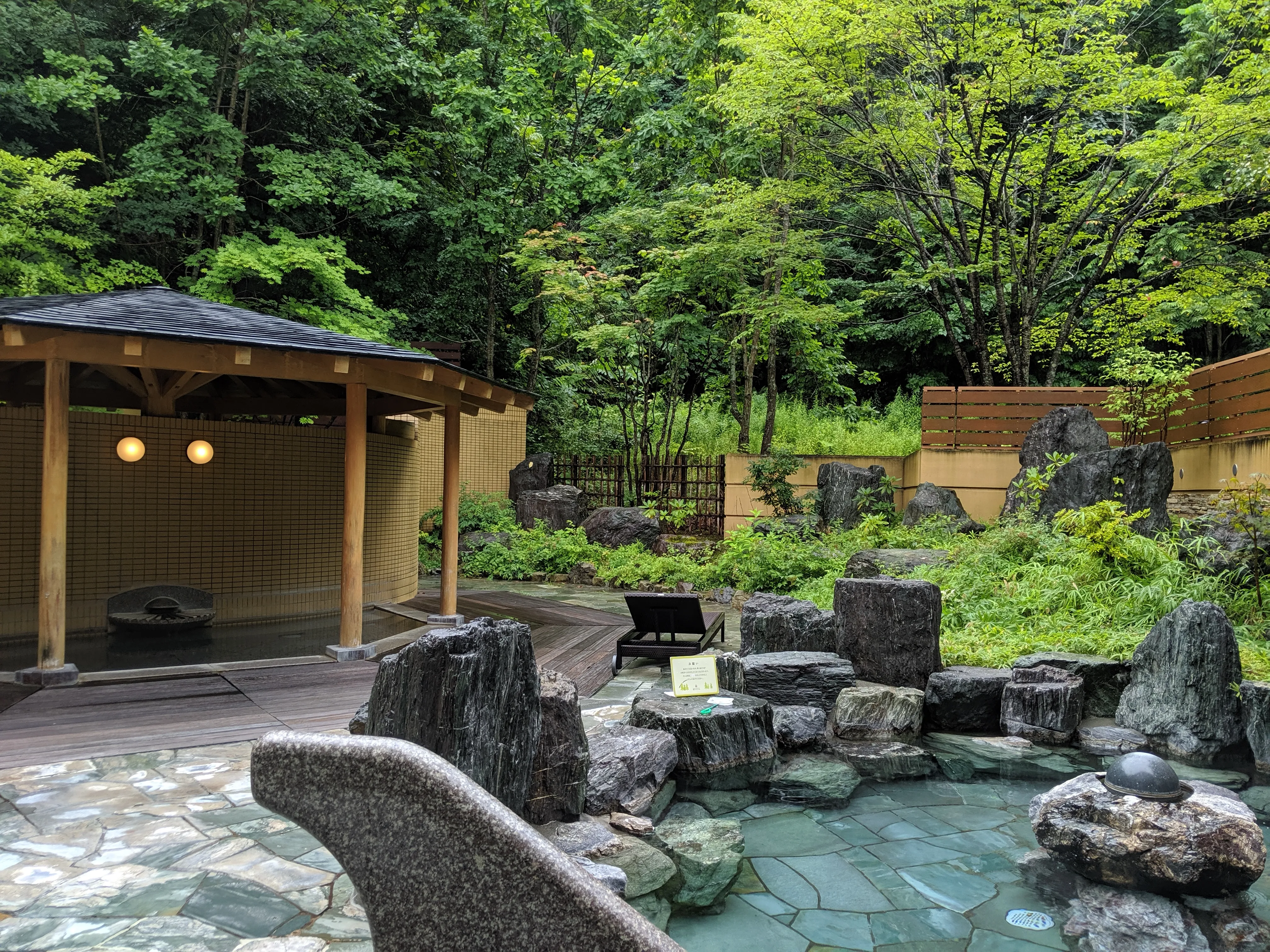
I snuck my phone into the bath at around 6 AM, when no one was around, to take this photo of the onsen.
Otaru and Shimamui
On my last day in Hokkaido, I took a day trip north to the port town of Otaru, and up the coast to Shimamui, a dramatic coastal region in west Hokkaido. Otaru, where I spent the morning, reminds me of a northern European city I haven’t yet visited. The canal is the centerpiece of the town, and is absolutely stunning.
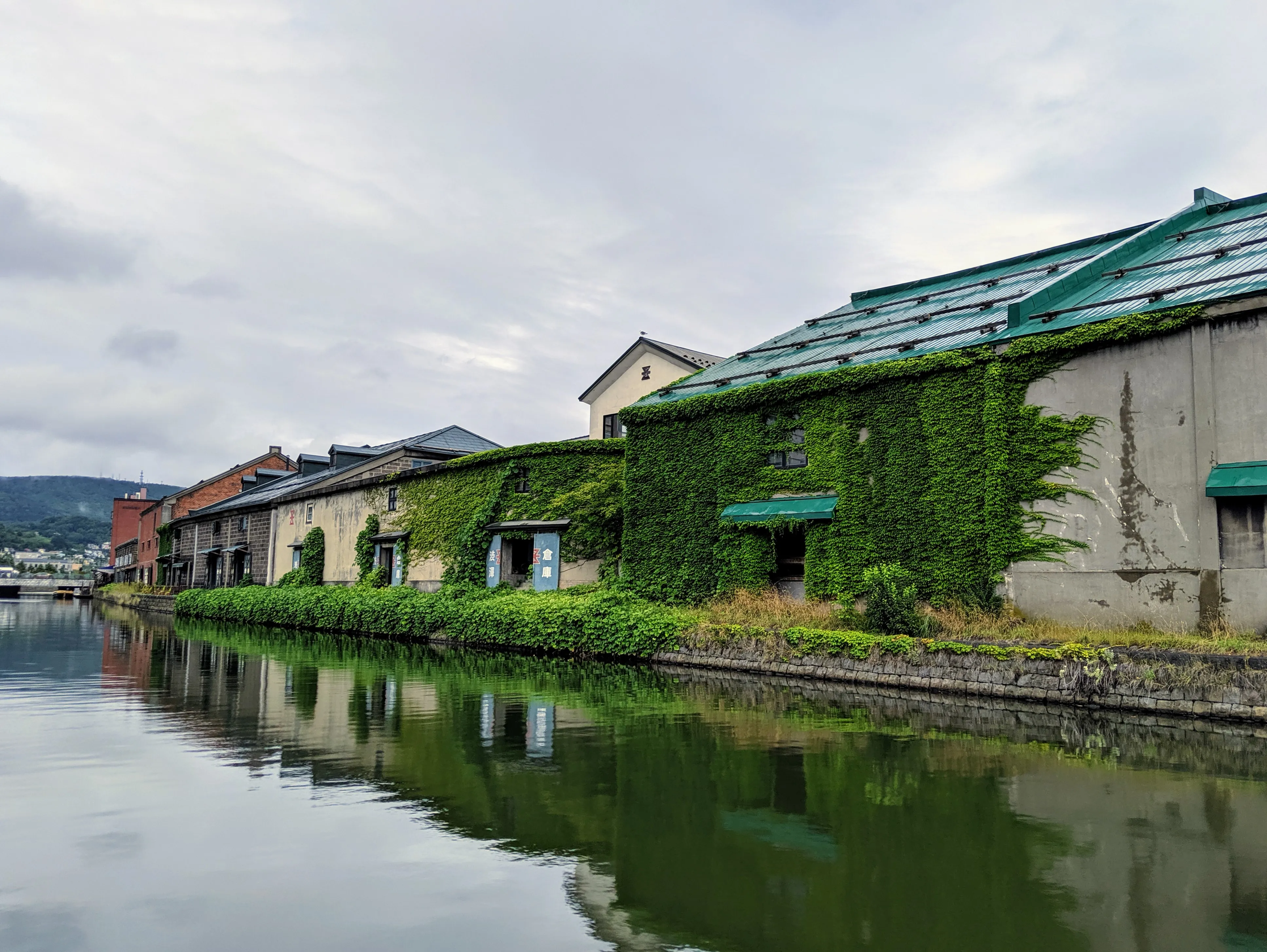
The Otaru canal is lined with vine-covered buildings.
I love how the buildings reflect in the canal.
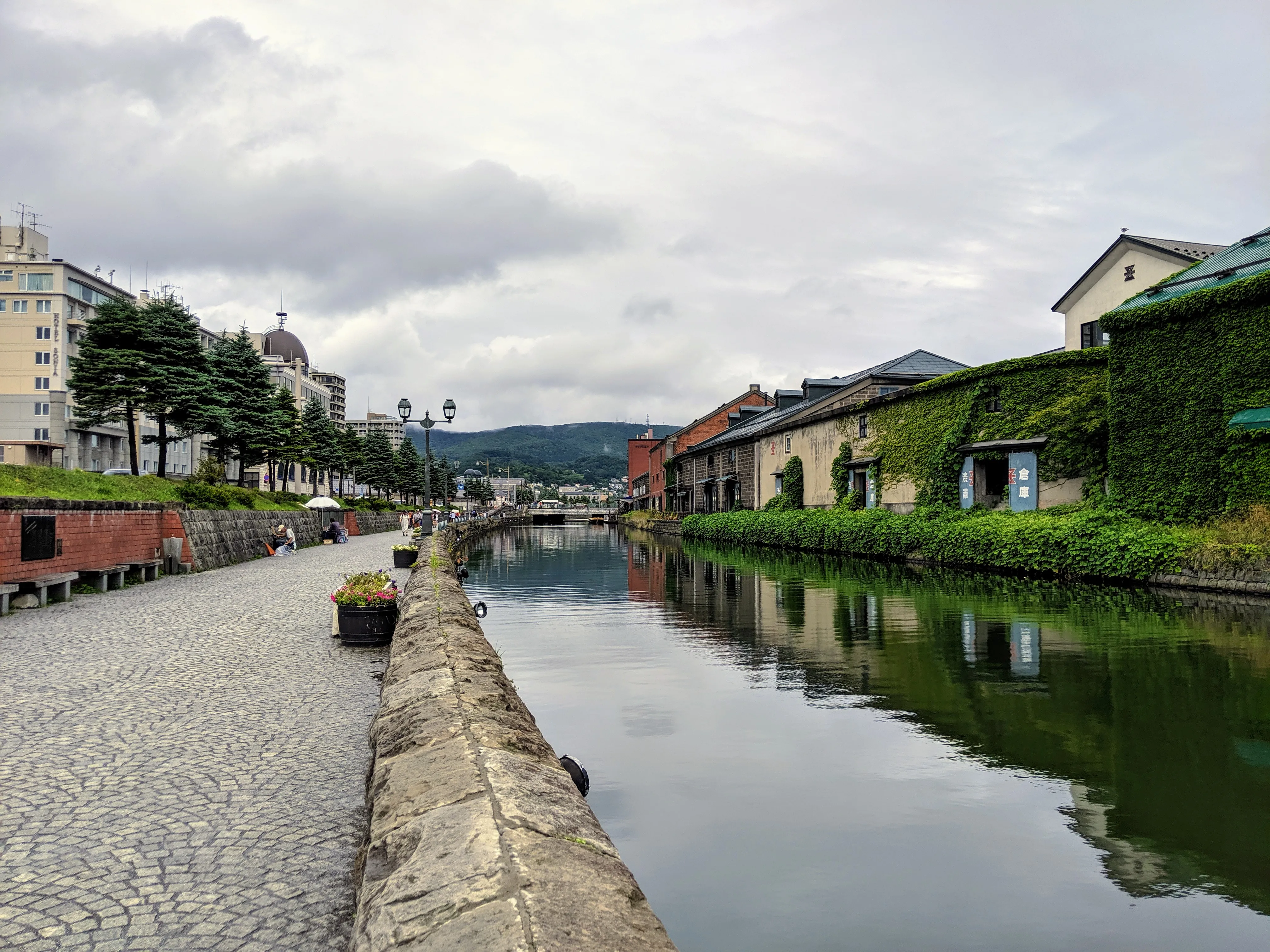
After brunch in Oatru, I headed north to Shimamui.
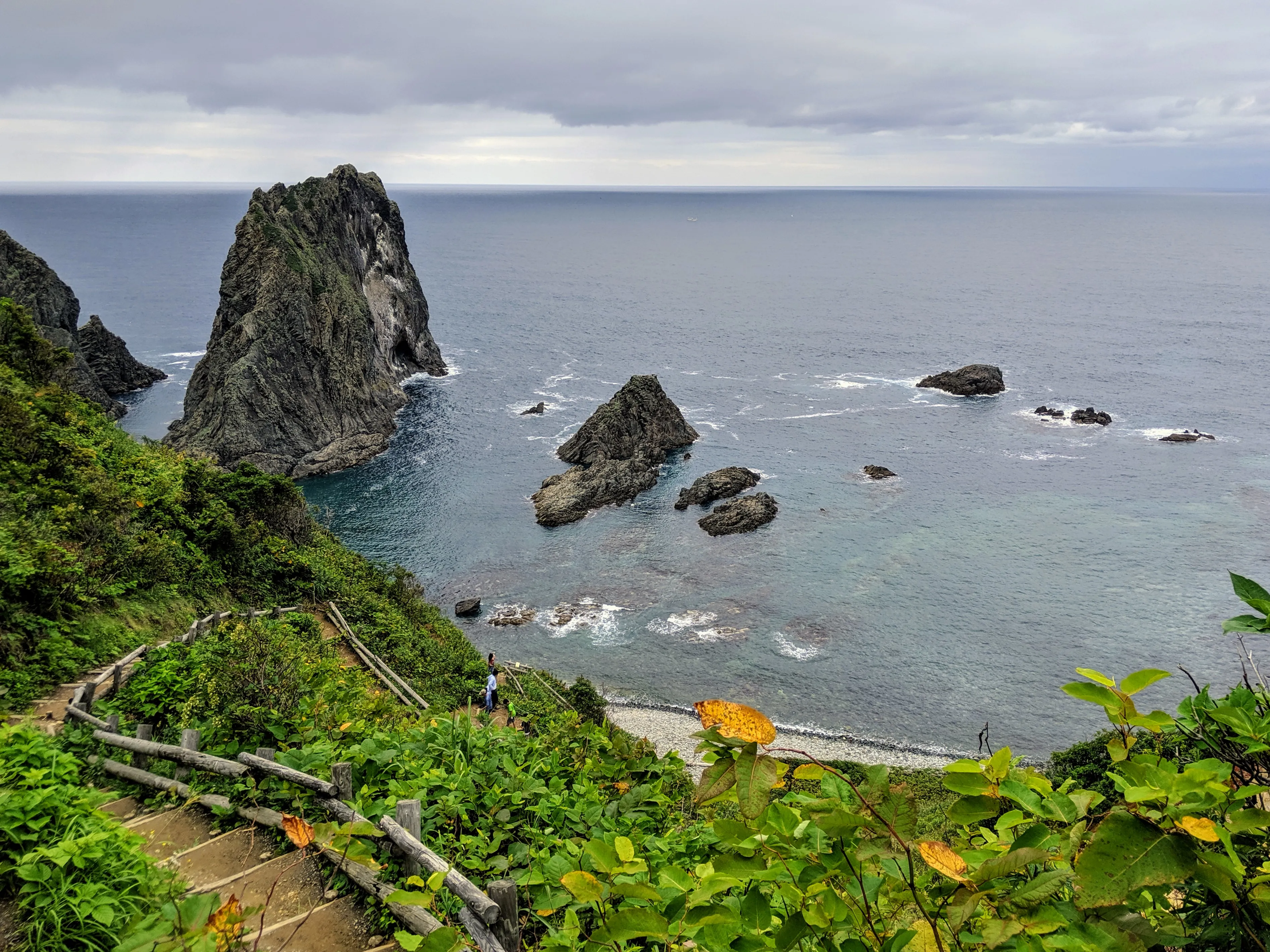
After a long bus ride and a pedestrian tunnel through a mountainside, I was greeted with this view.
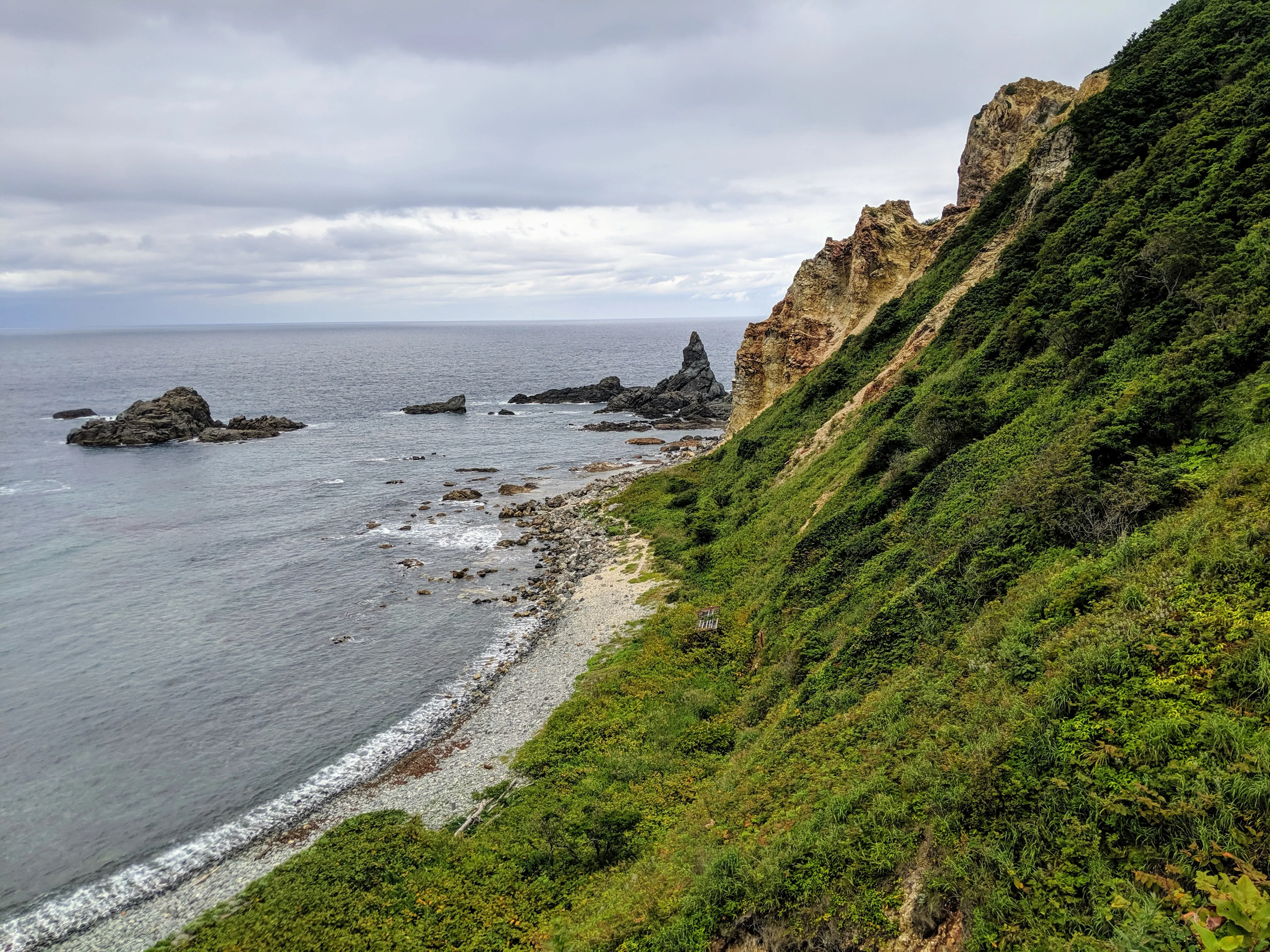
I love the different color rock in this shot.
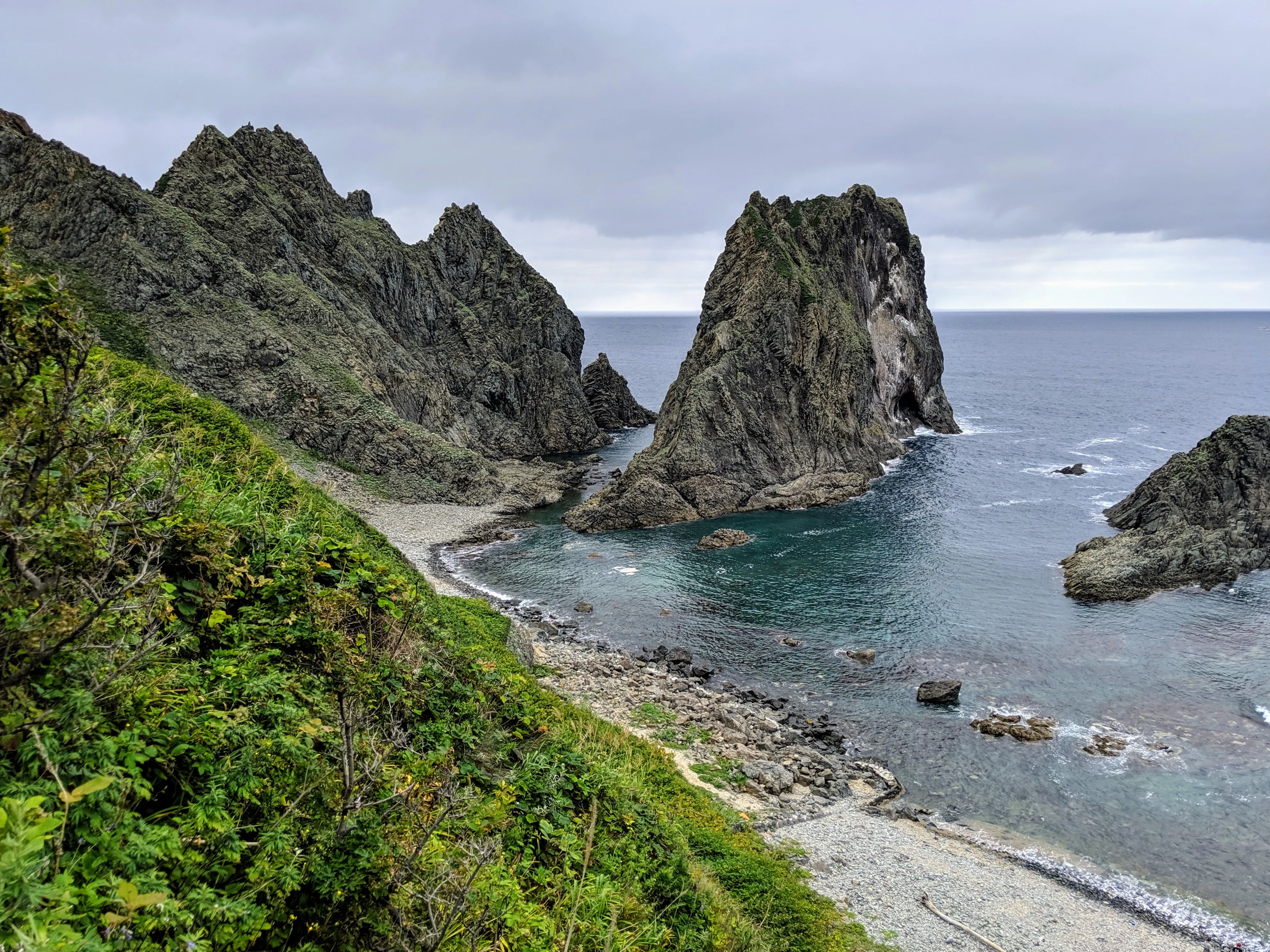
The dramatic cliffs remind me of the <a href="/travel/iceland-summer-2016#Snæfellsnes" target="_blank">sea coast of Snæfellsnes, Iceland</a> I visited three years earlier.
Hiking to the top of the cliff, I spotted a lighthouse and got a great view along the coastline.
Tokyo
My trip largely over, I flew back from Sapporo to Tokyo. With a 7 hour layover before my flight to the United States, I took the train into the city for lunch and a visit to the 21_21 Design Sight museum. They had an creepy but fascinating exhibit on insects.
